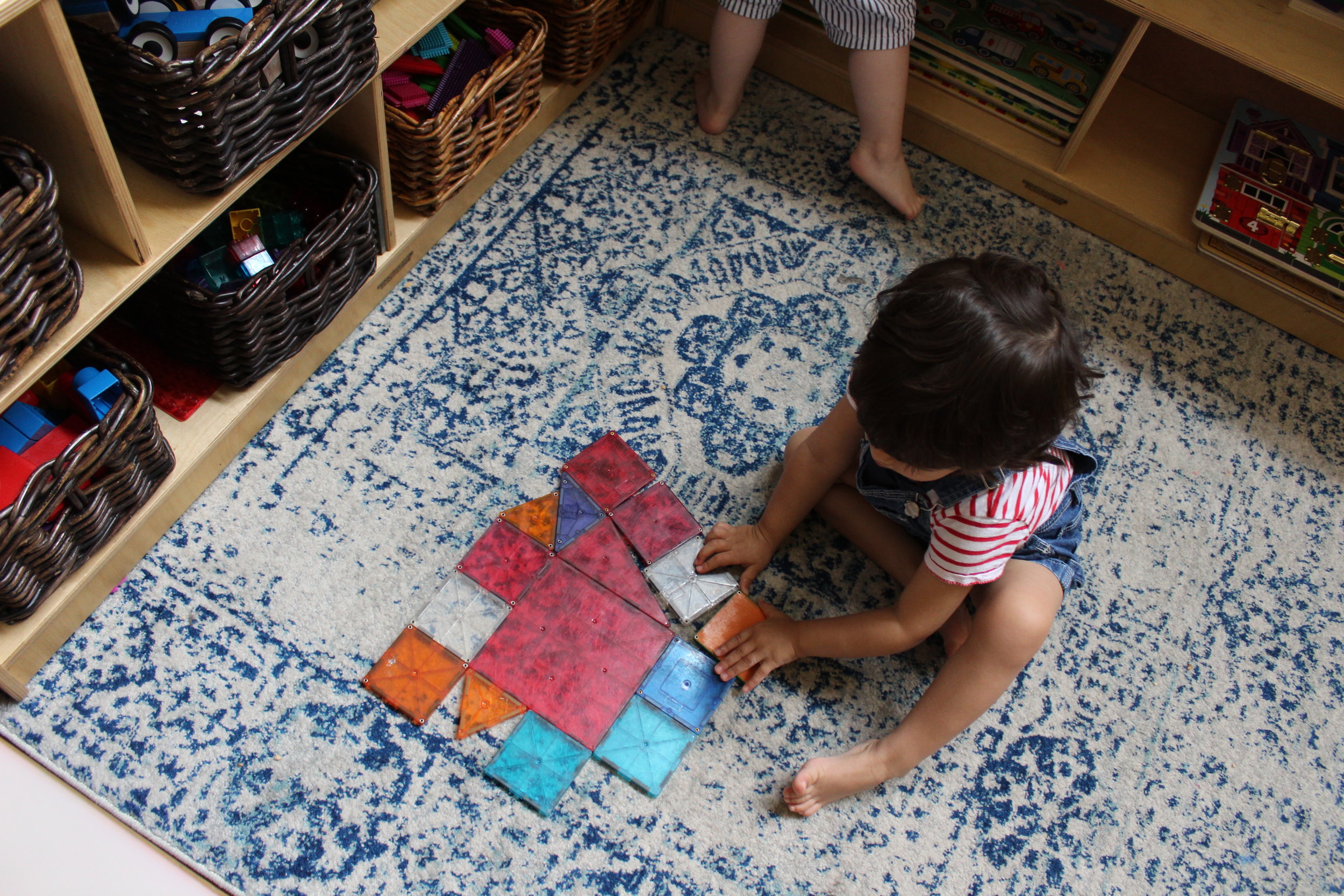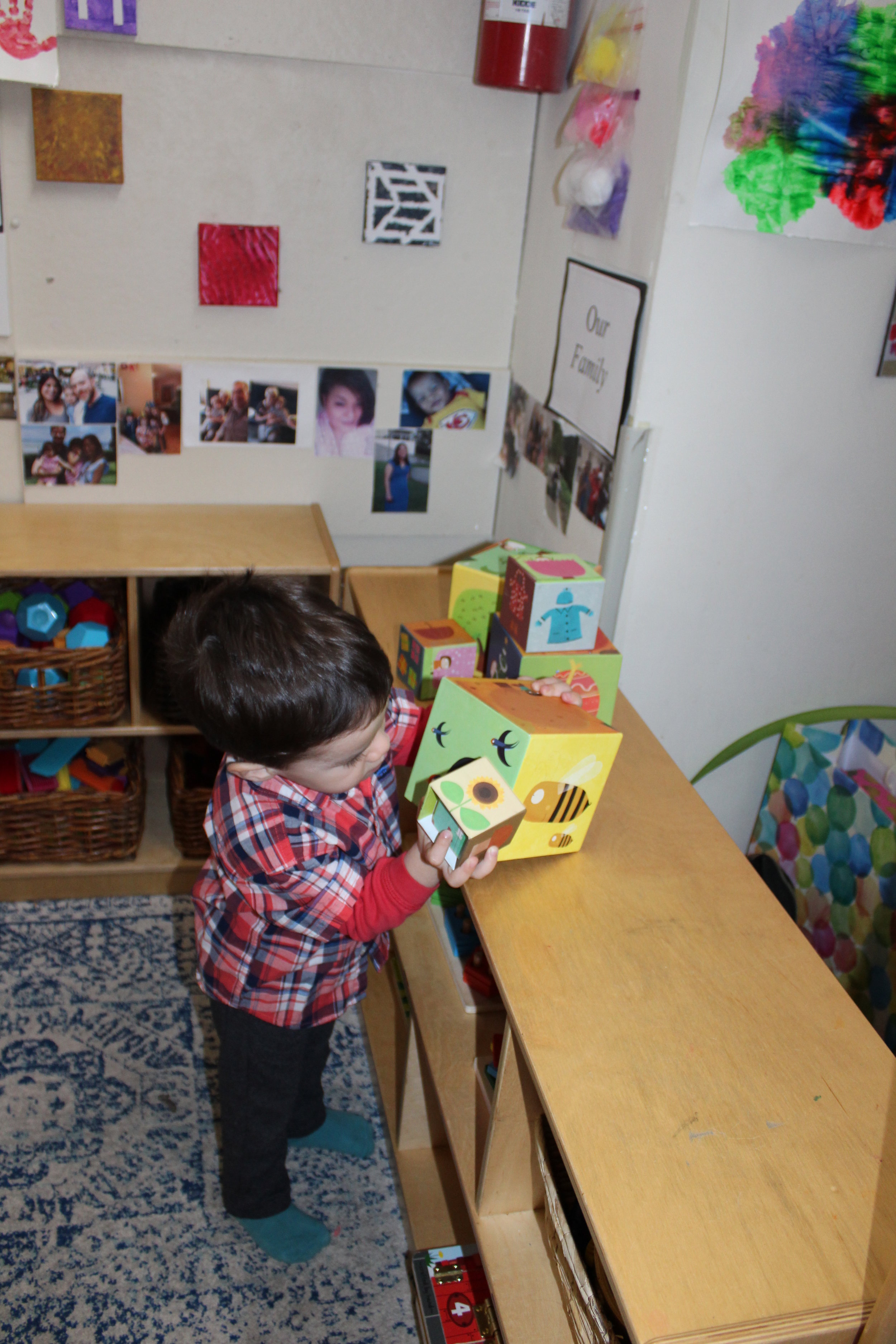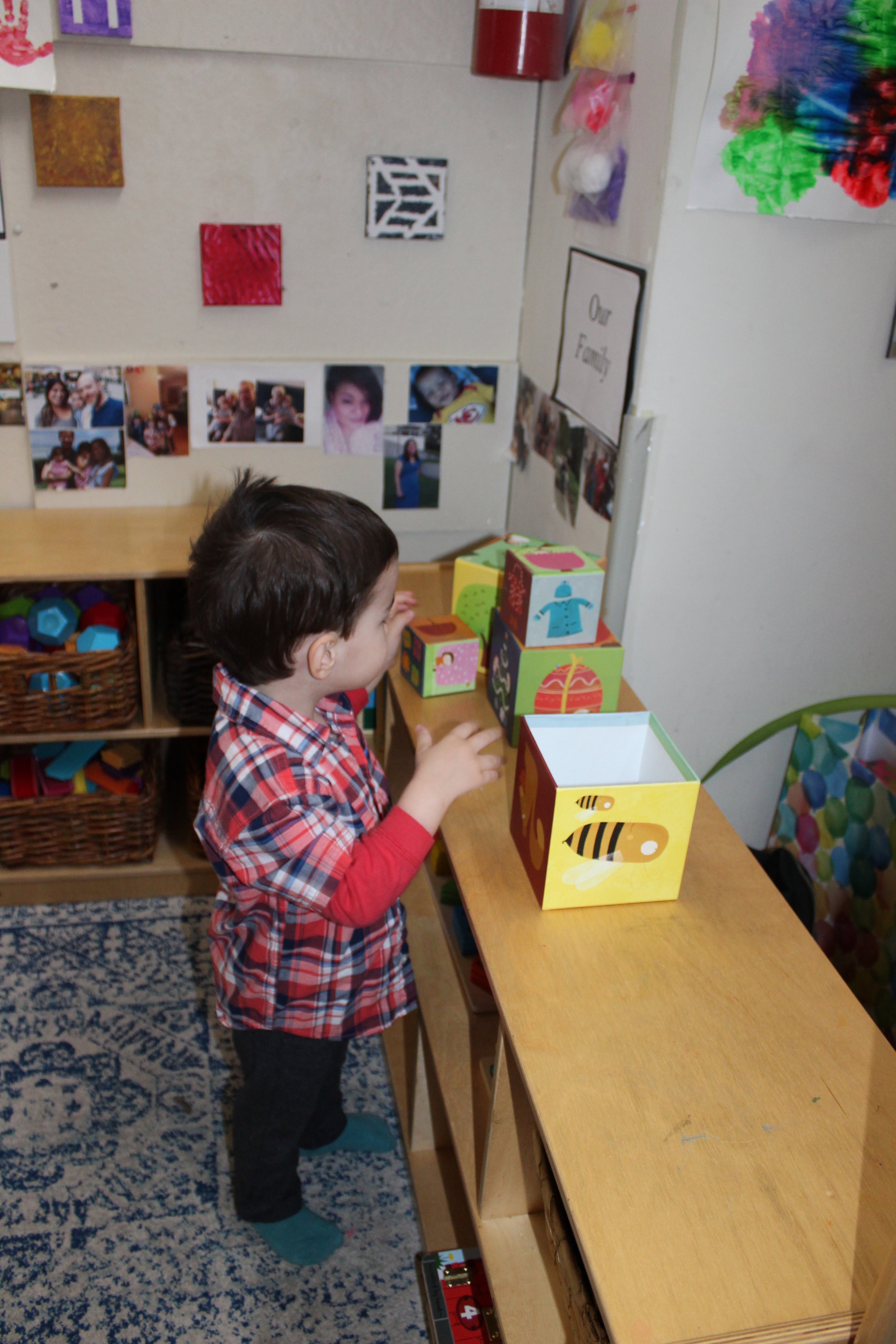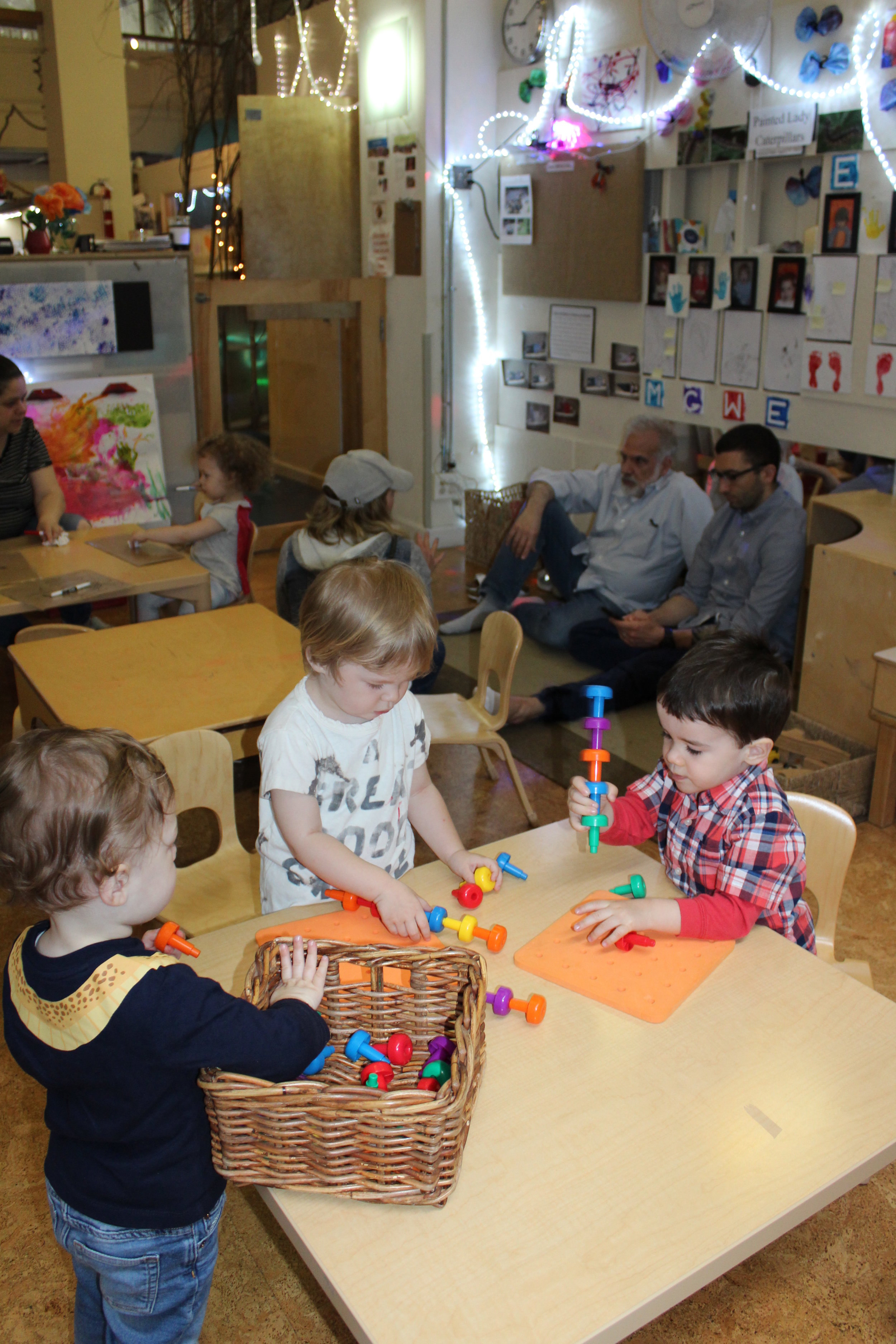Songs we sang and children's requests:
- ABC
- Mr. Sun
- The are 7 days in a Week.....
What's the Weather...
- 5 Little Ducks
- 5 Little Speckled Frogs
- Head and Shoulders, Knees and Toes
- Twinkle, Twinkle Little Star
- 5 Little Monkeys Swinging on a Tree
- Mr. Muffin
- Jump in the Water and more....
Books we Read:
- Bark George
- Pete the Cat (The Wheels on the Bus)
- You are My Sunshine (Book)
- Pete the Cat (I Love My White Shoes)
- Pete the Cat ( My Four Groovy Buttons) and many more.......
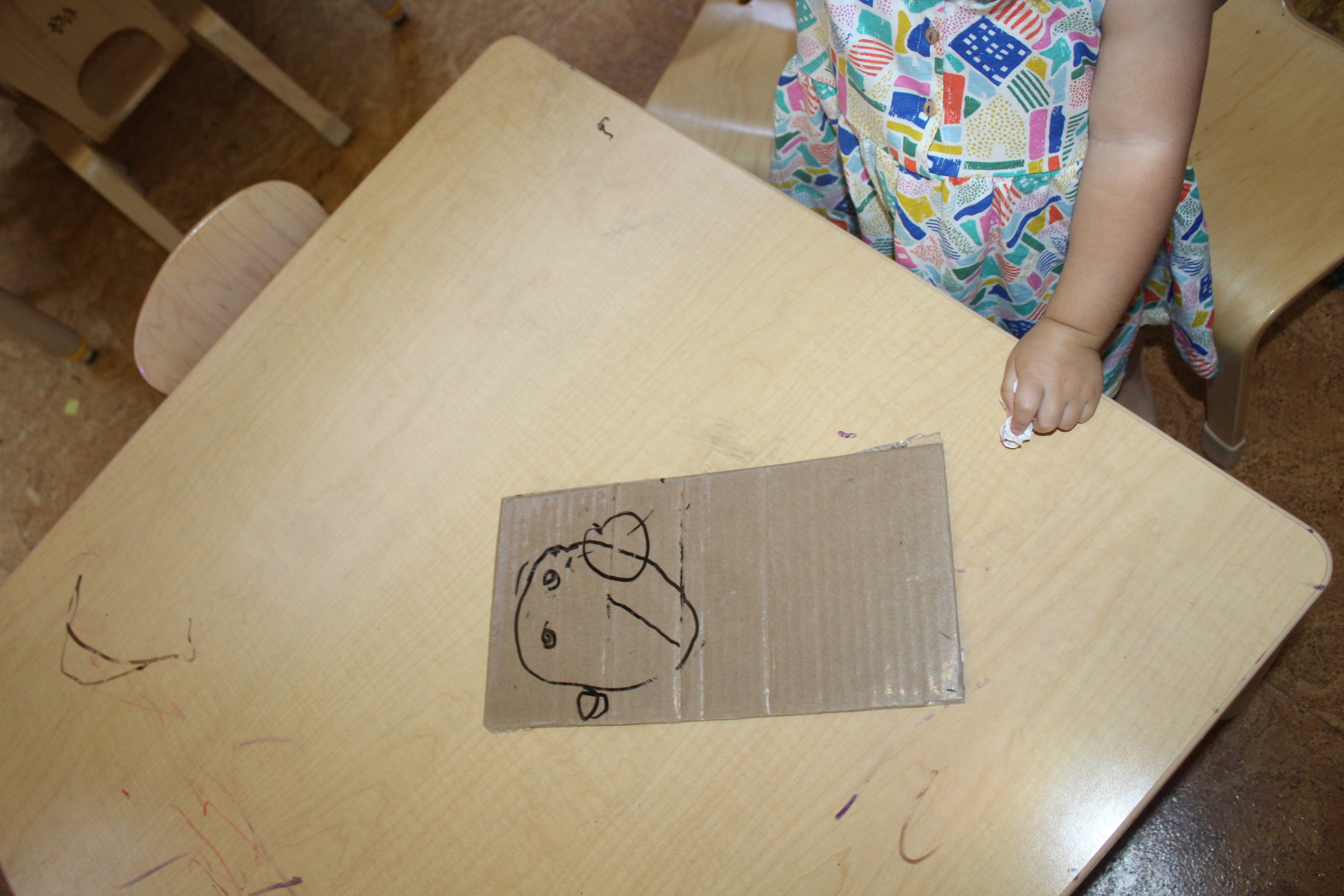
Rheya drew on the erasable contact paper, a circle (face), two smaller circles (eyes), two loops on the outside of the big circle (ears) and a line (nose). She articulated each feature as she drew.
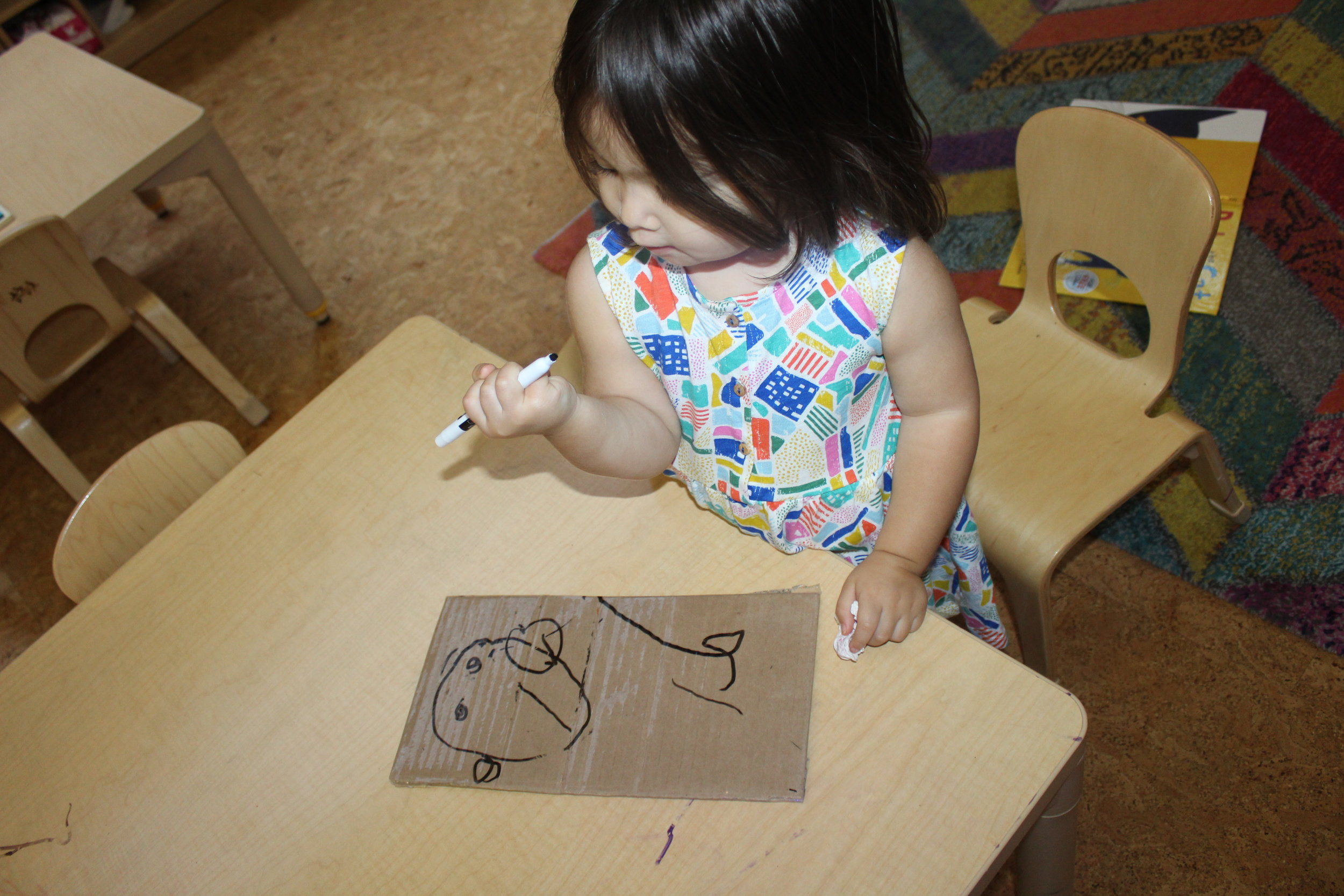
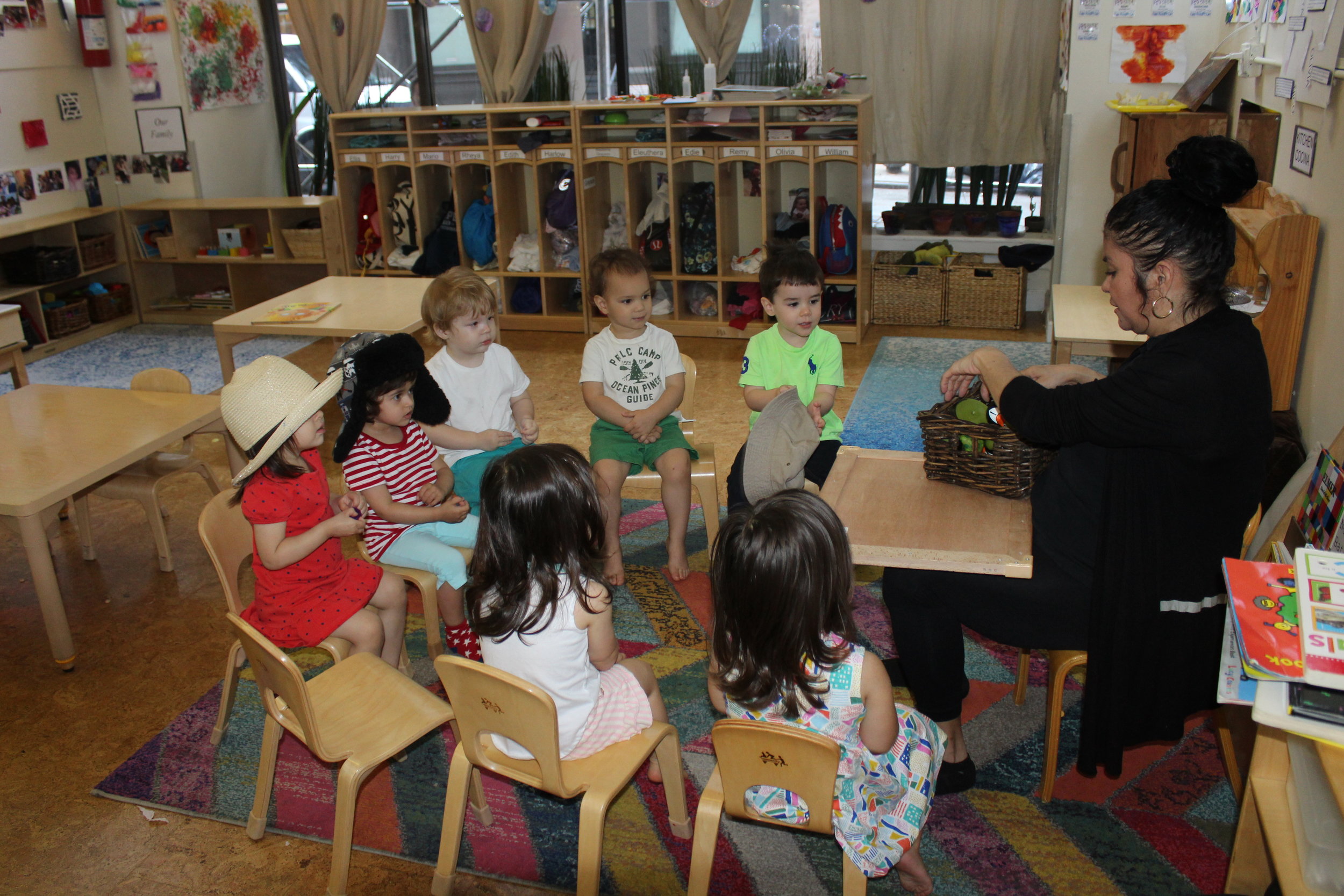
We sang Five Little Ducks with props.
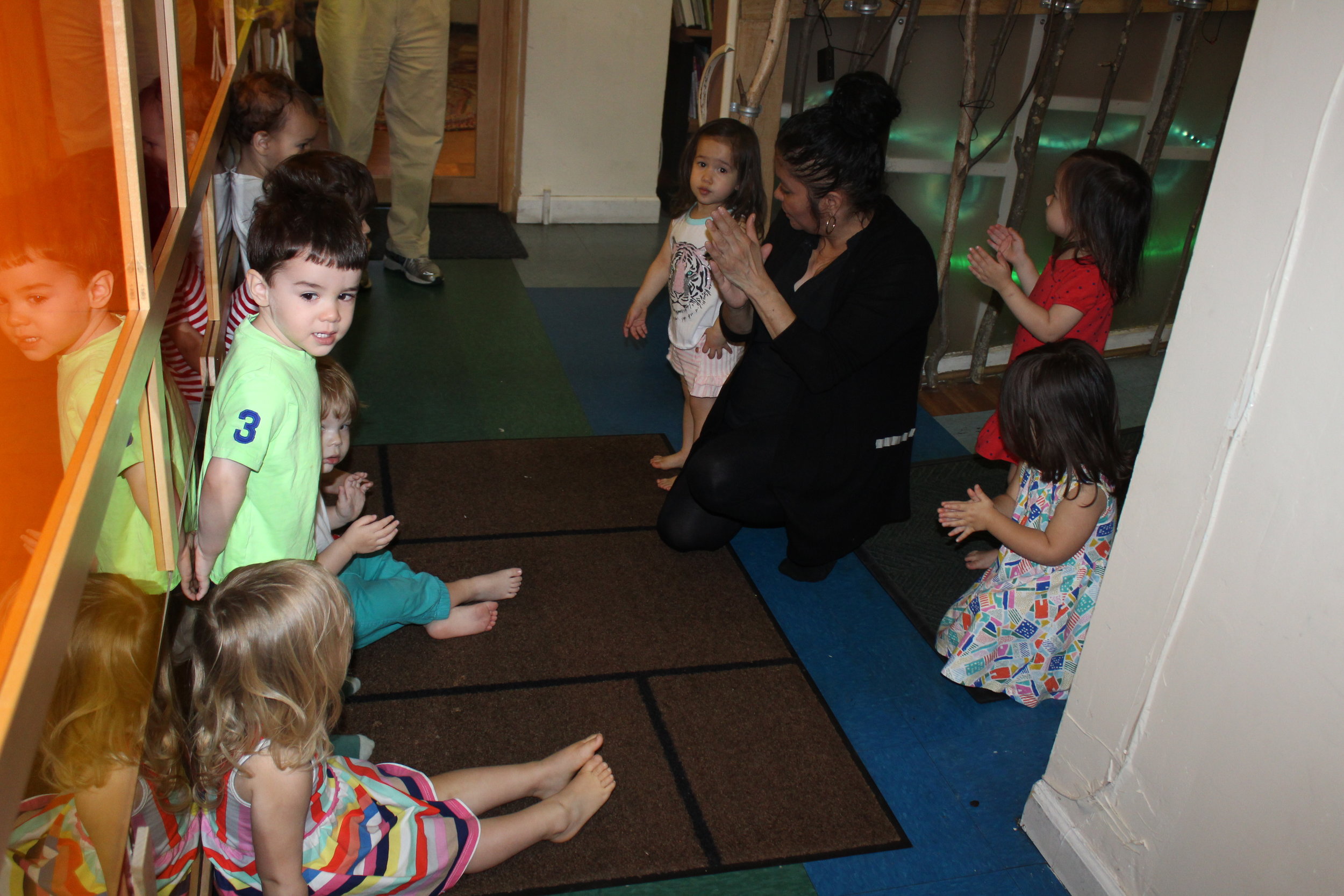
Our usual morning routine before we enter the gym is to line up against the wall and sing one song. On this day, three children took the initiative to lead the class and they sang the ABC song. The children are becoming more independent, expressive and adding more words to their sentences.
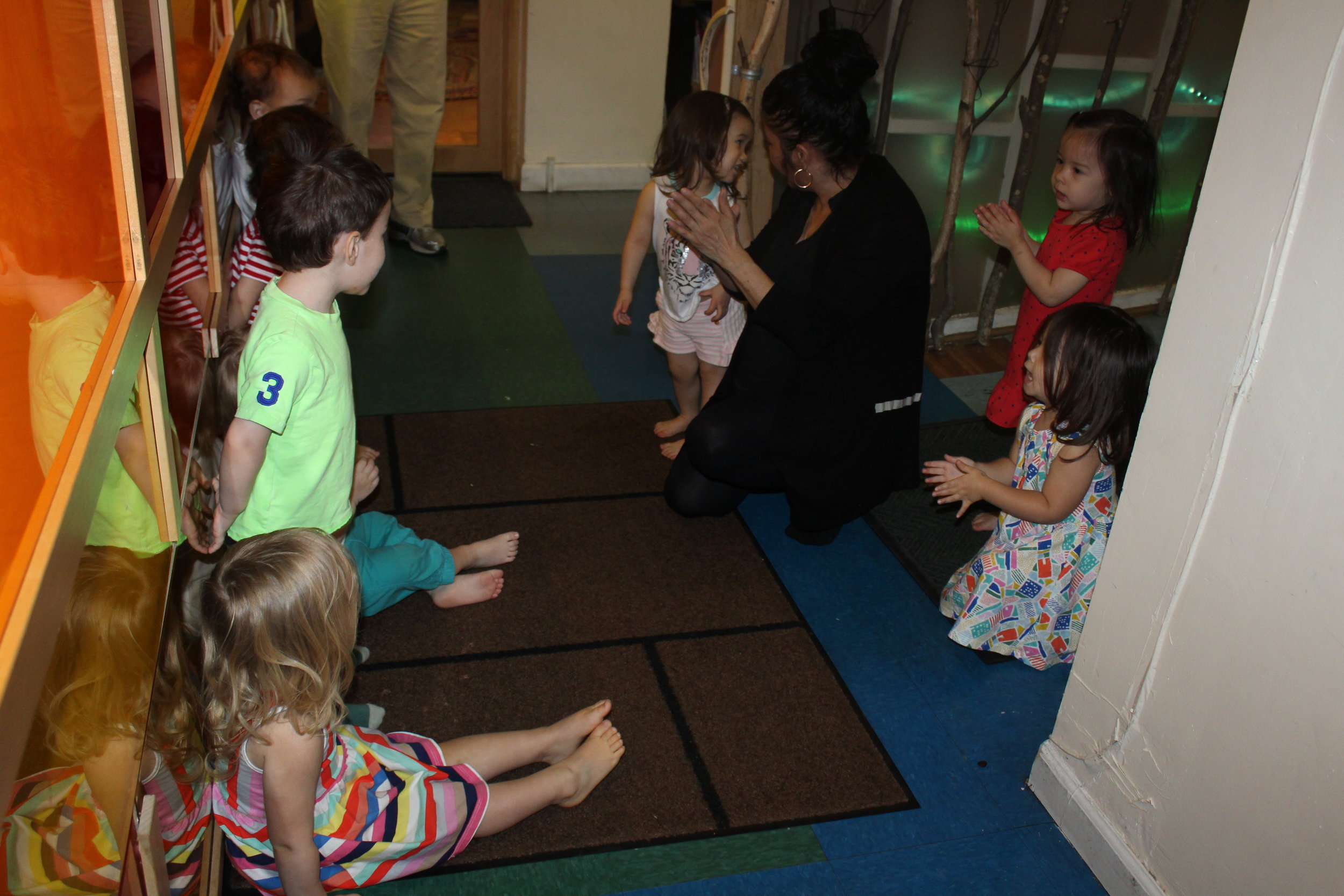
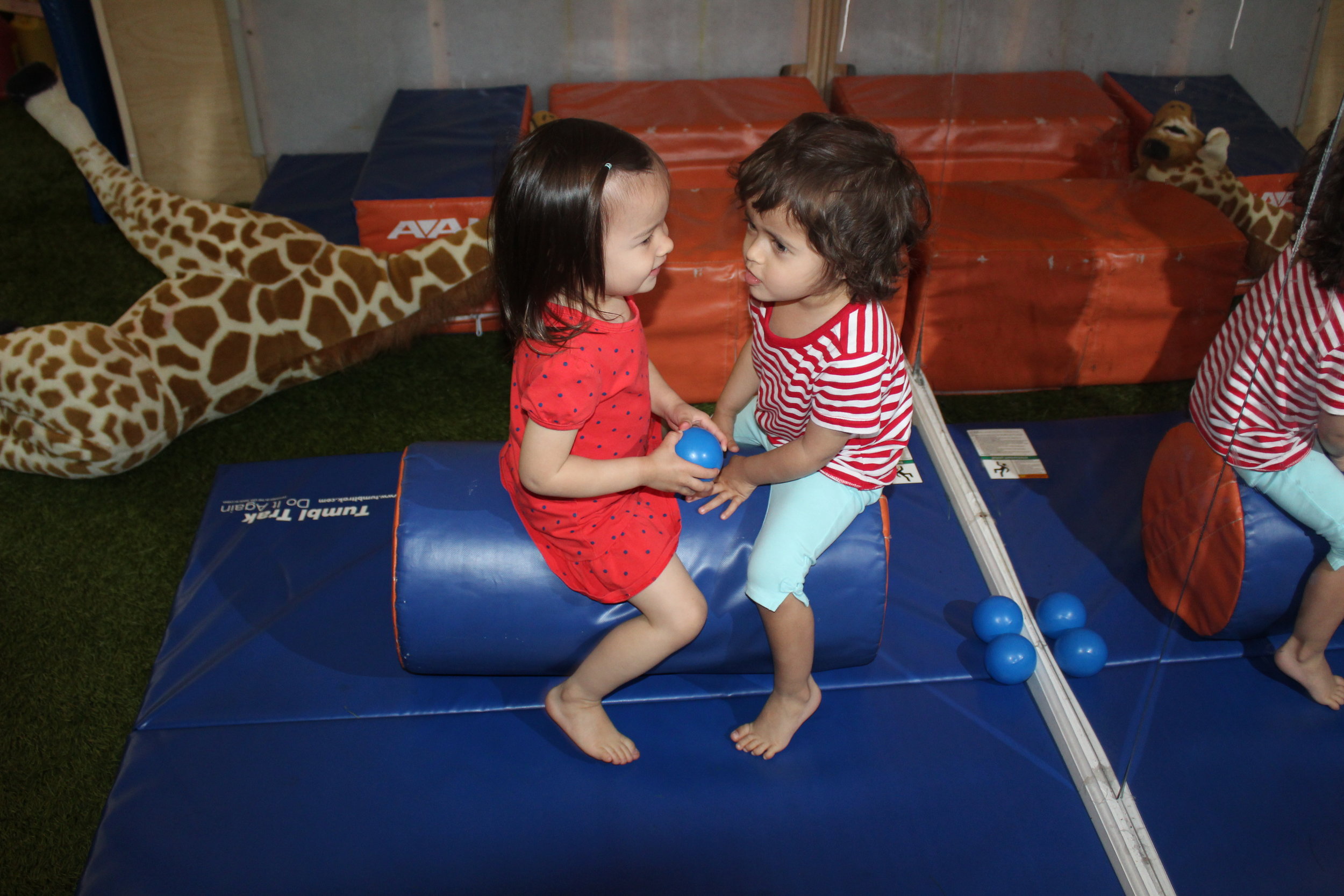
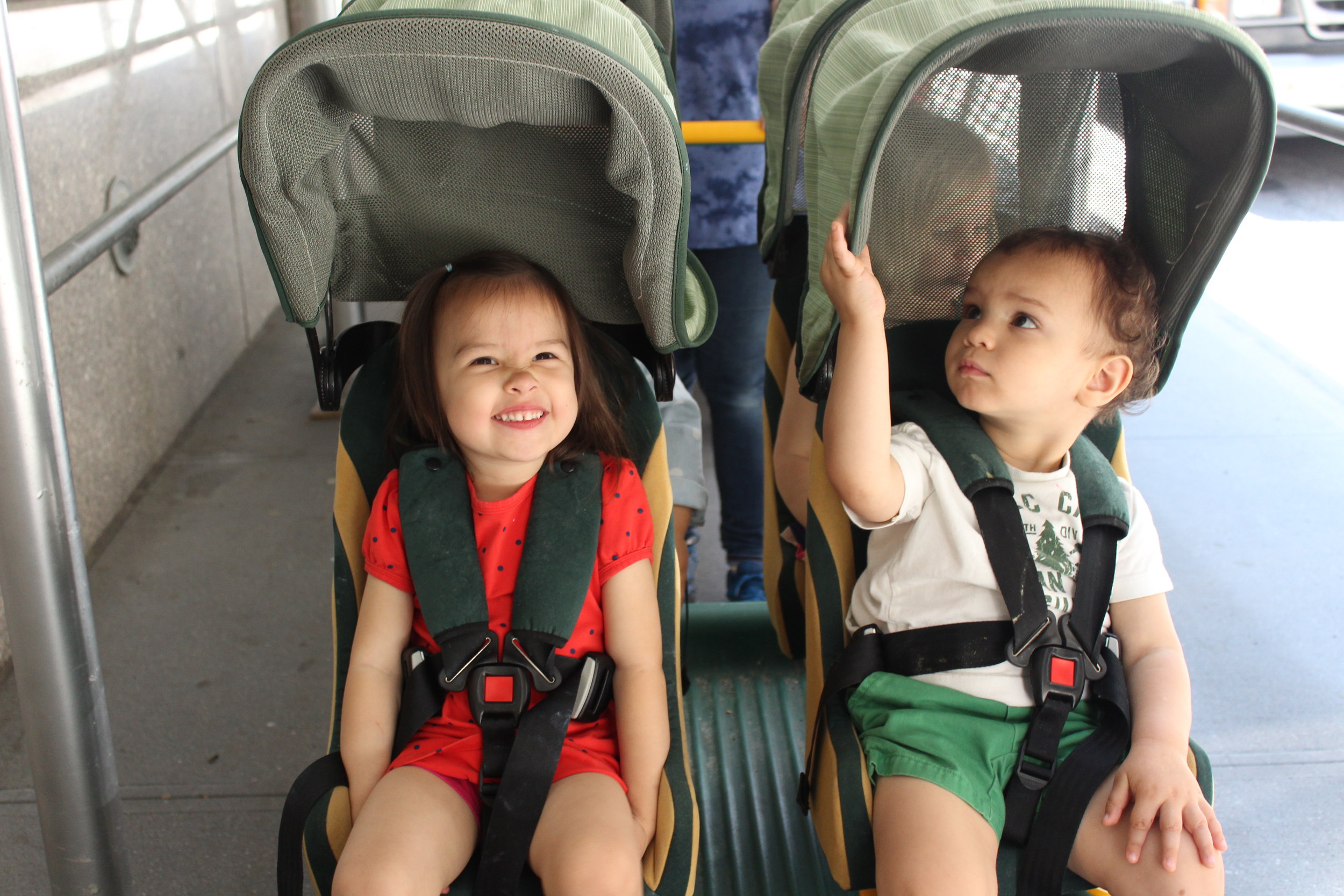
The children enjoyed a nice neighborhood stroll to Washington Market Park. .
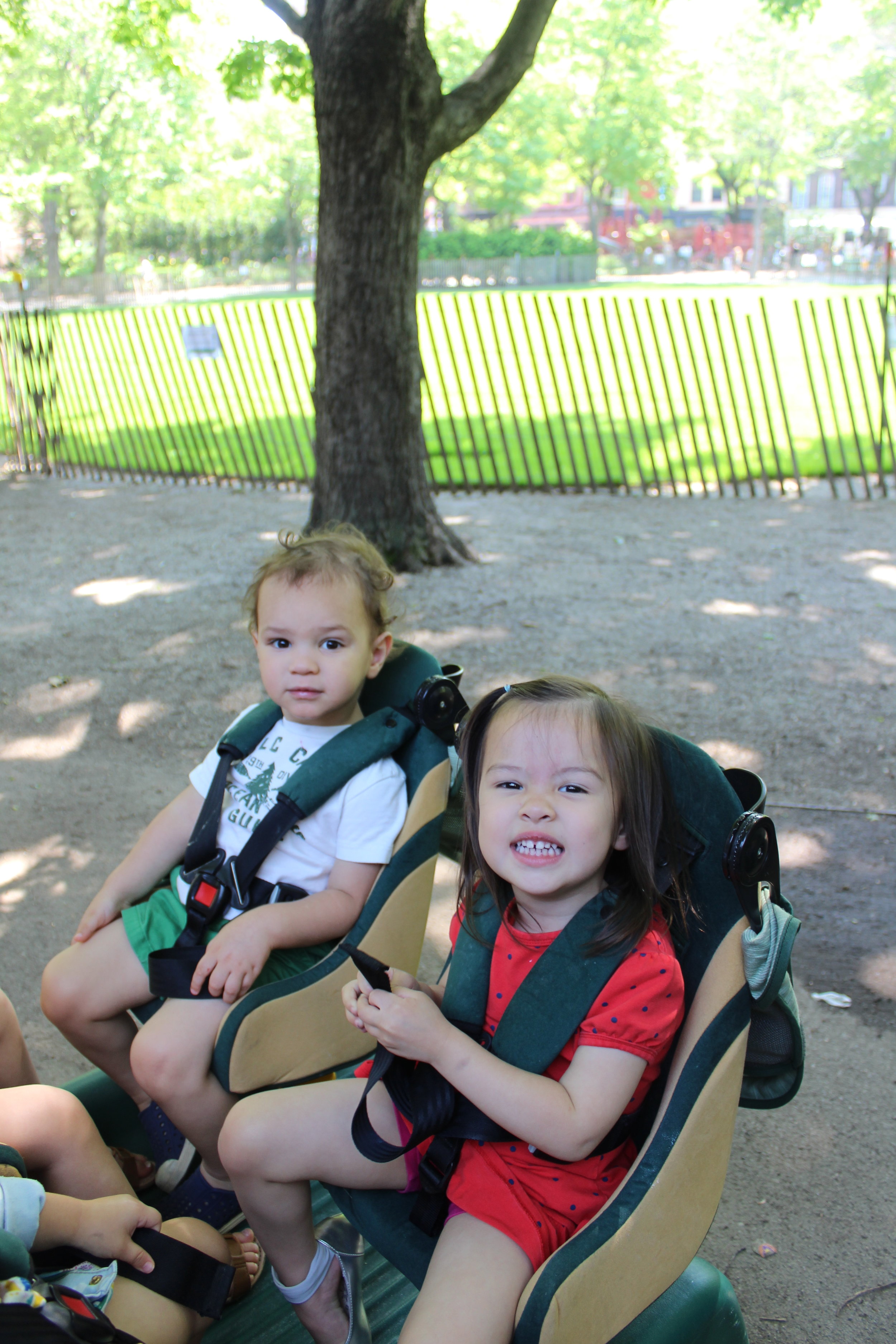
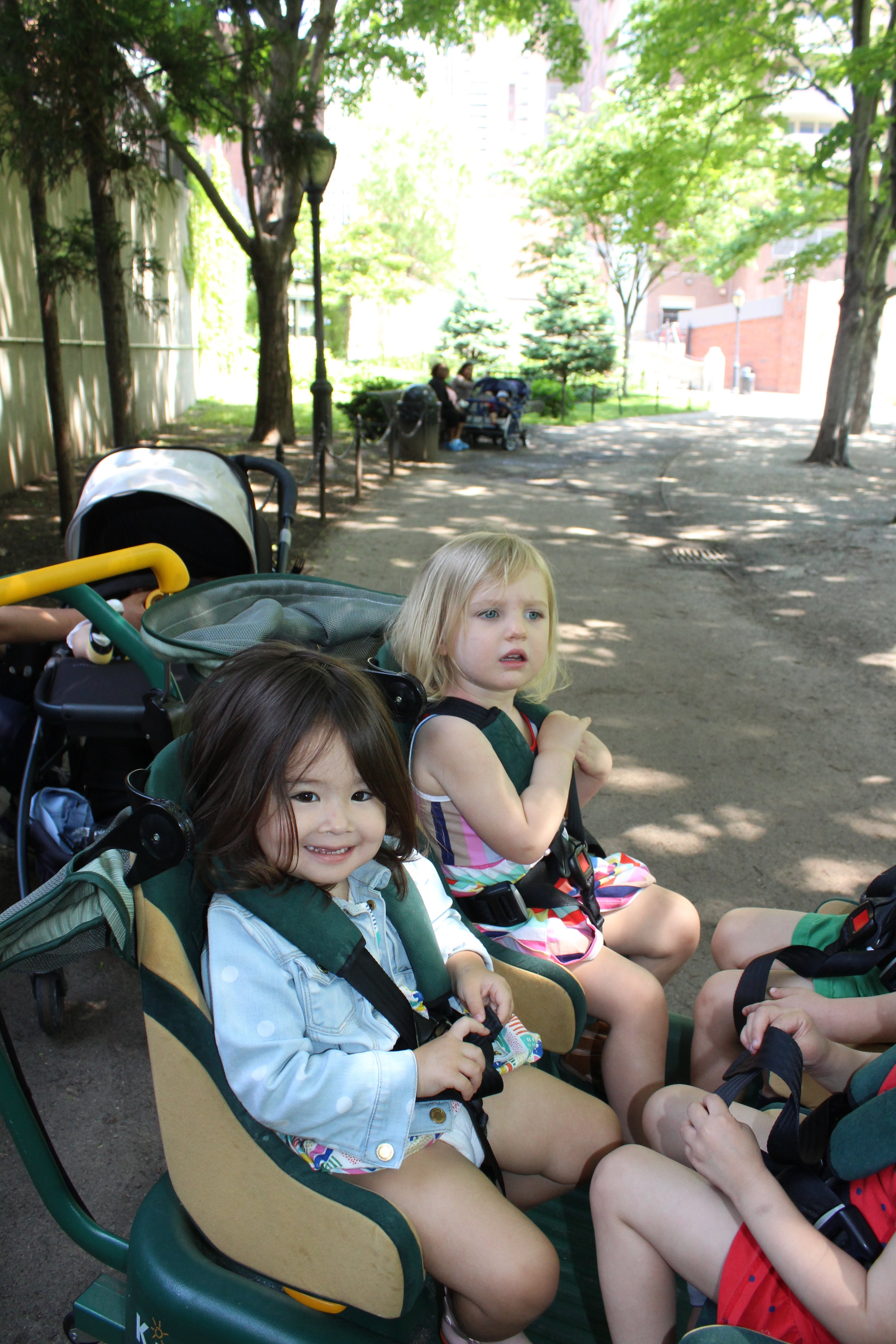
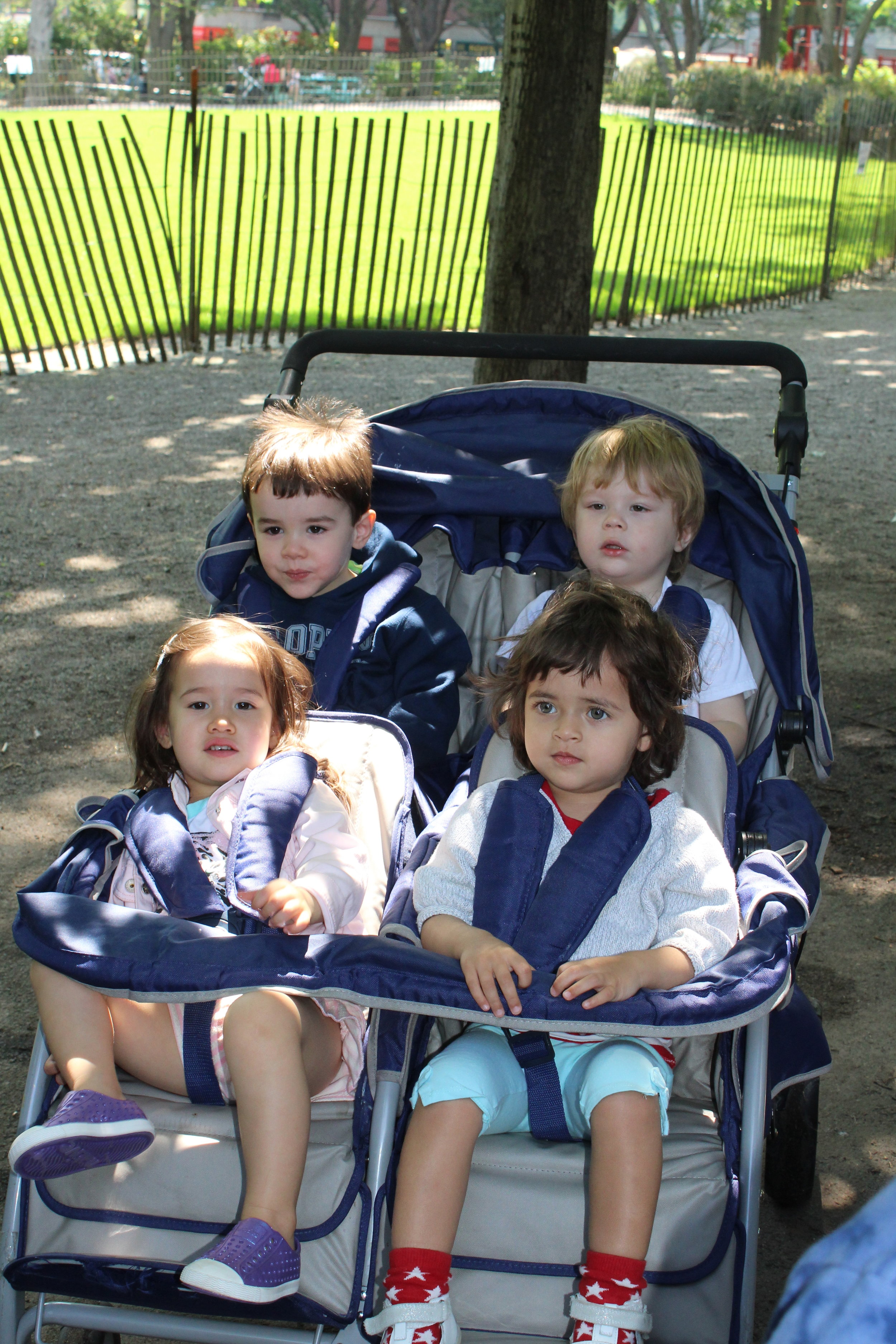
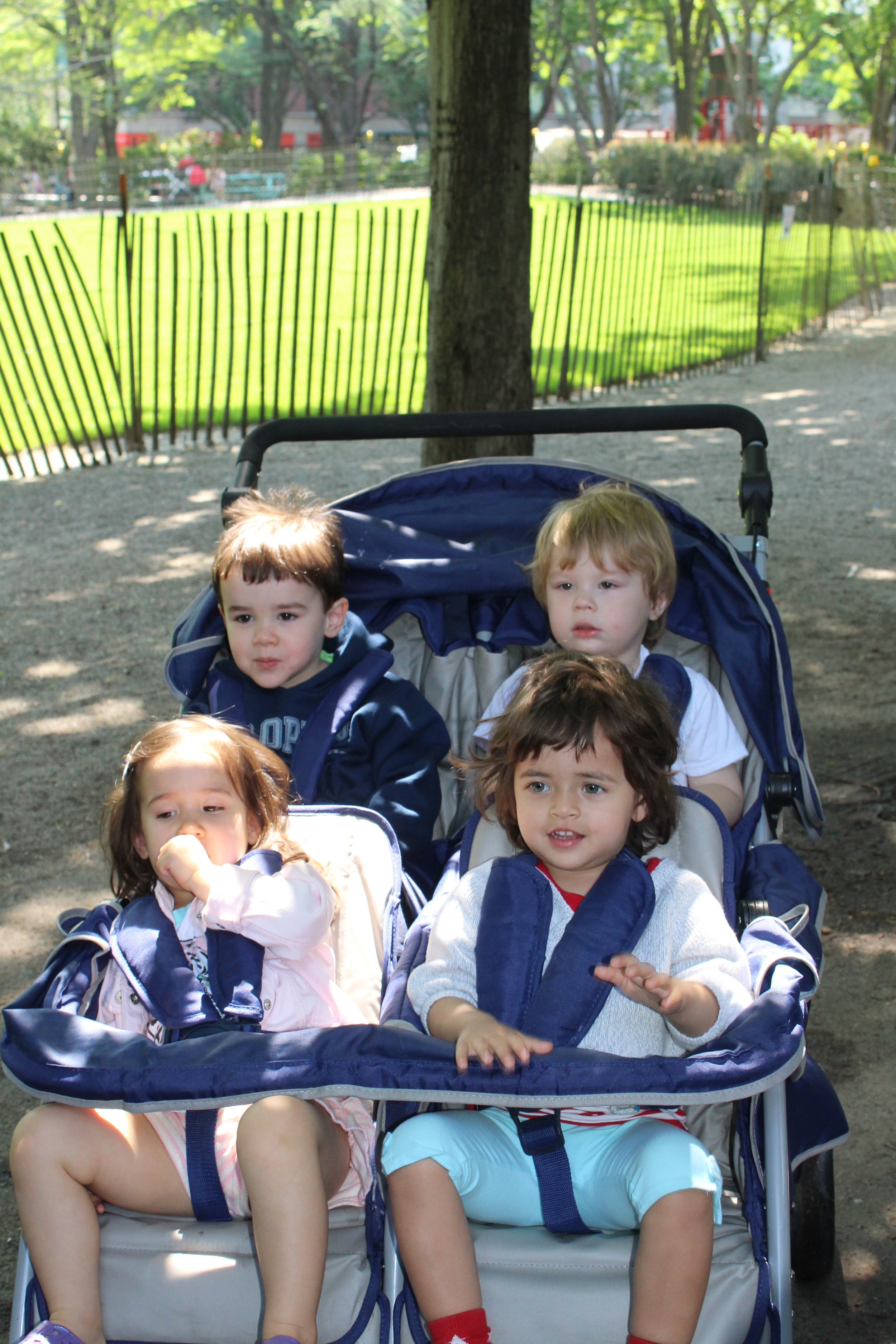
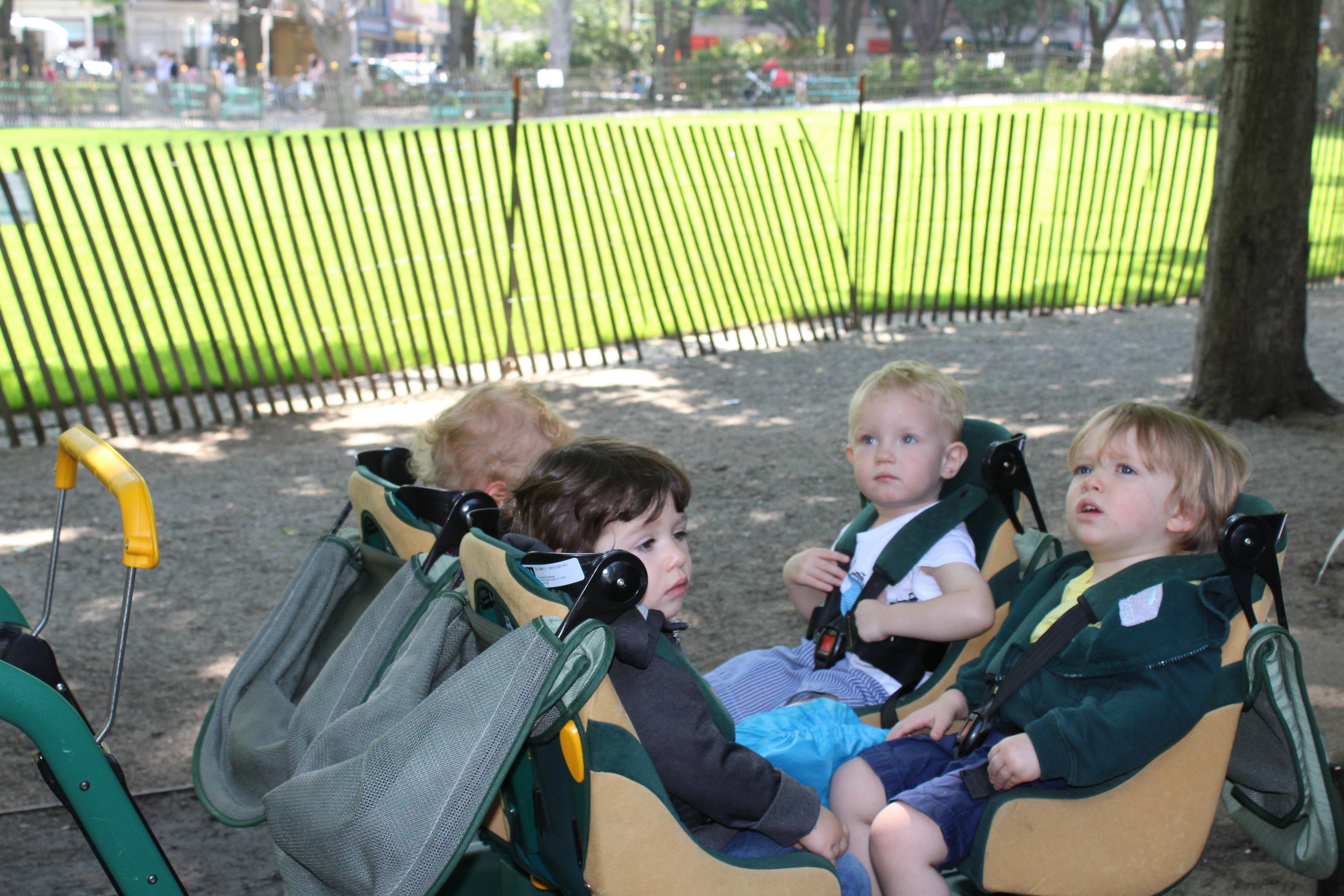
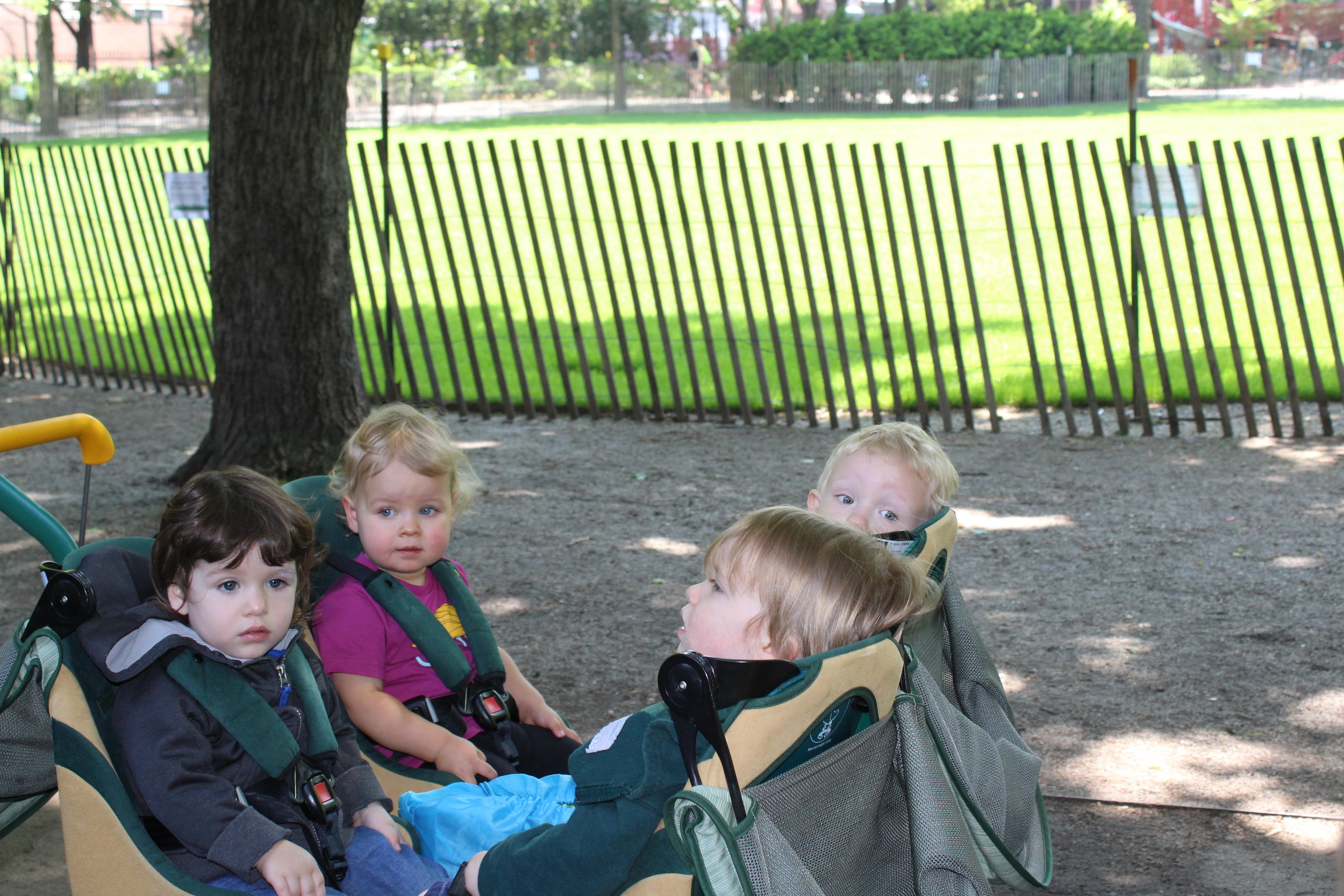
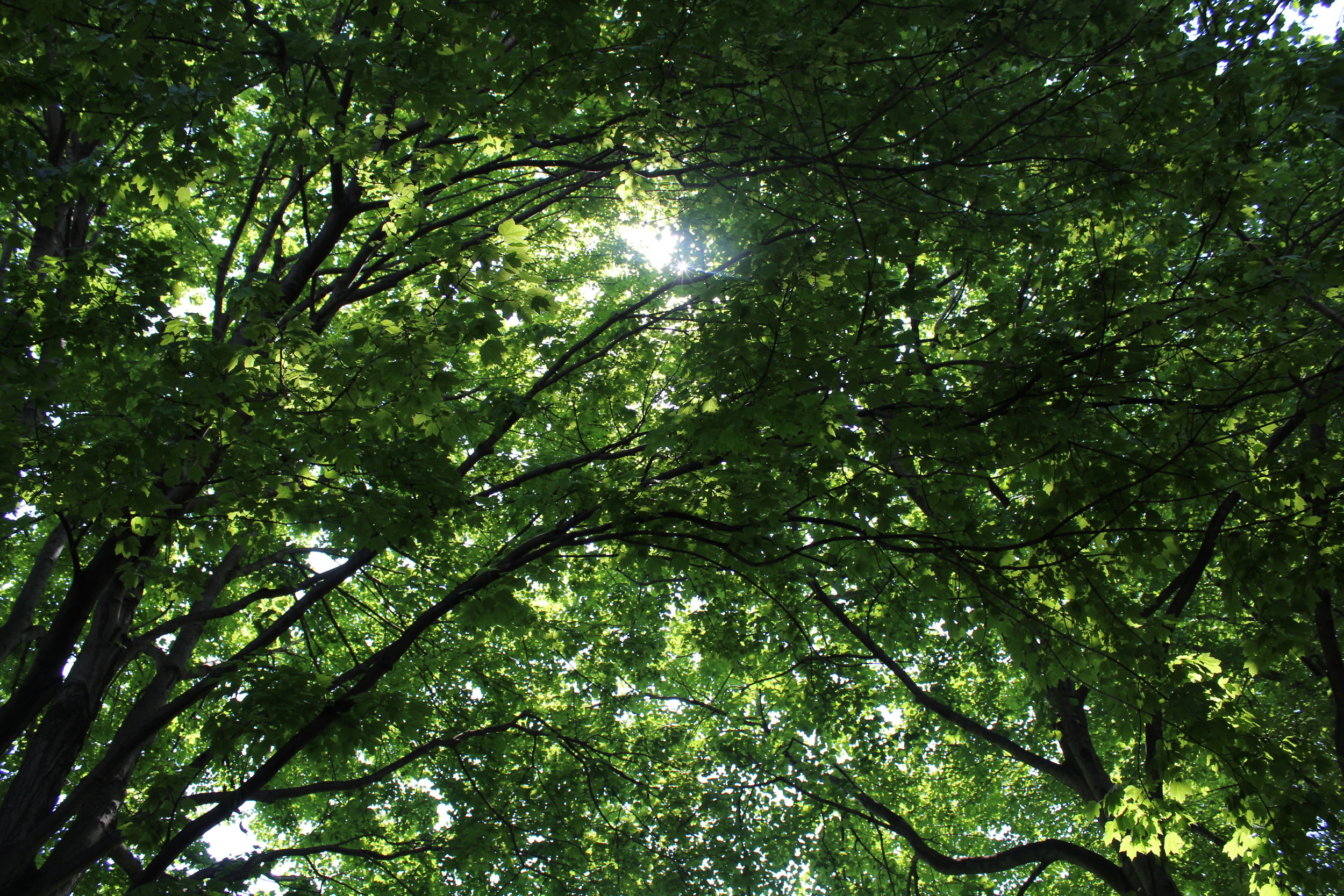
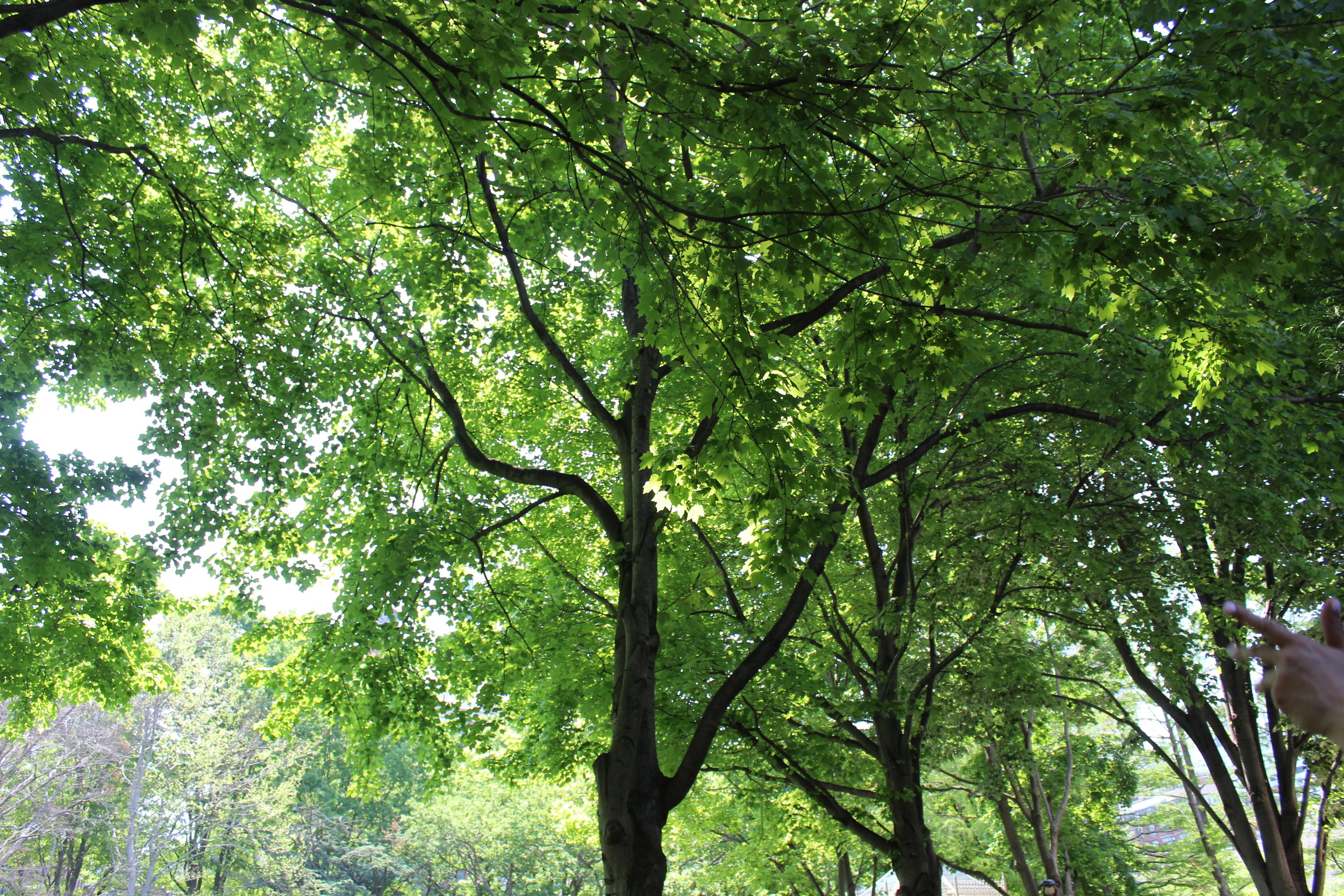
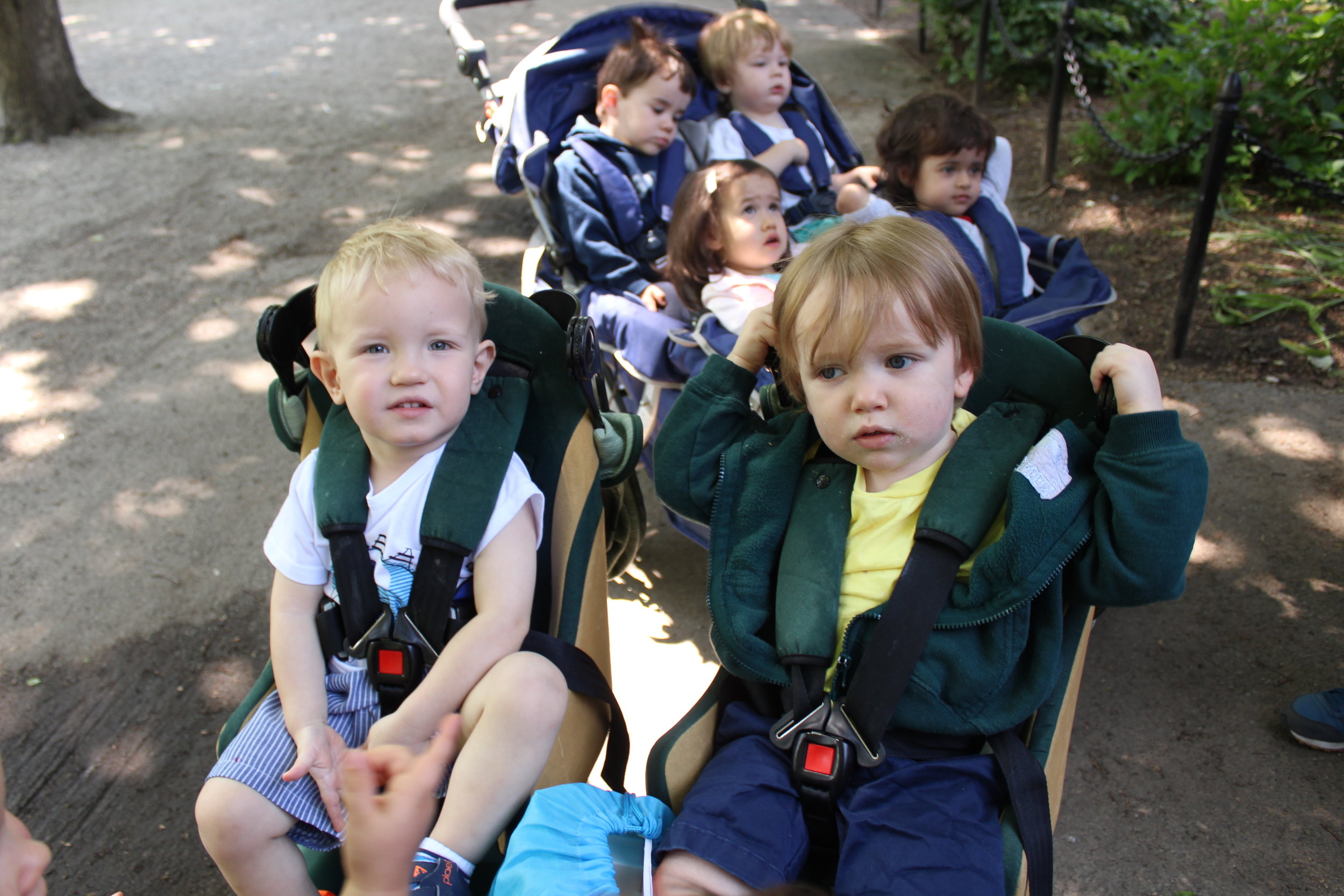
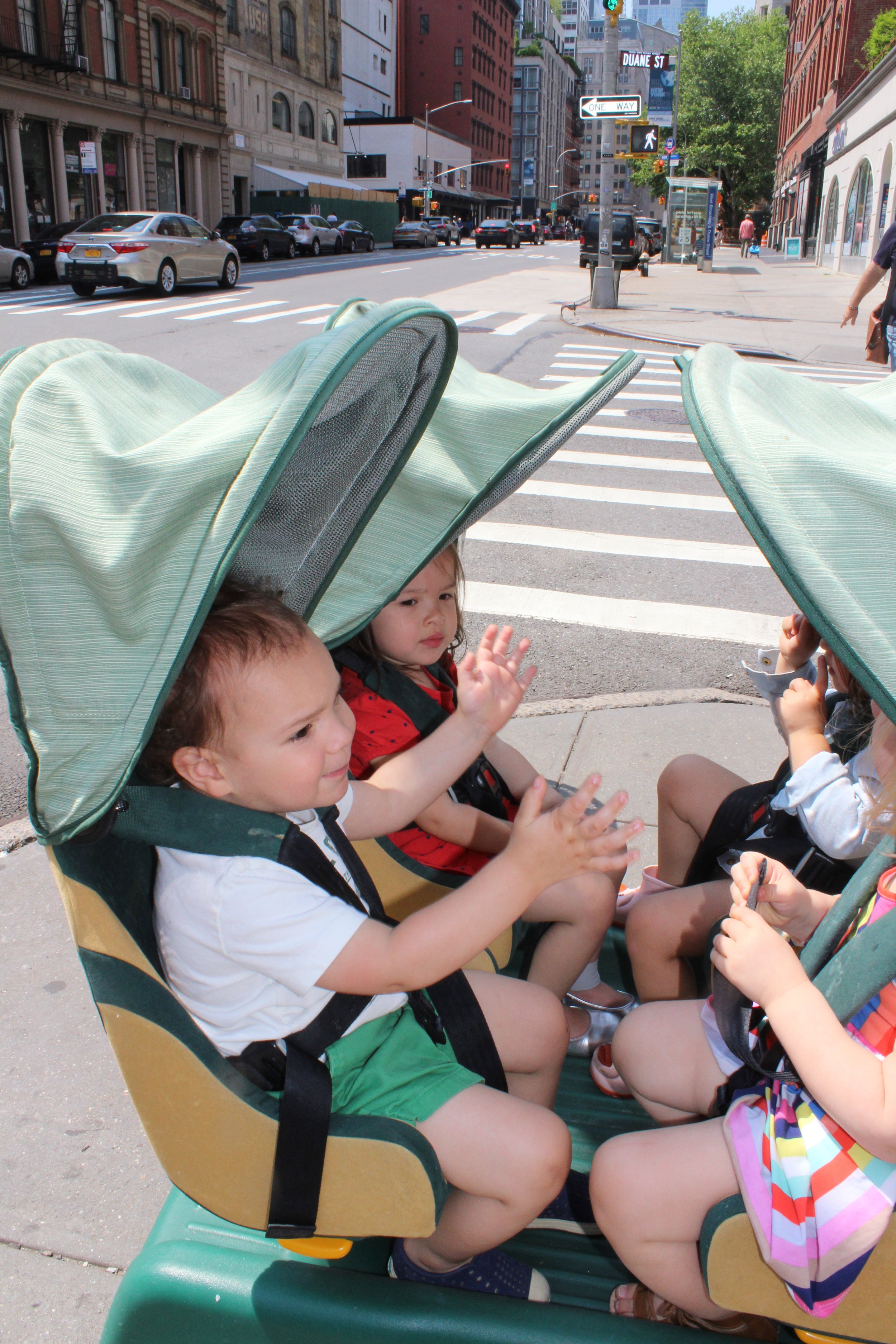
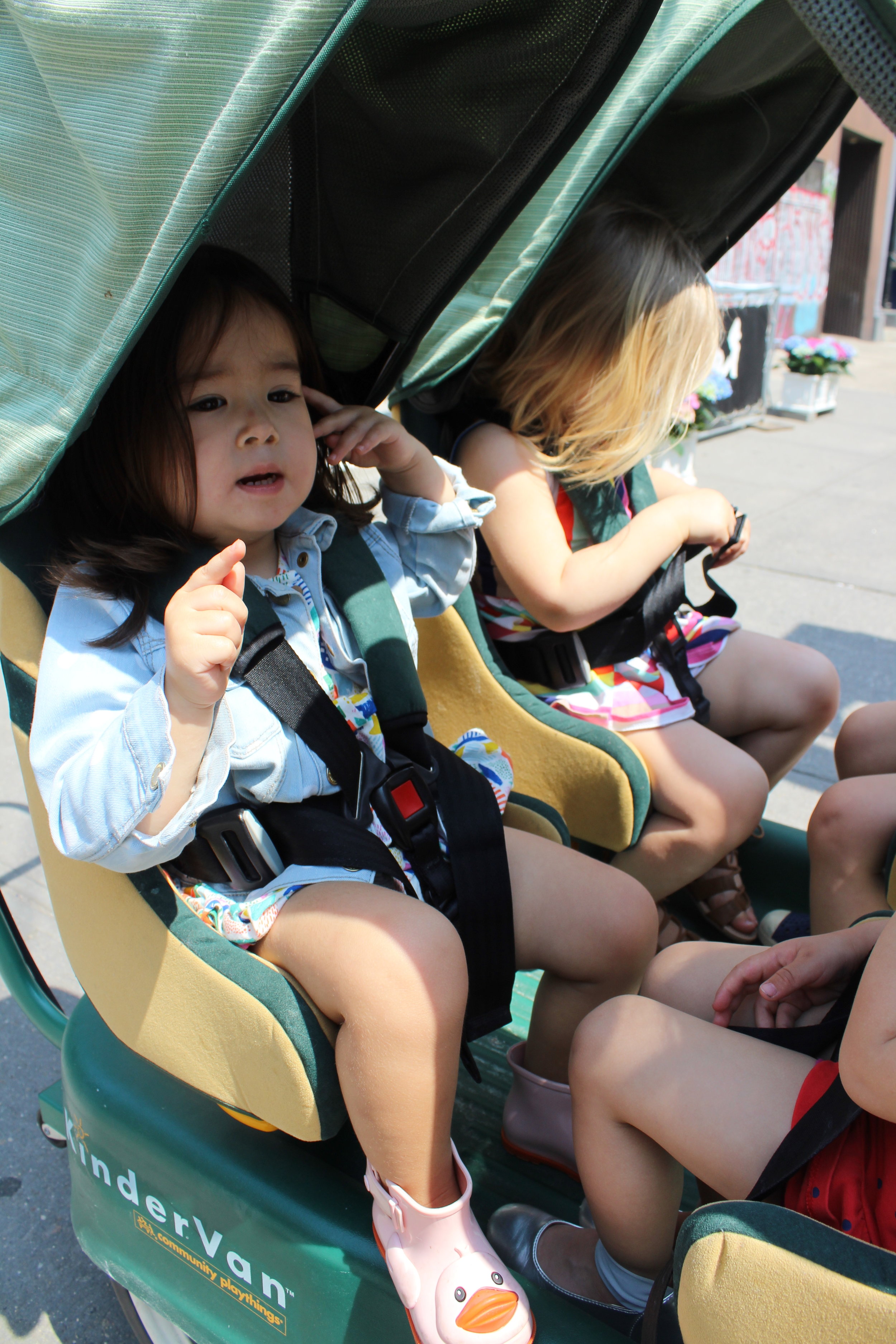
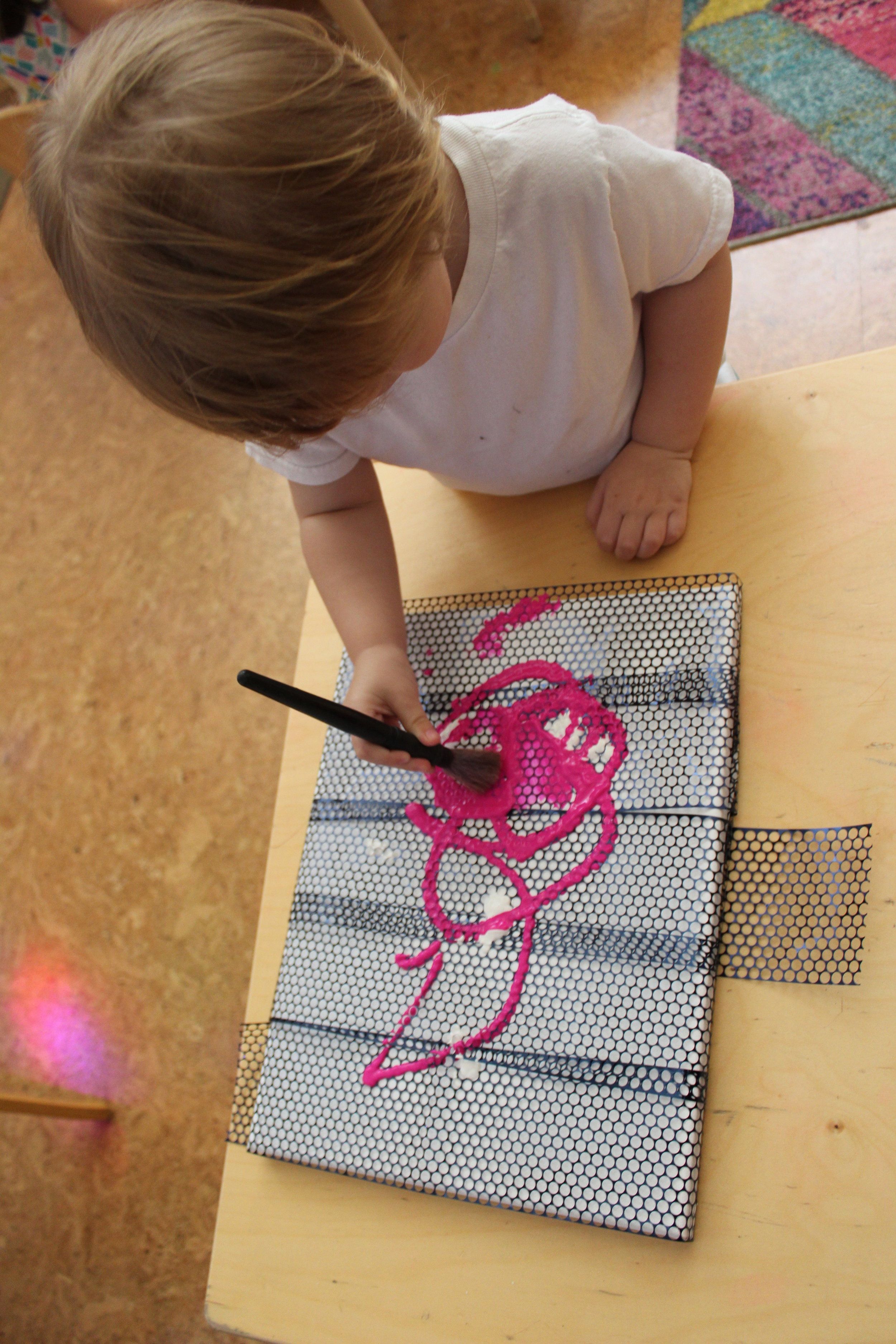
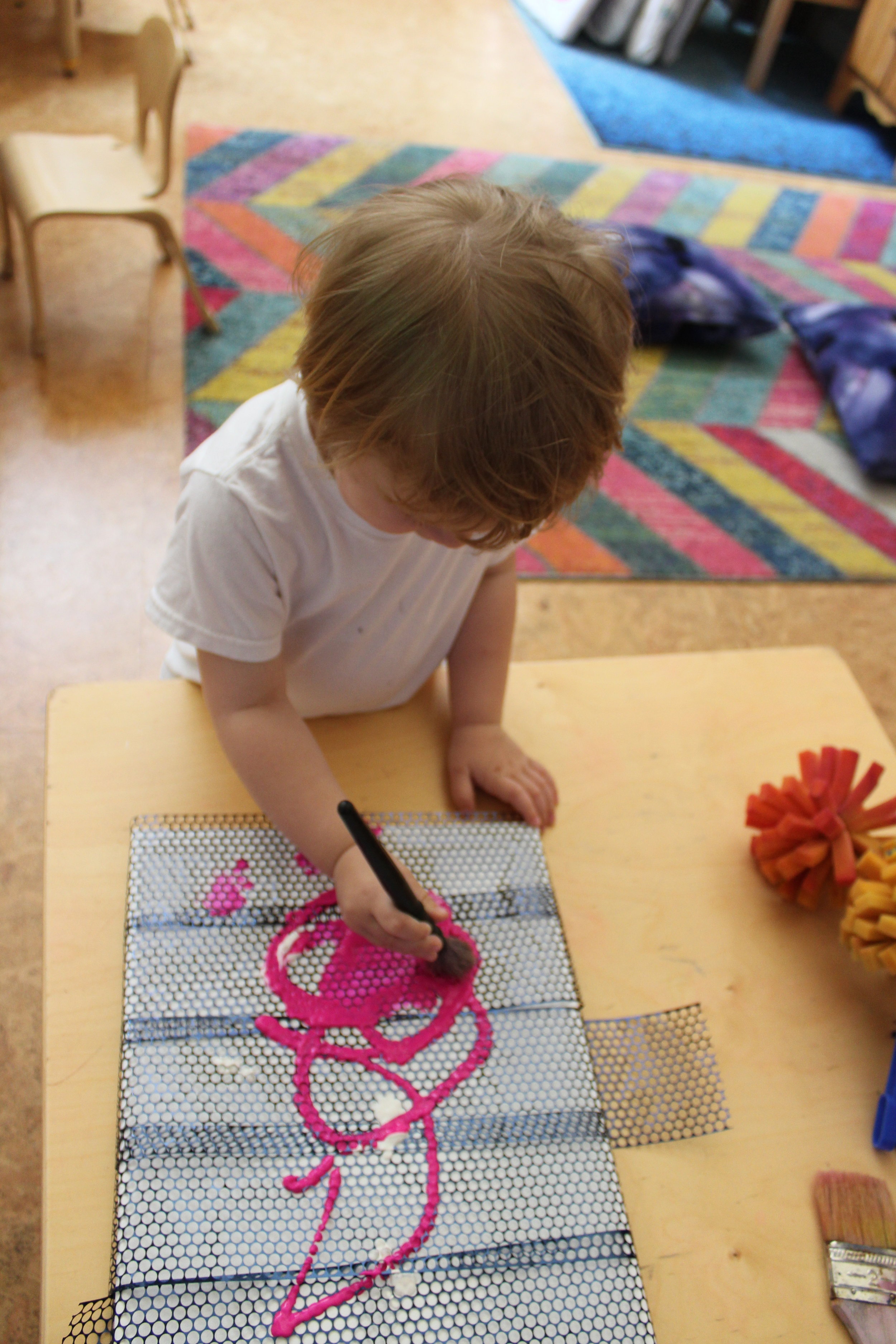
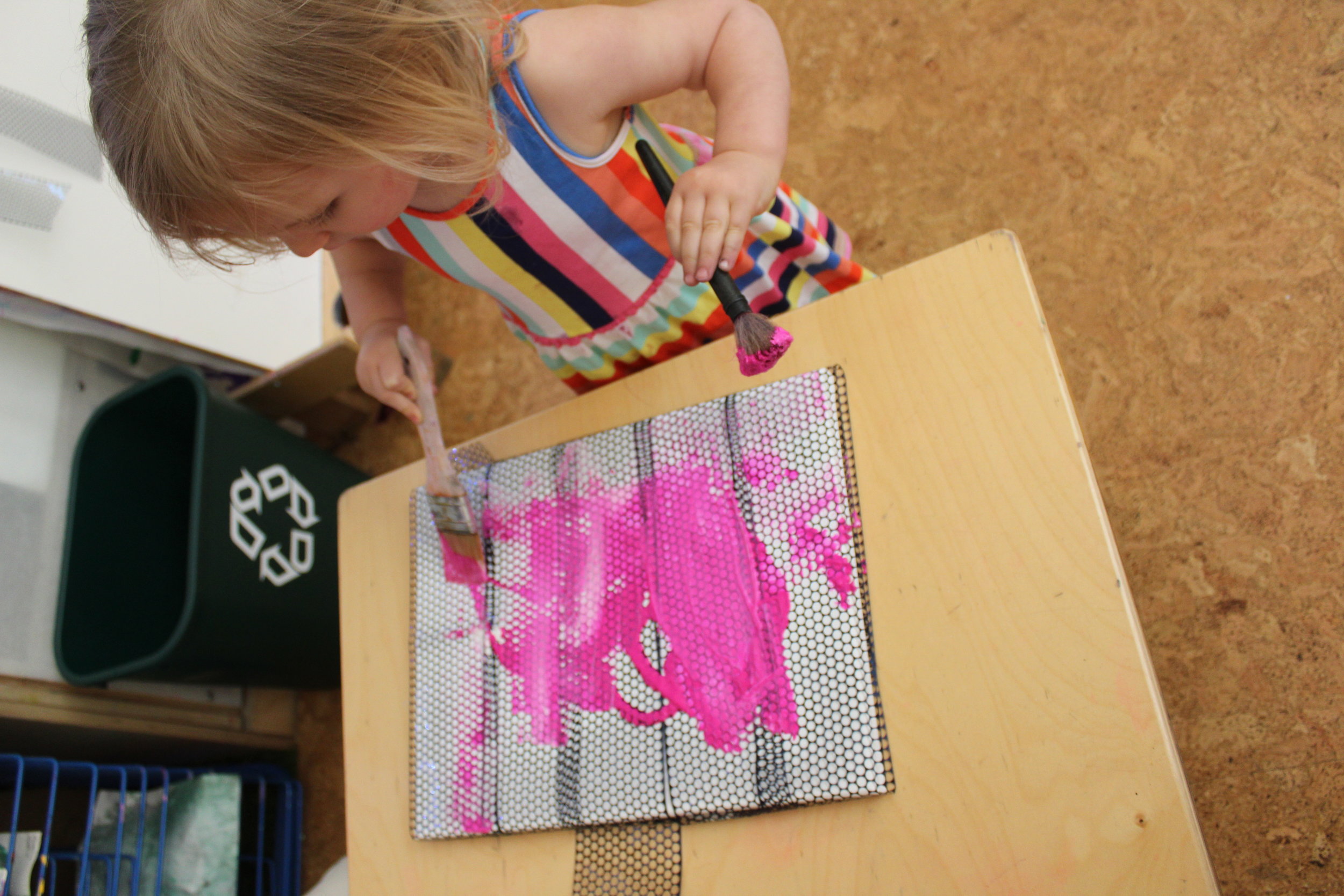
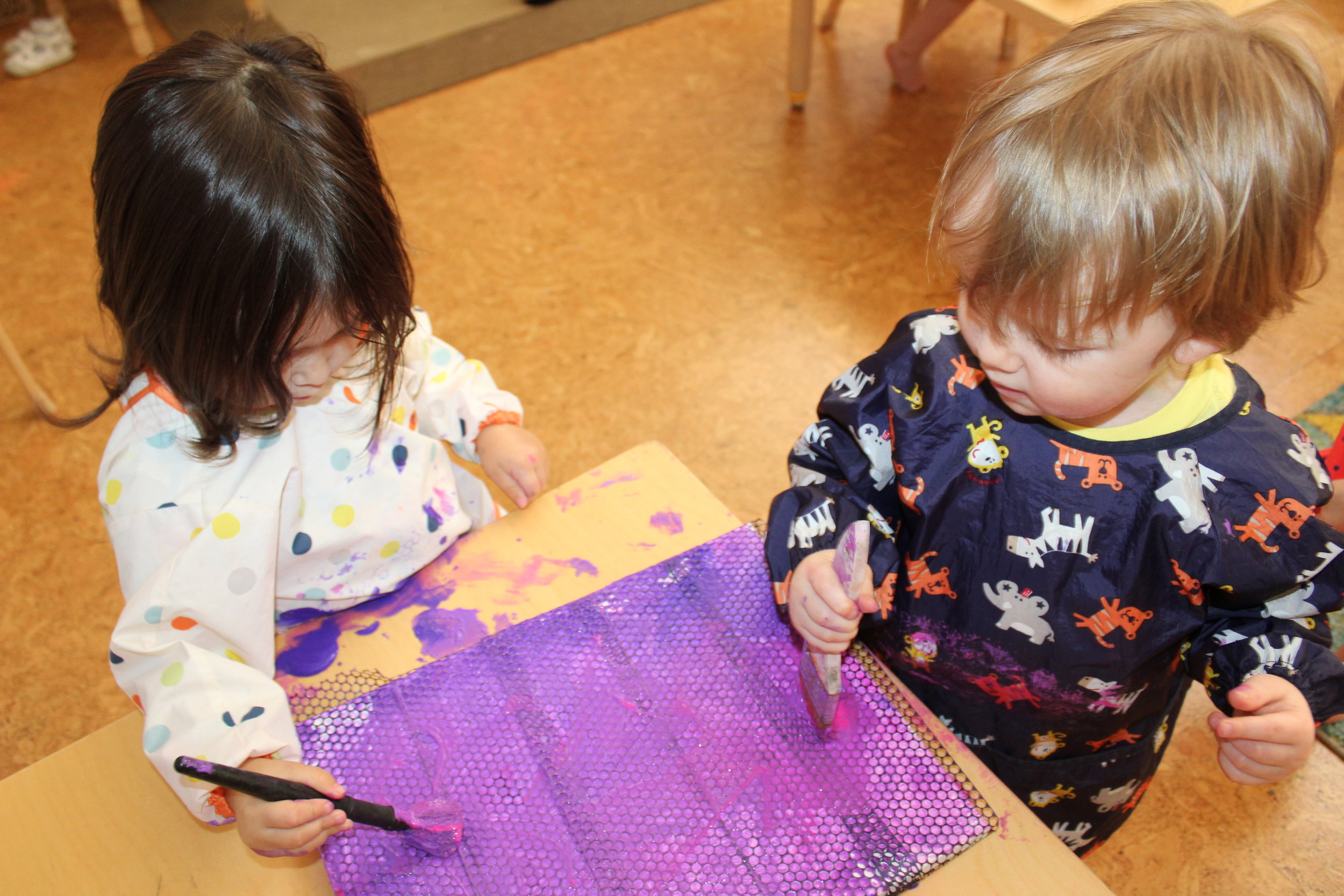

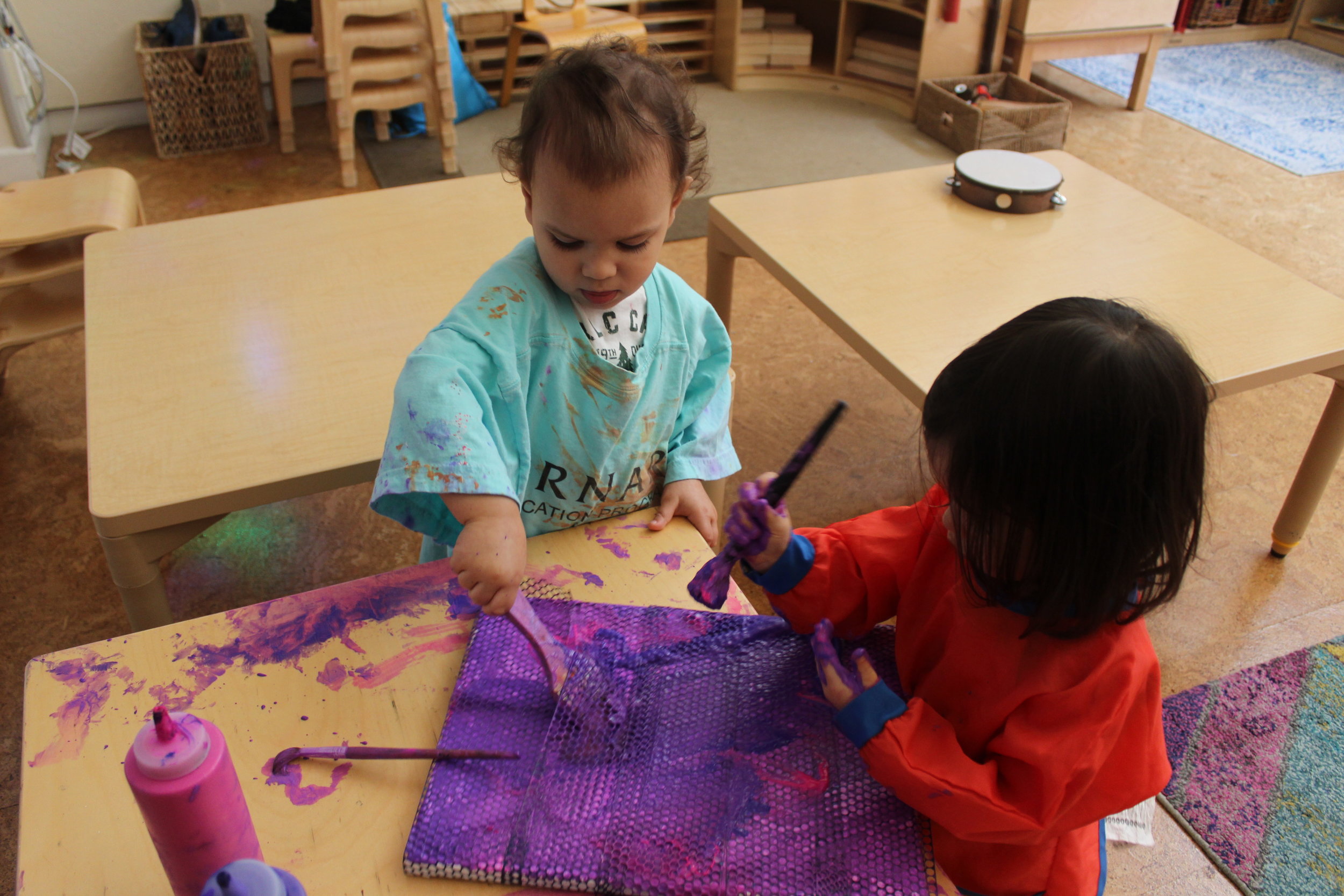
Highlights of the Week:
We had a special reader this week, Arturo, Mario's father:
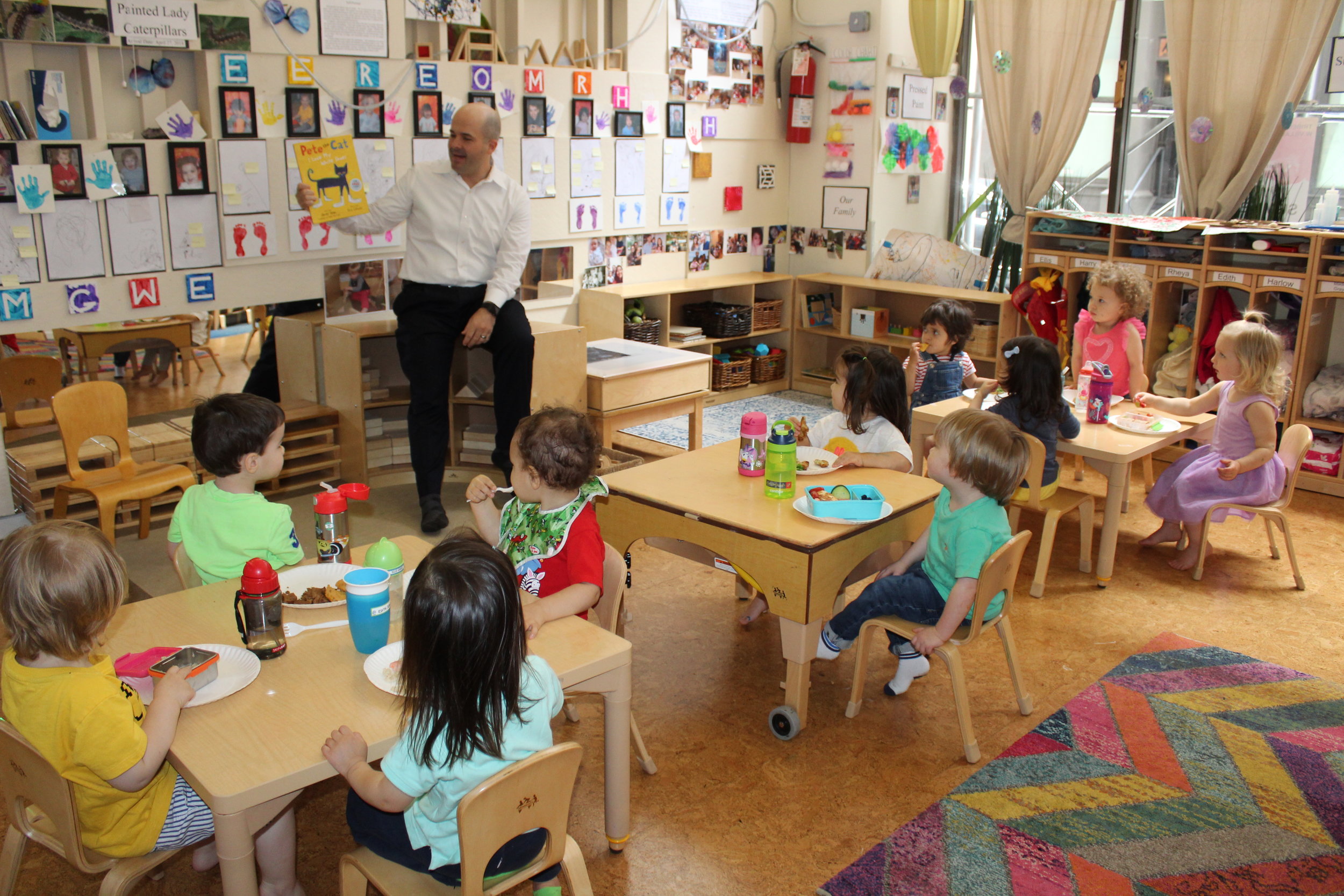
Art:
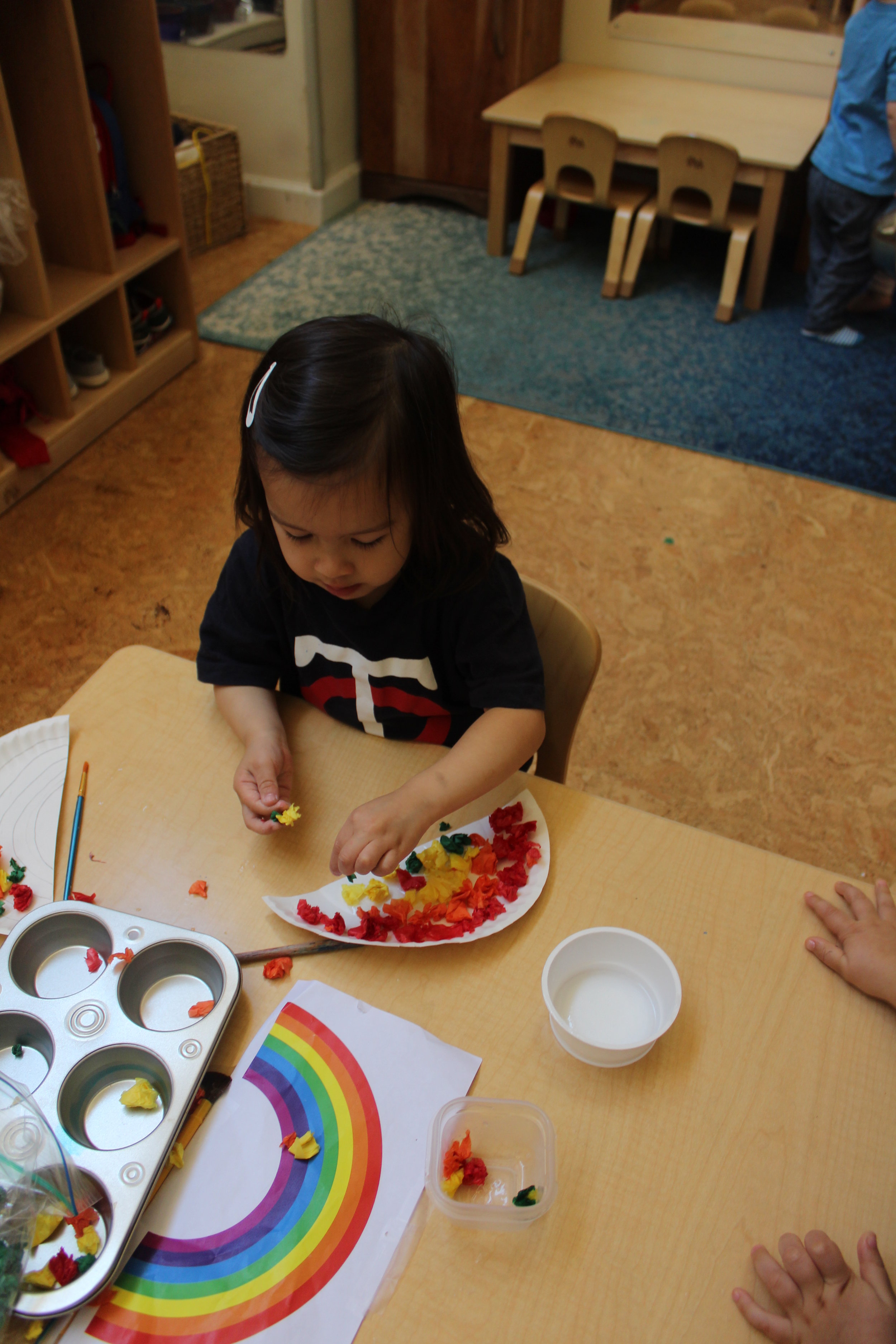
Creating a rainbow using paper plates and tissue paper!
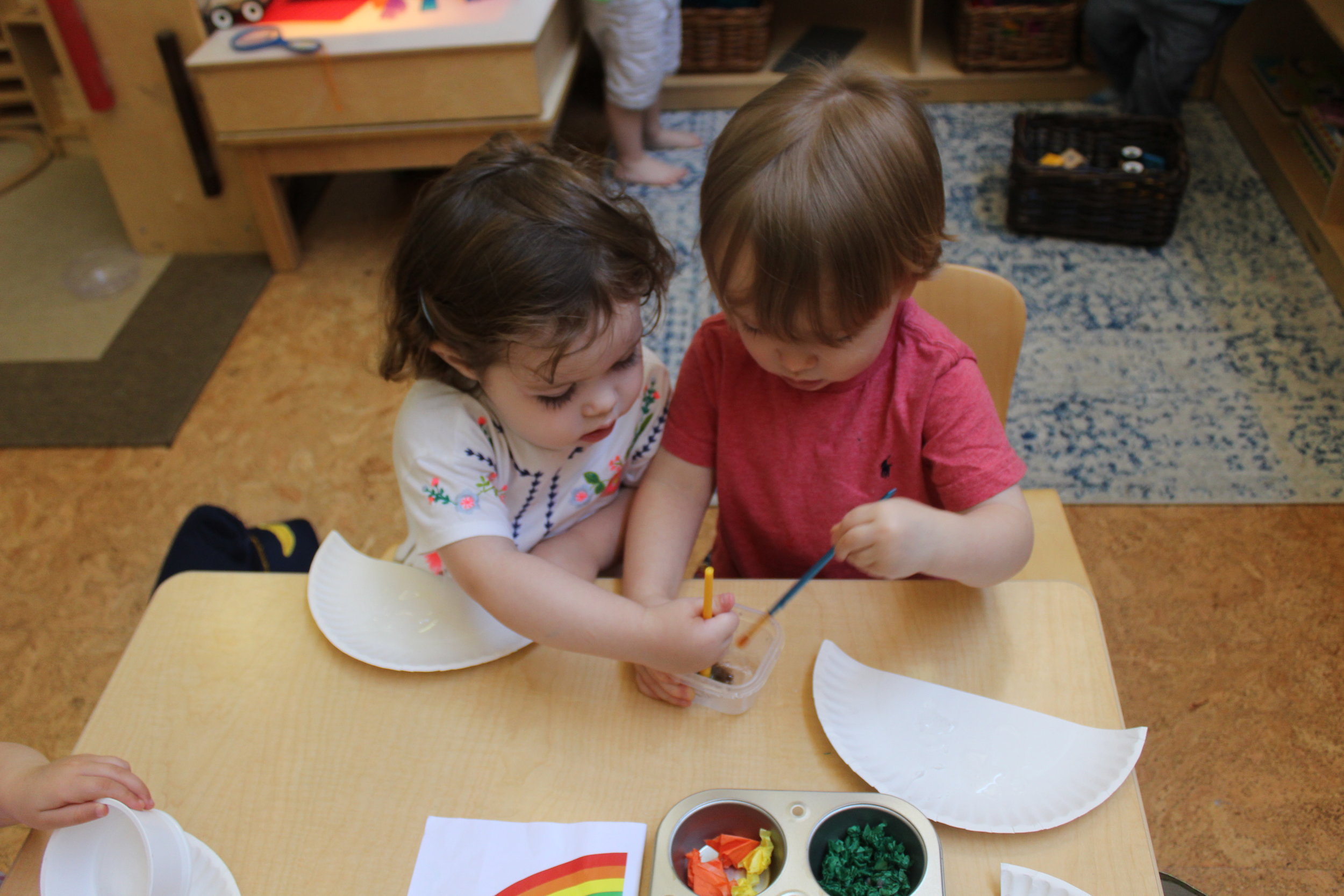
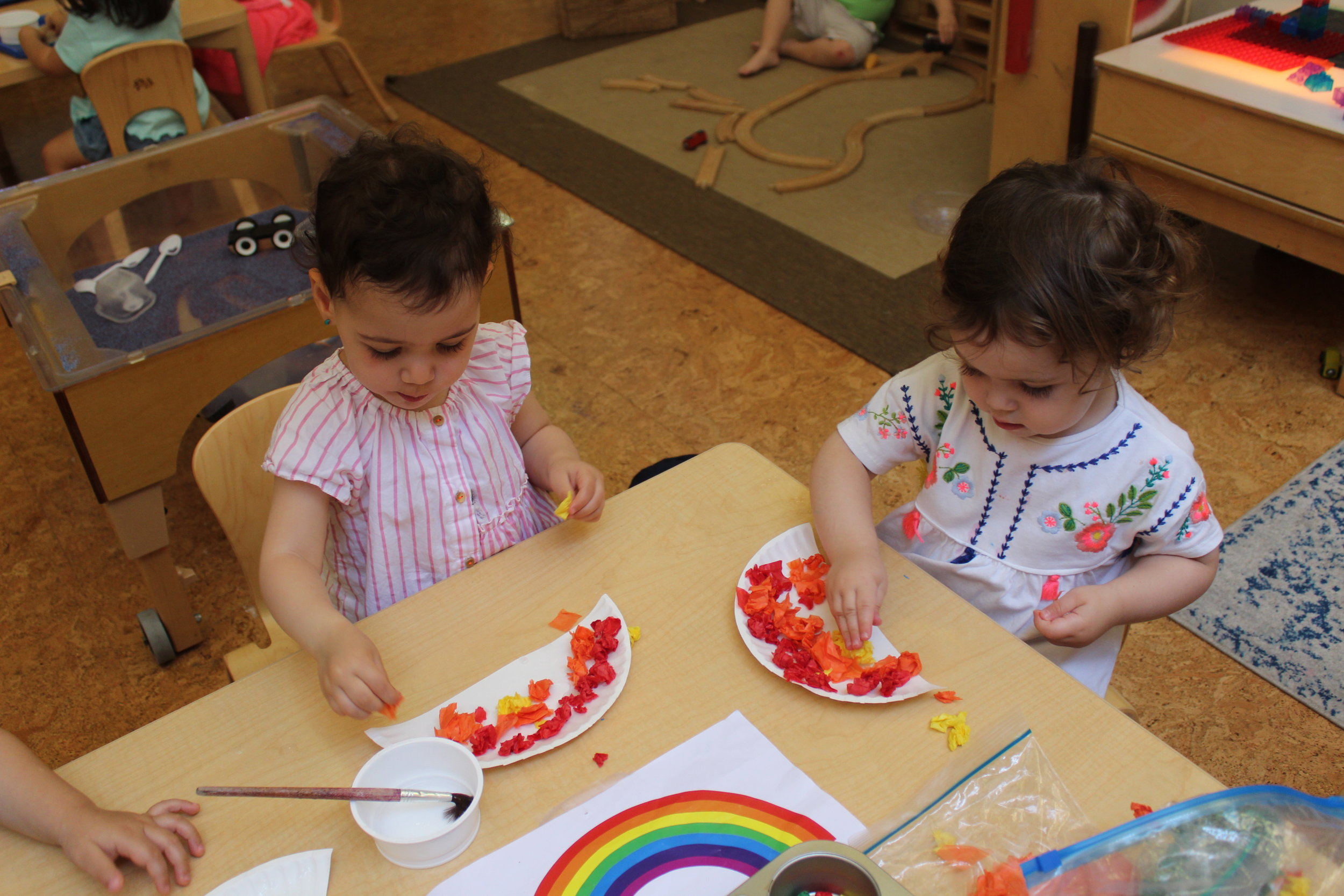
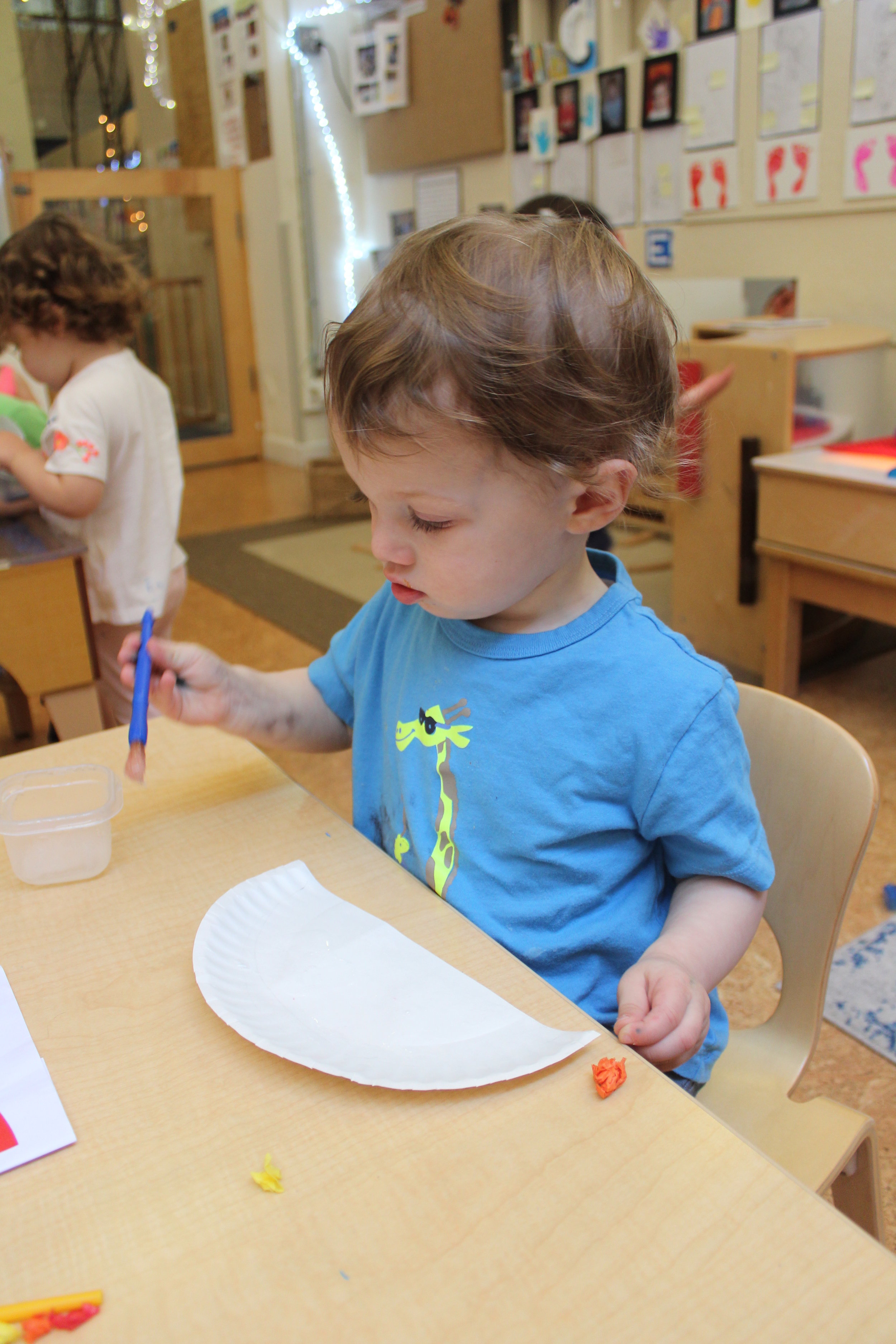
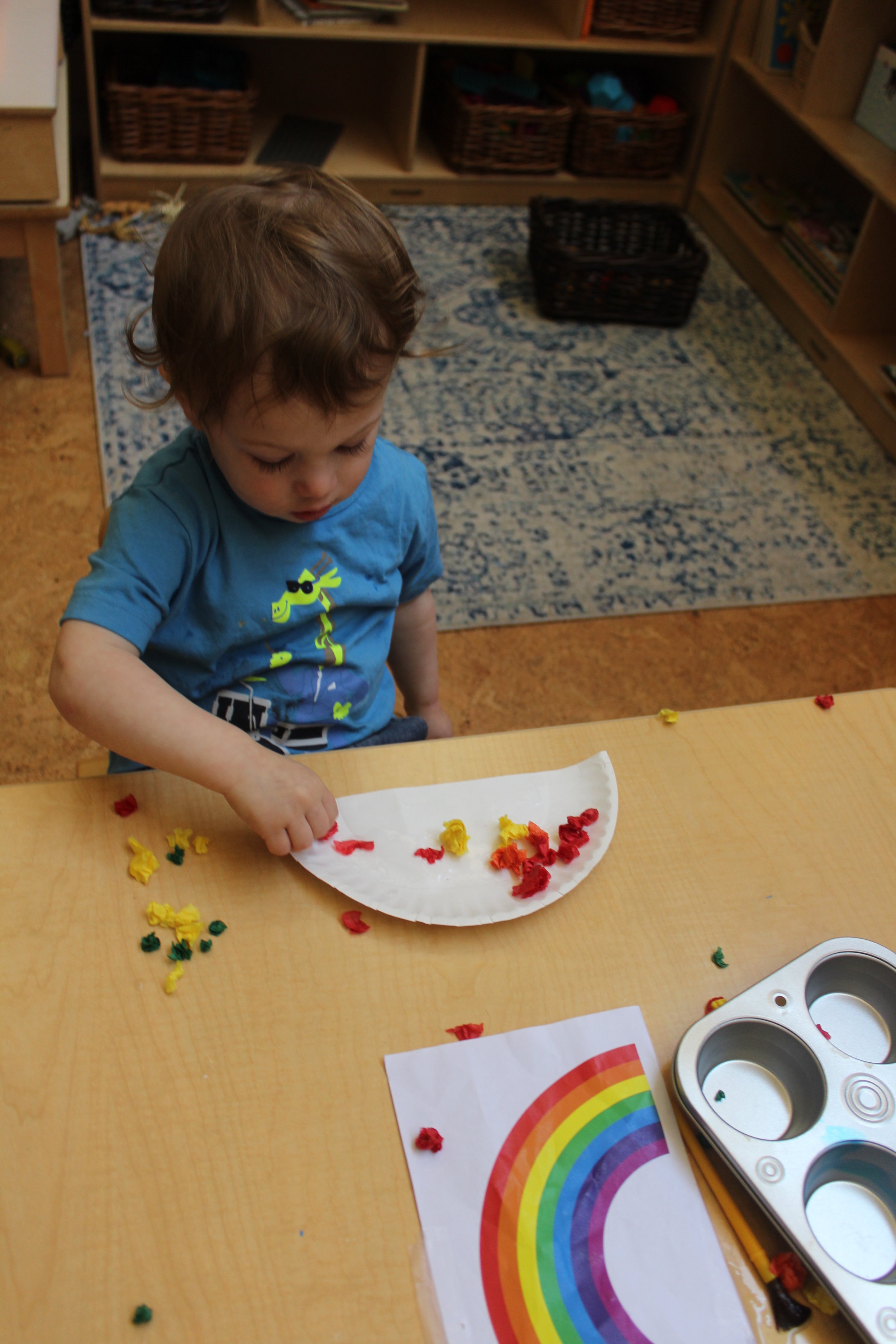
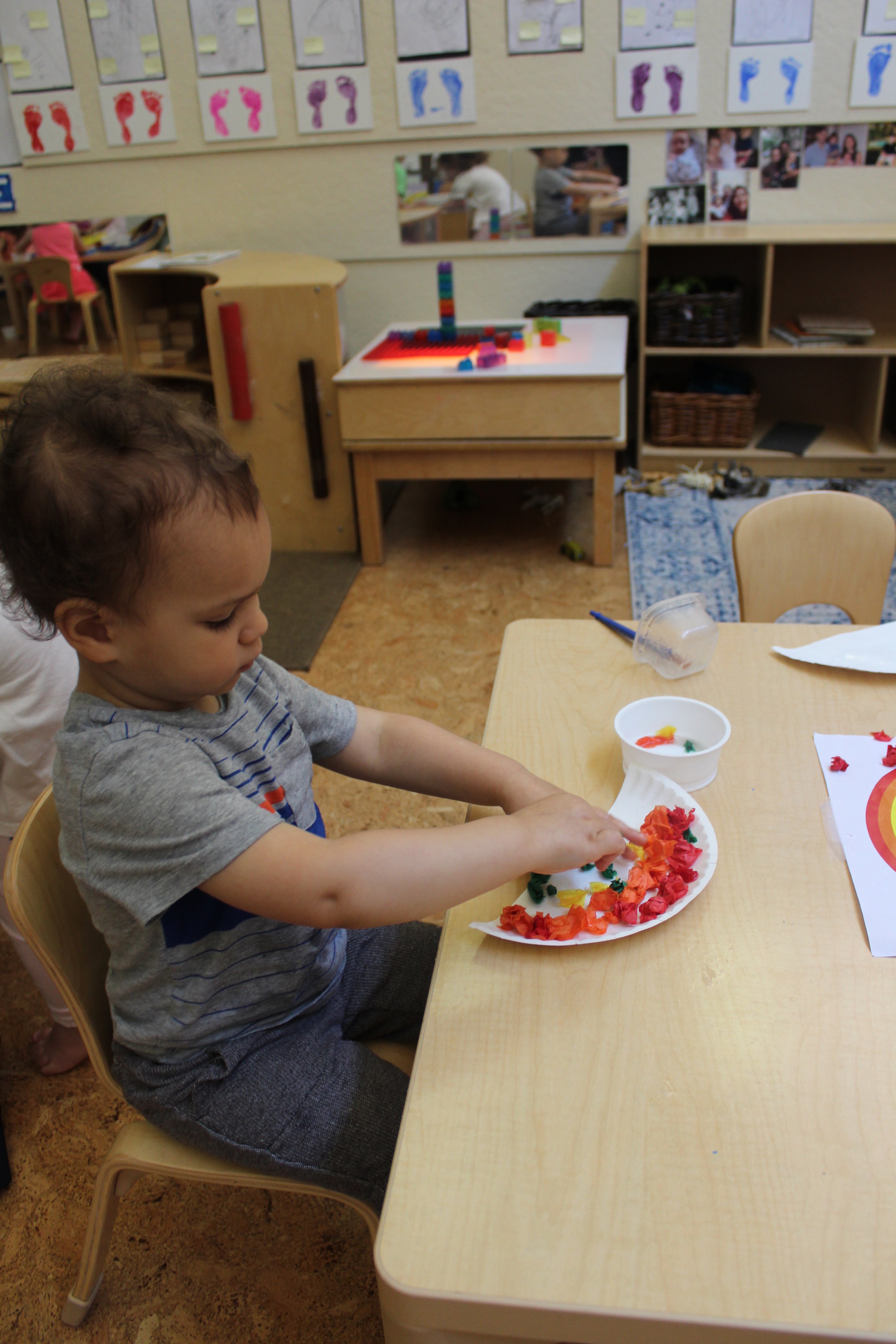
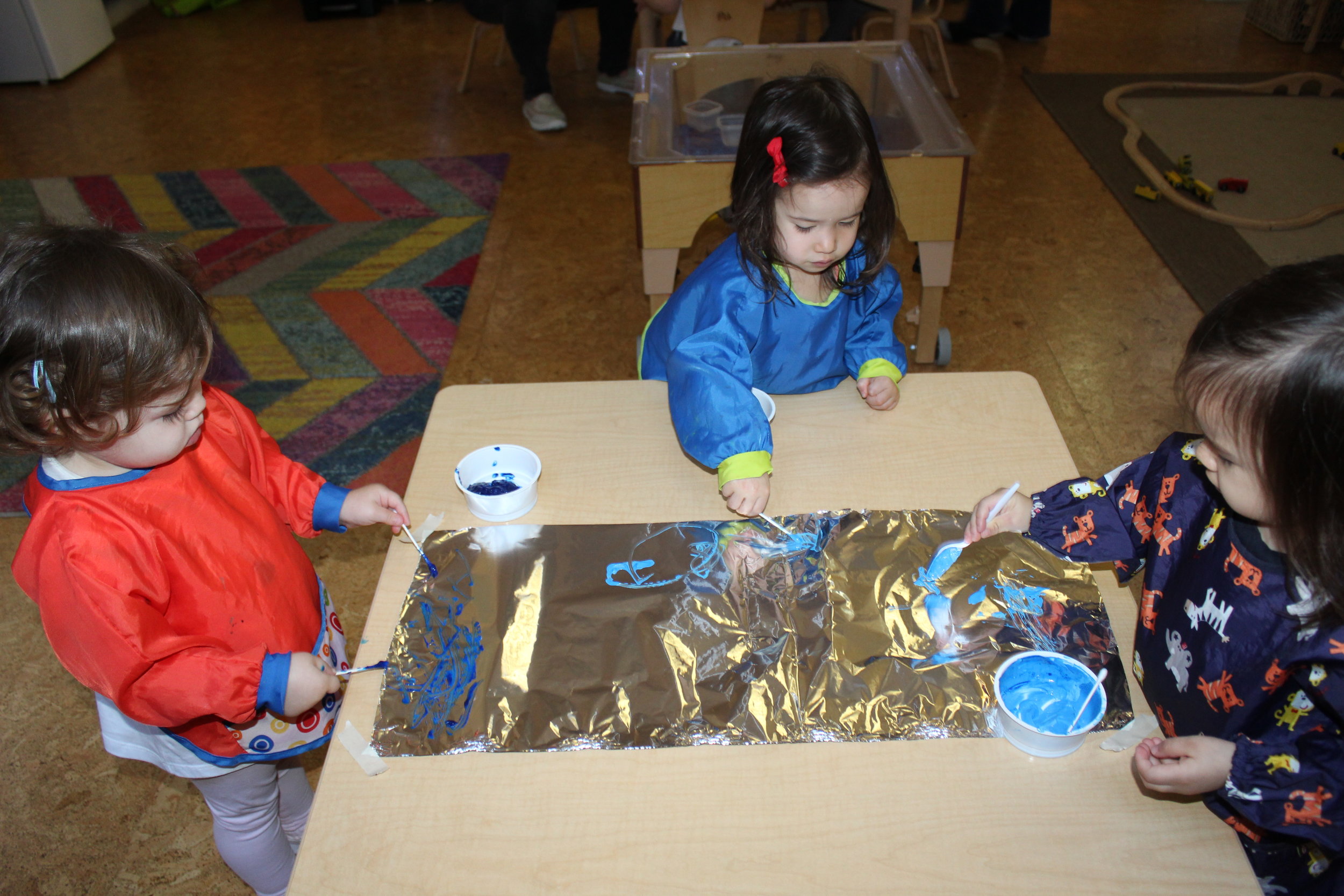
Using tin foil and paint, the children delve into exploring using their hands and fingers. In process art there is no step-by-step instruction, there is no right or wrong way to explore and create. The art is focused on the experience, and on the exploration. The art is unique and original. For some children, the experience is relaxing or calming as they feel the paint between their fingers.
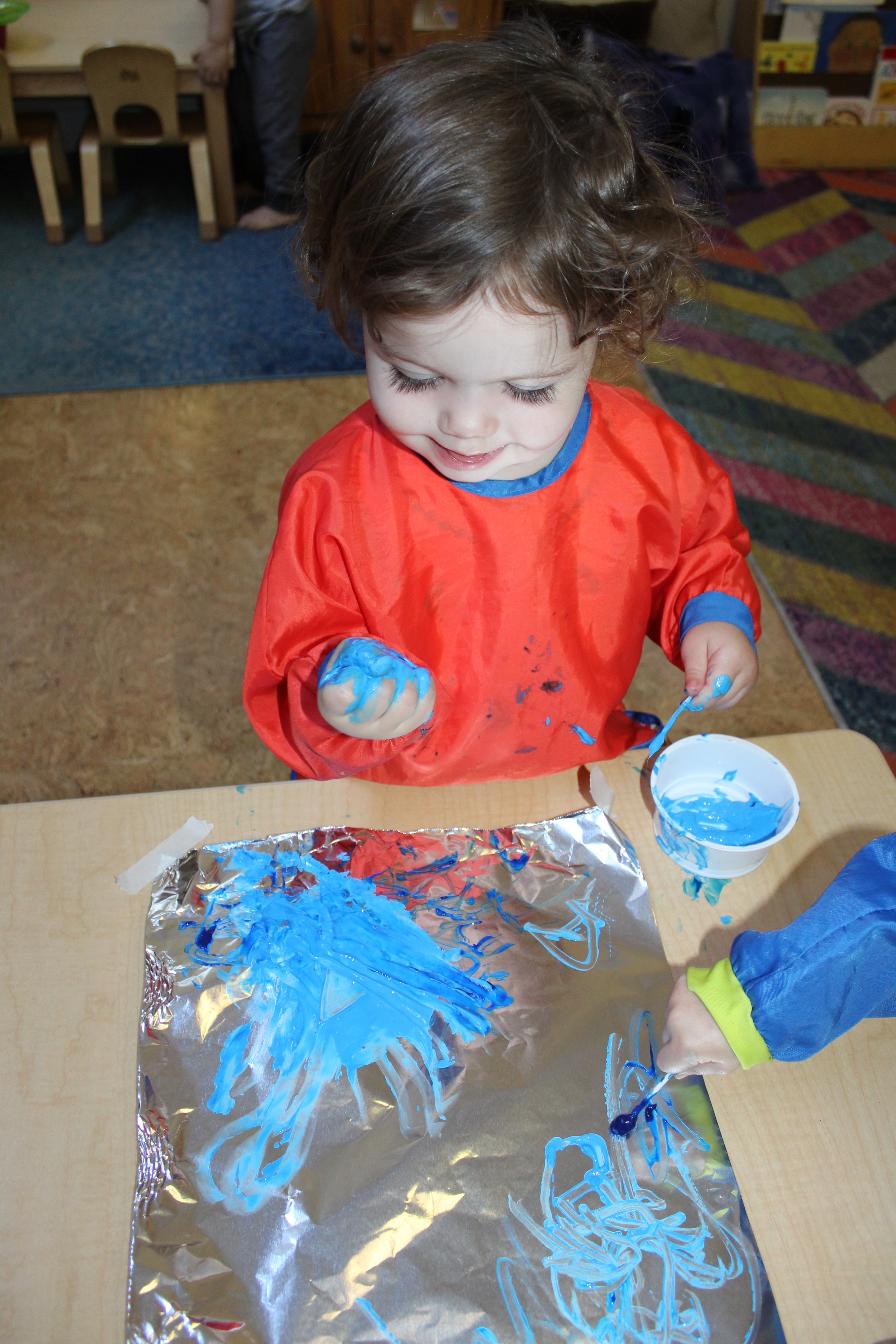
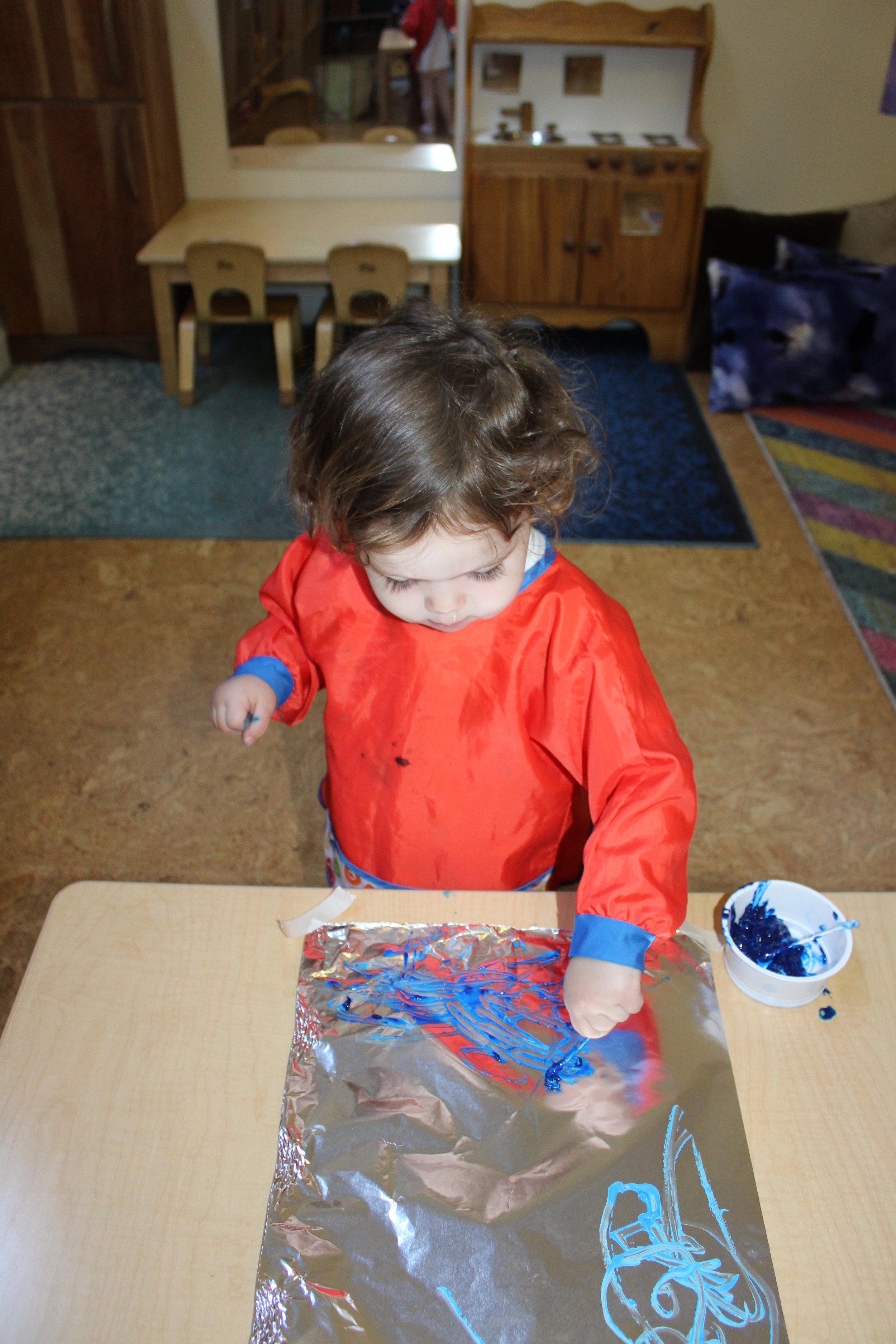
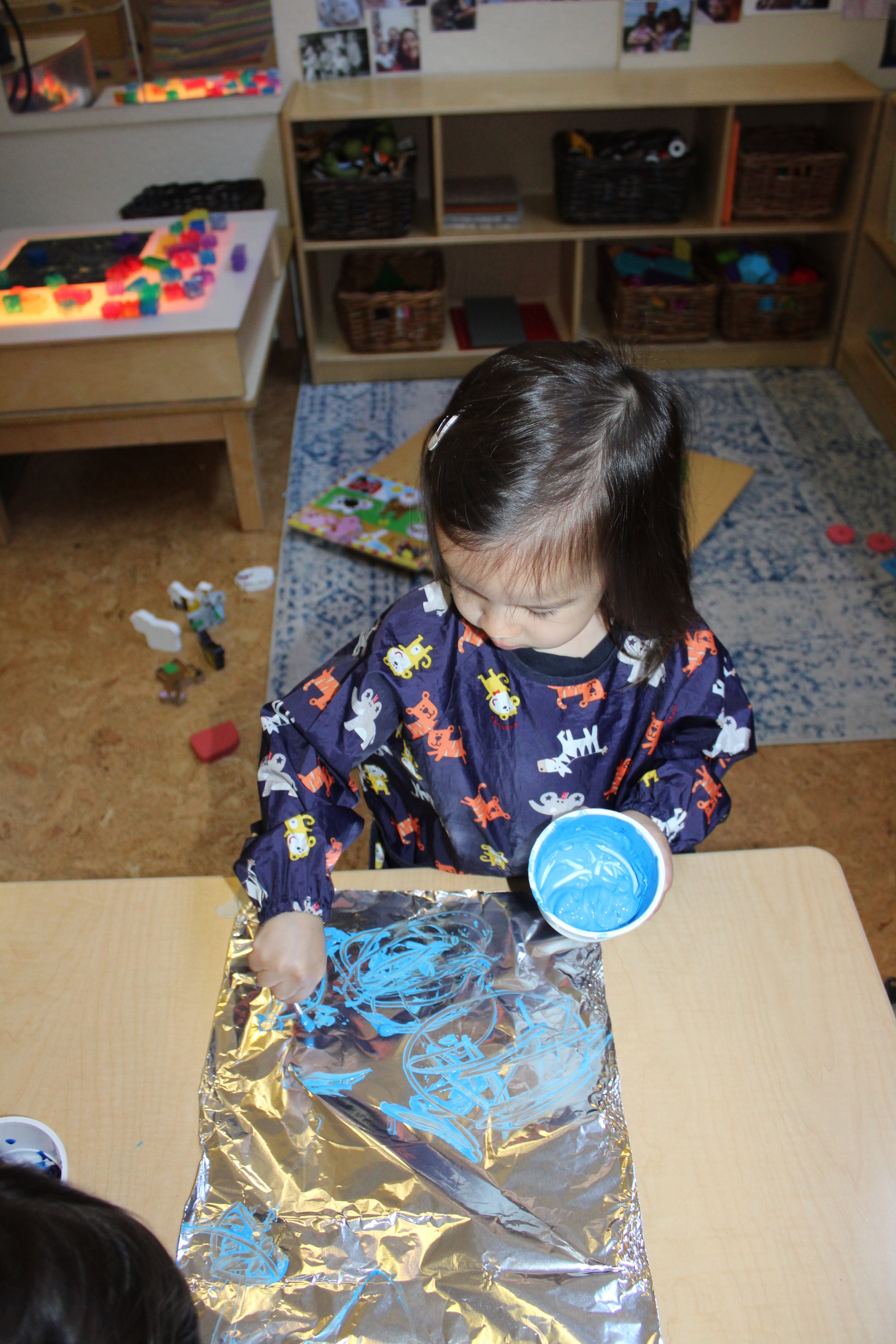
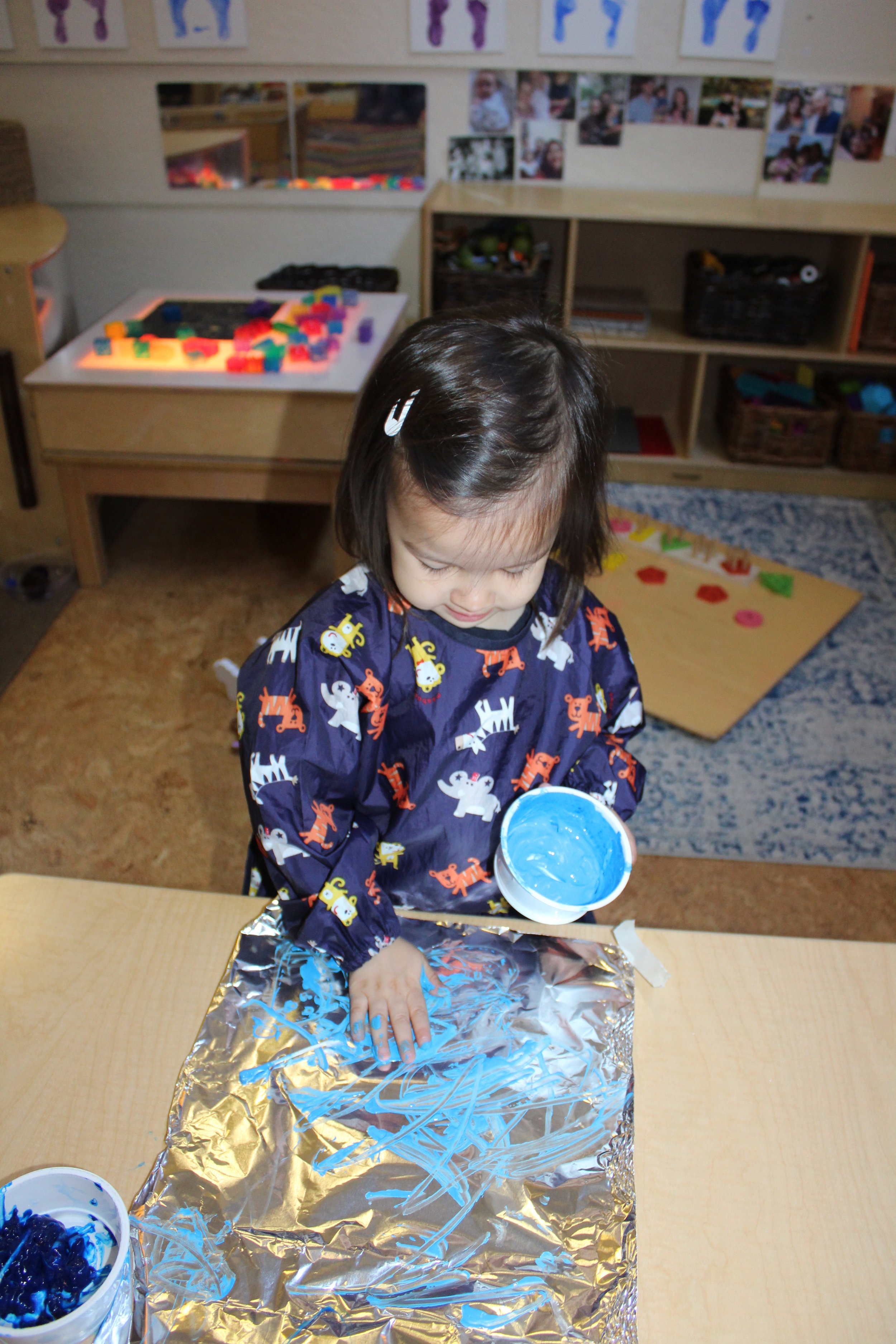
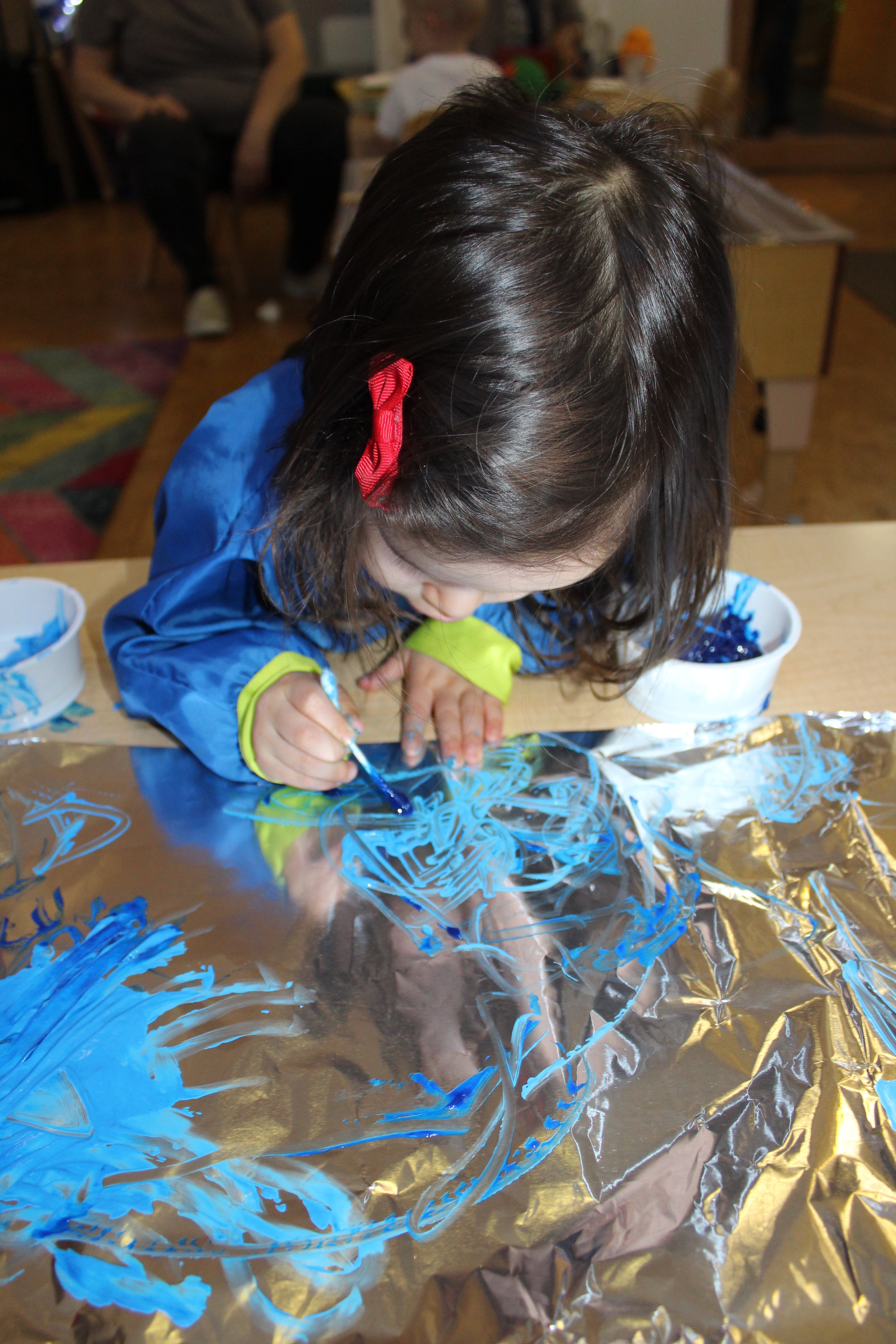
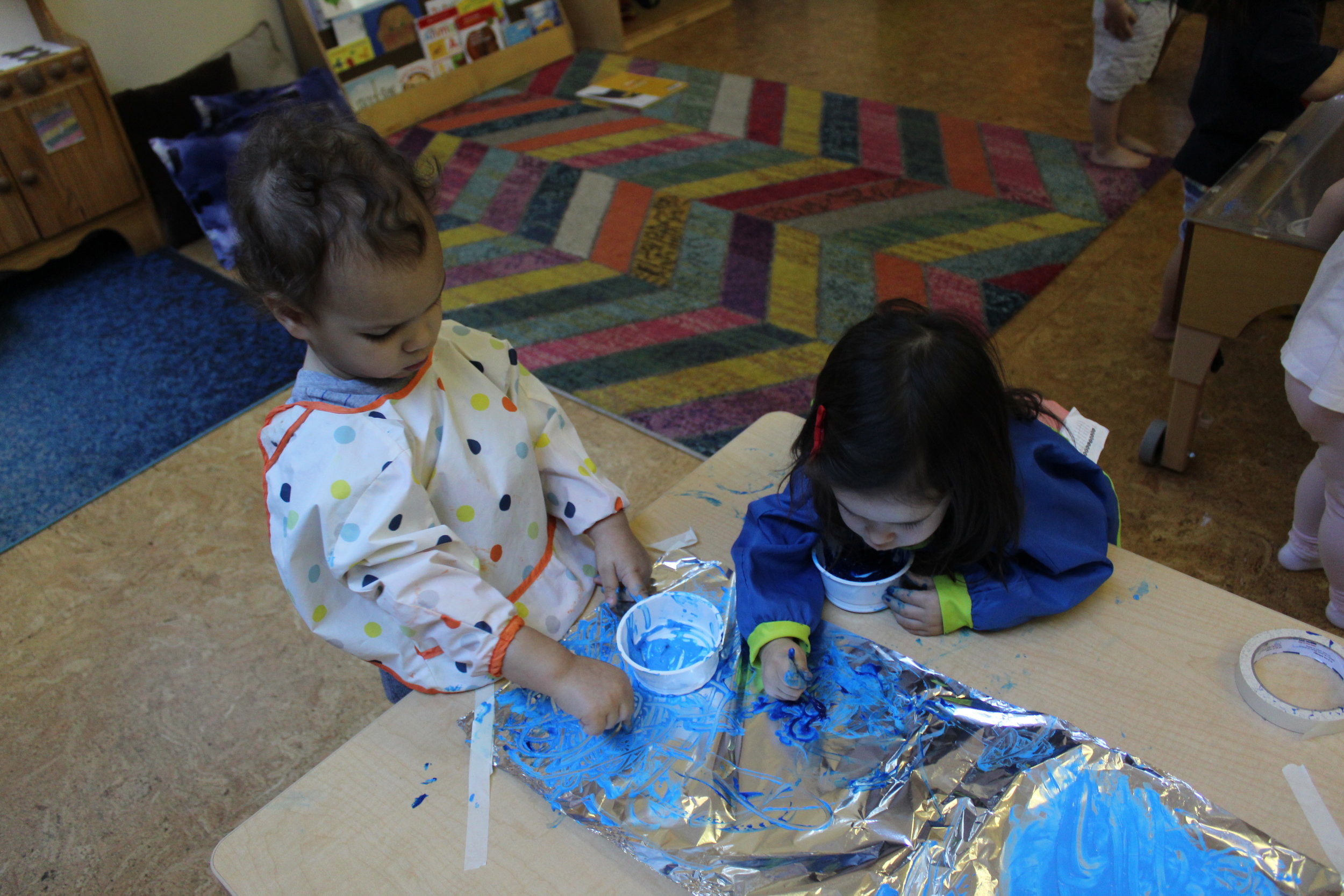
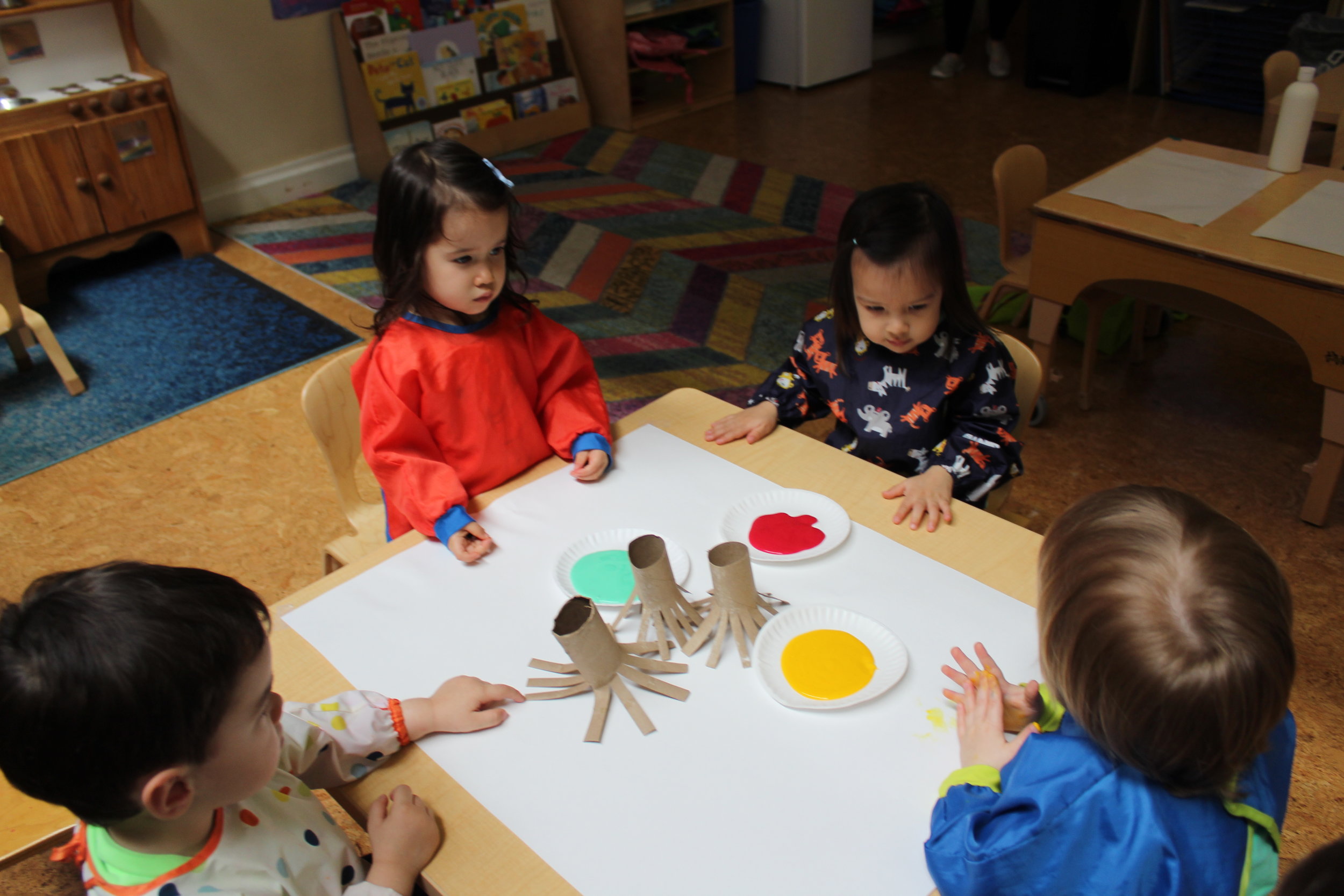
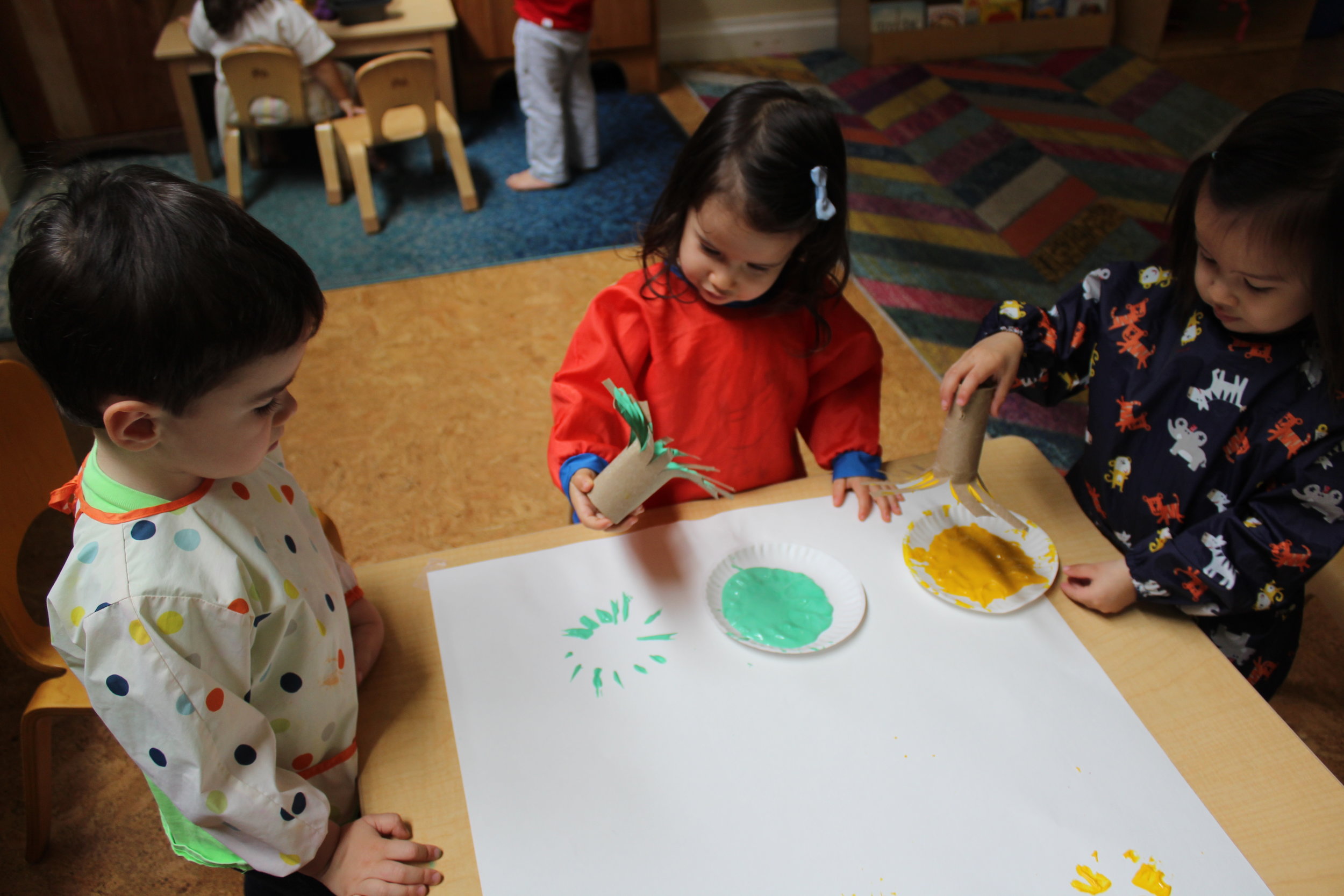
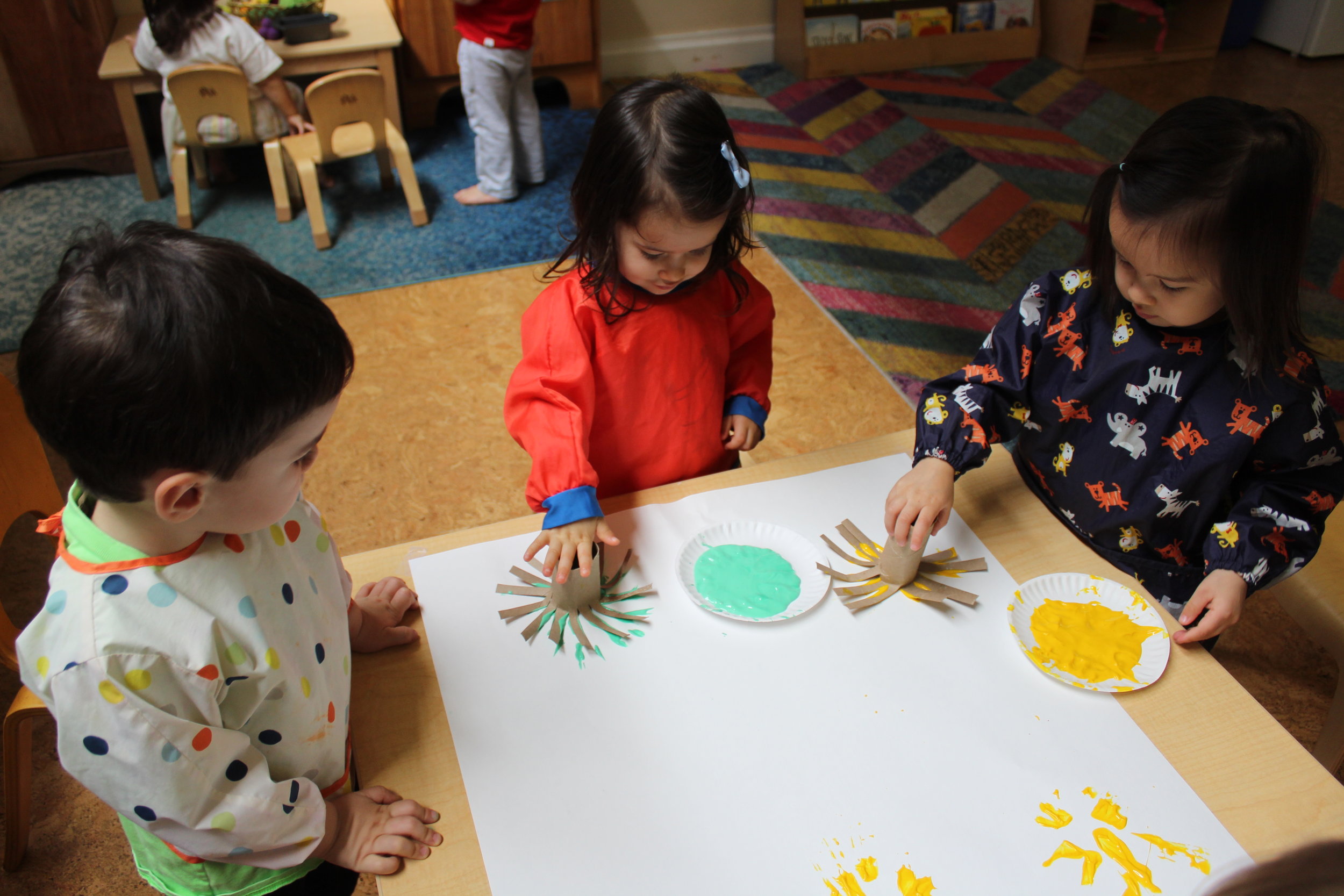
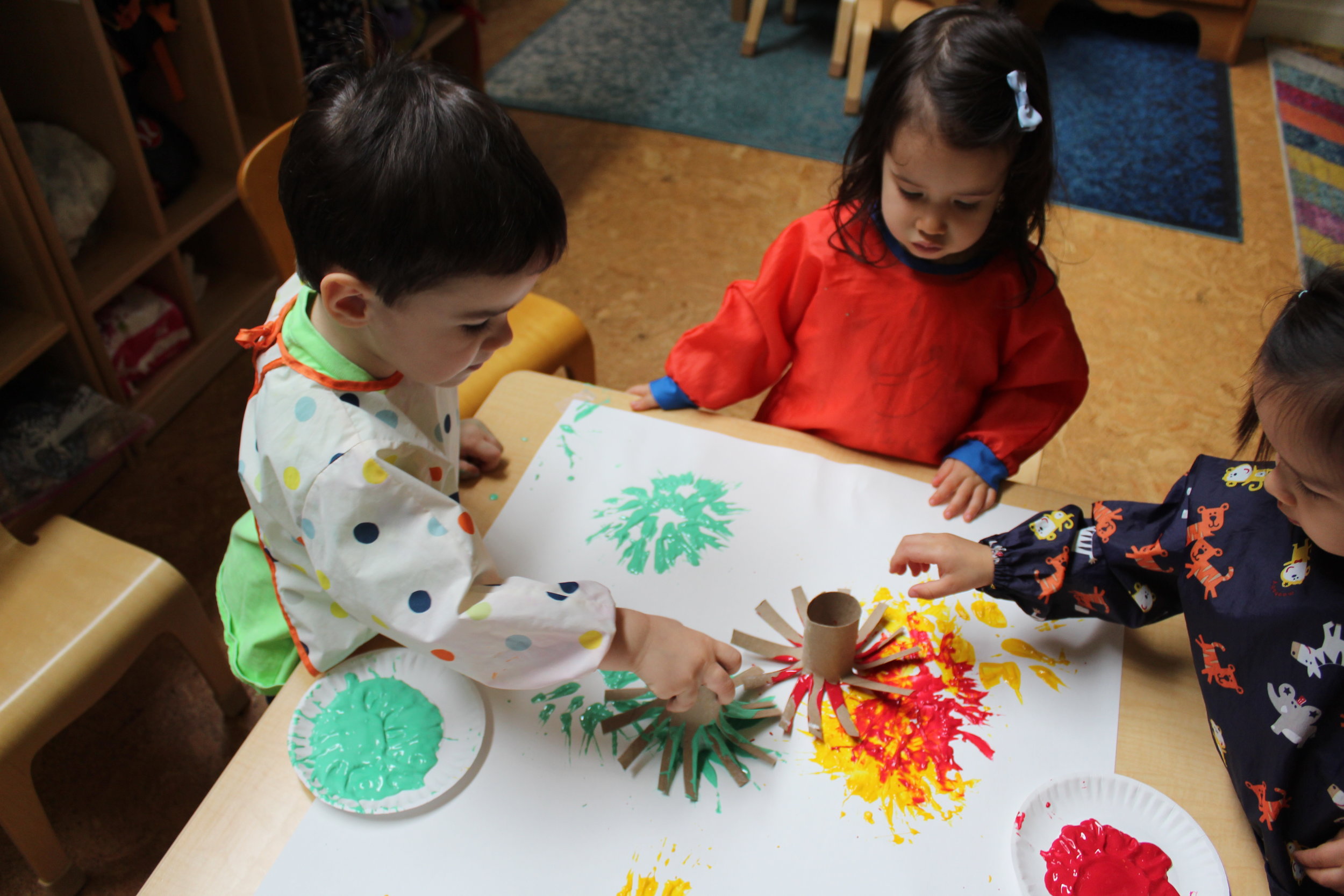
Recycled bathroom tissue rolls were used to create fireworks with paint. The cardboard rolls were cut into different lengths, creating cardboard roll fans. The children looked curious and excited as they pressed, creating different patterns.
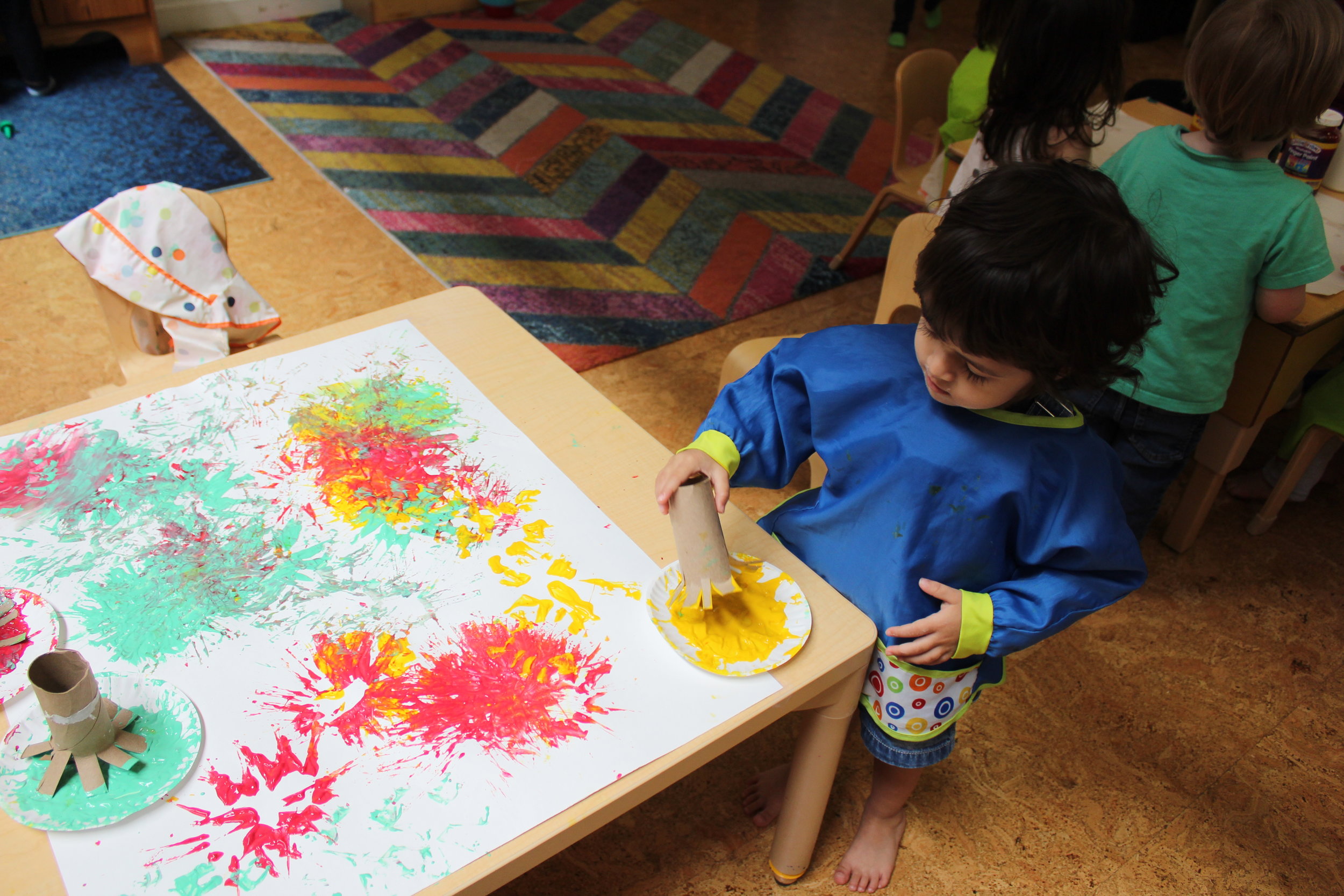
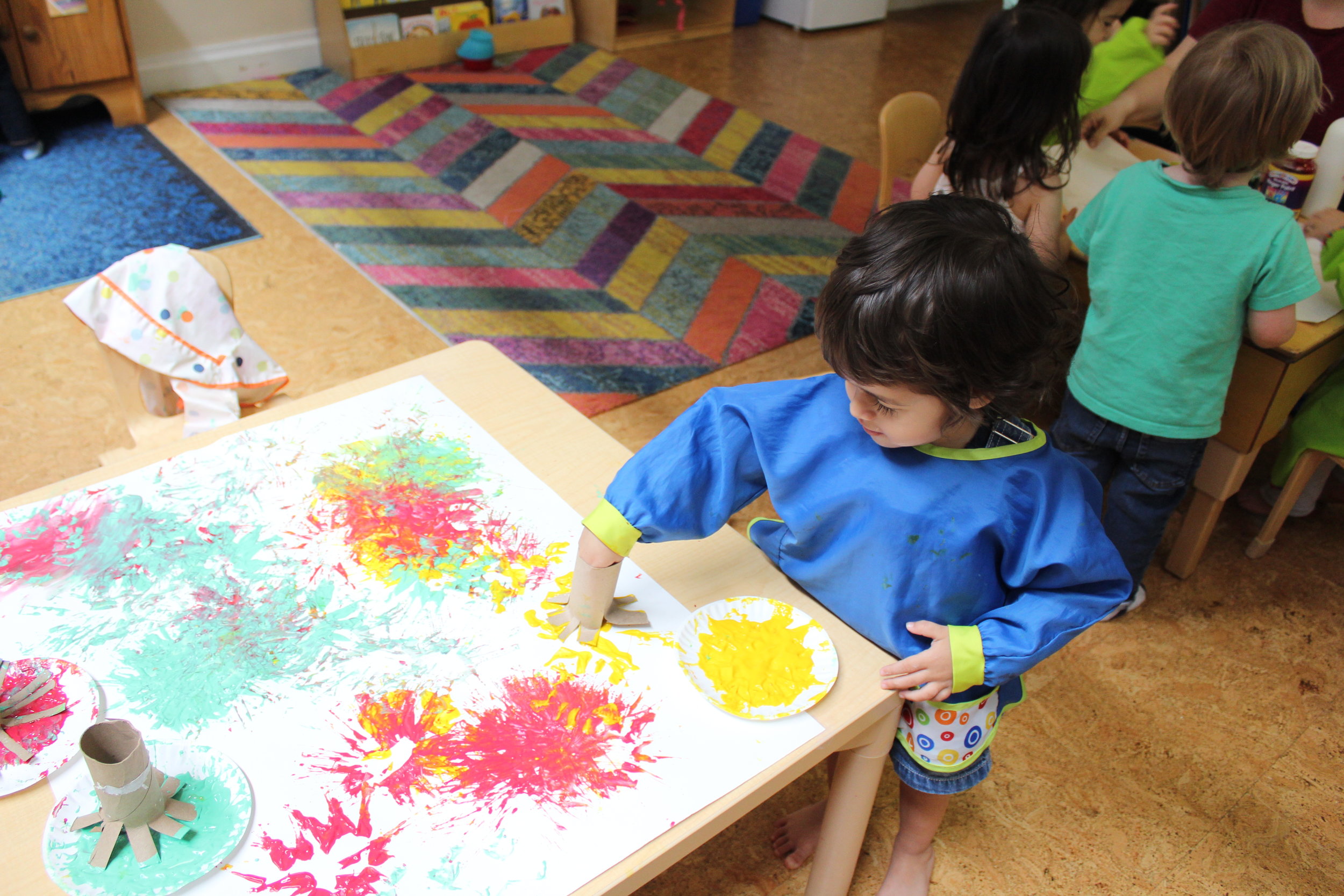
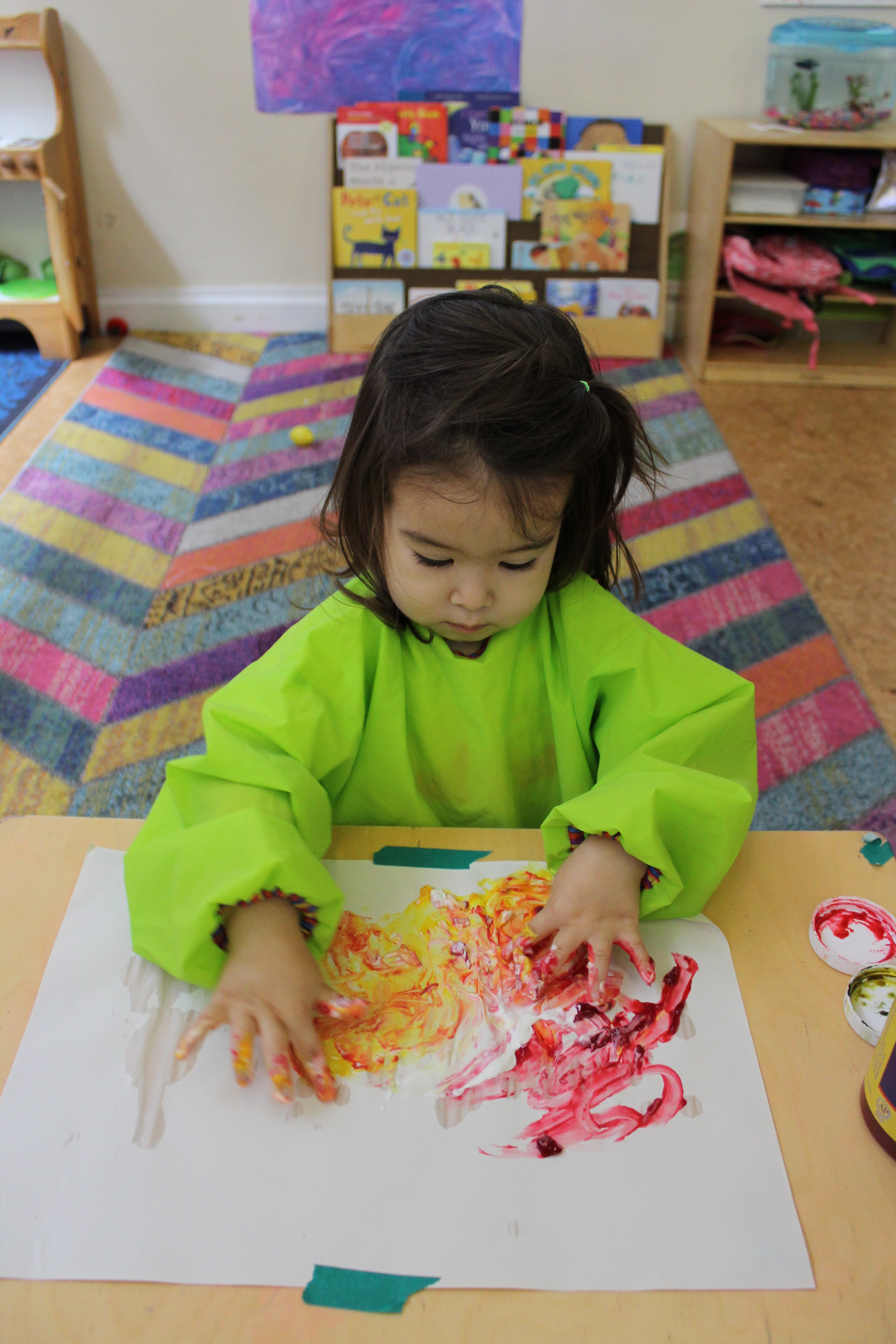
Fingerpaint is a kind of paint intended to be applied with the fingers. It allows children to use their imagination and create. It encourages cognitive development and strengthens the hand and fingers which helps with fine motor skills. Children use different techniques as they spread the color in different directions. Harlow uses a back and forth movement, Madeline, makes circling movements with her hands, creating circles, Rheya uses her fingertips to spread the paint, and Ellis maintains moving his hands back and forth, covering the paper on each side without mixing the two colors.
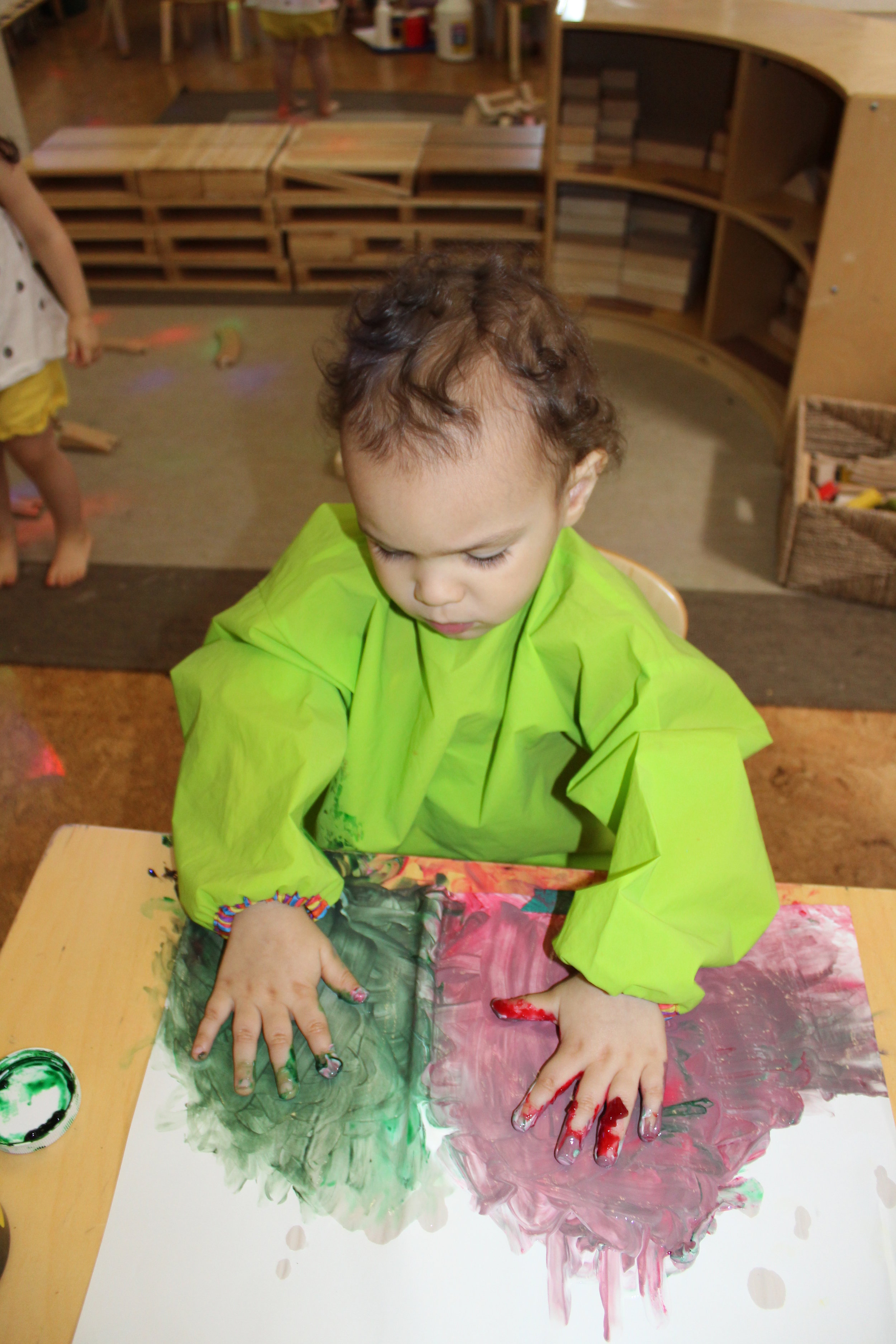
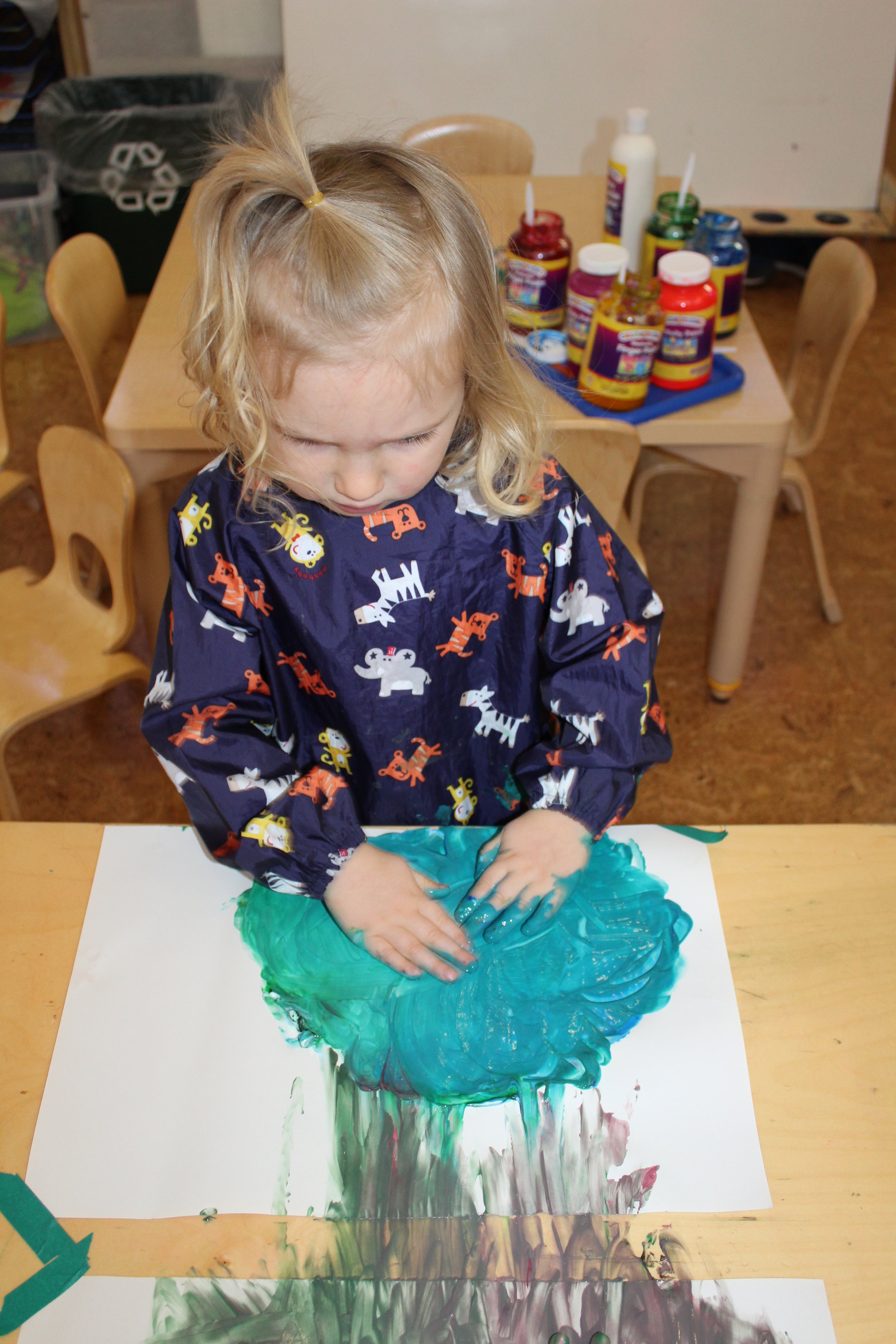
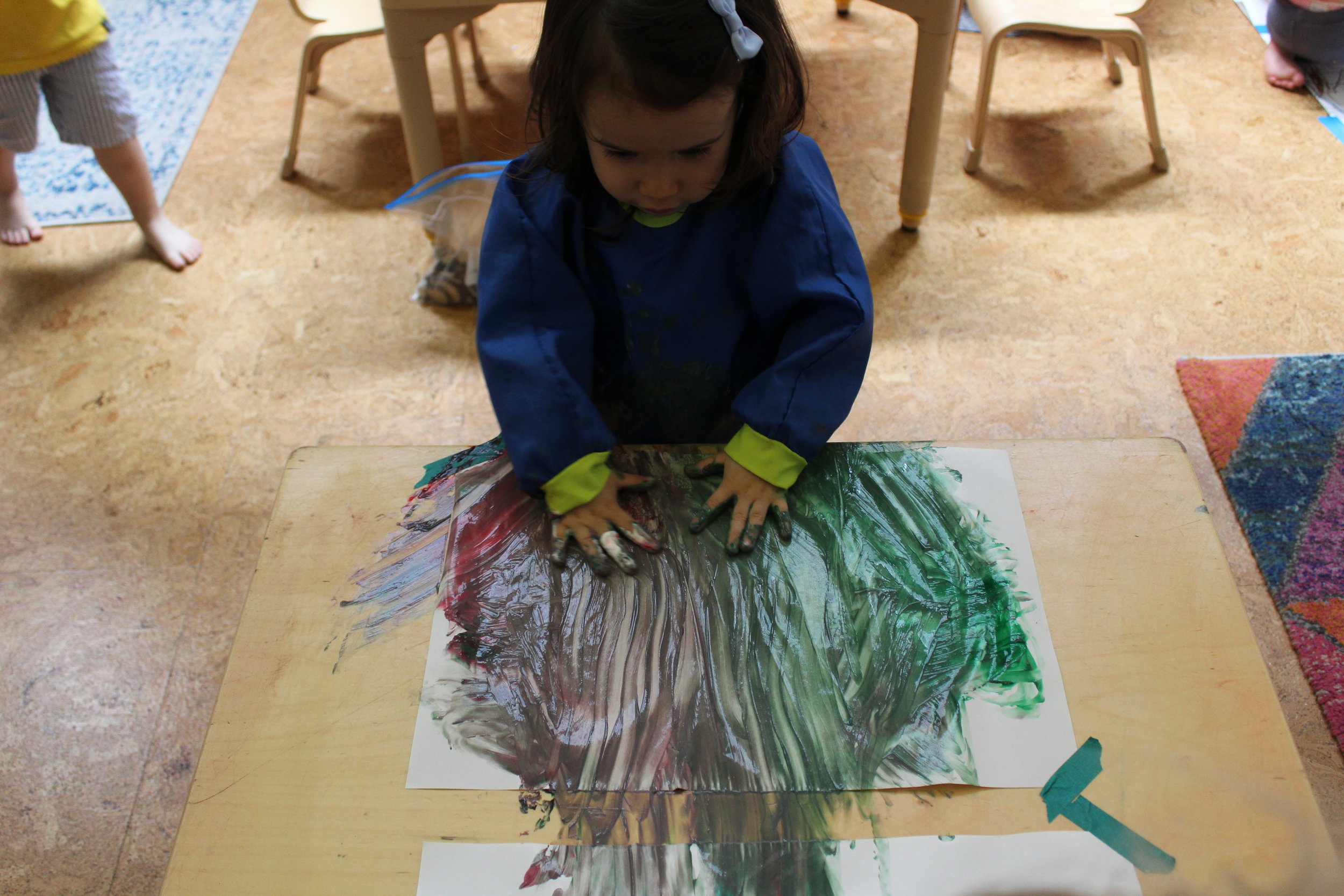
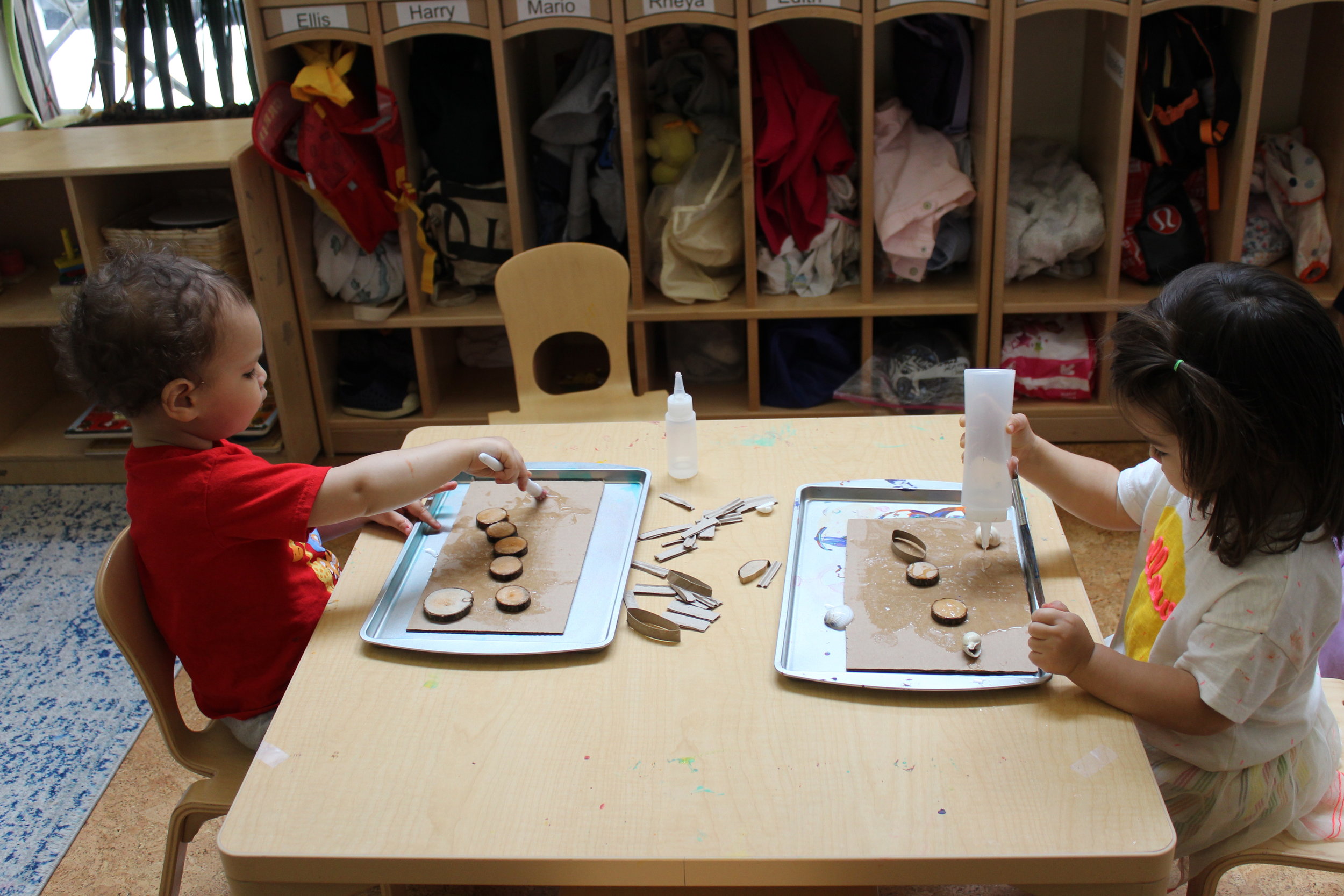
Ellis and Rheya squeezed some glue on a square piece of corrugated cardboard. They applied the glue with a paintbrush and selected different items for their collage. They seemed to enjoy exploring the materials, as they focused on squeezing and spreading the glue. They each had different ideas on how to arrange their materials. This activity promotes fine motor and cognitive development, creativity, and imagination.
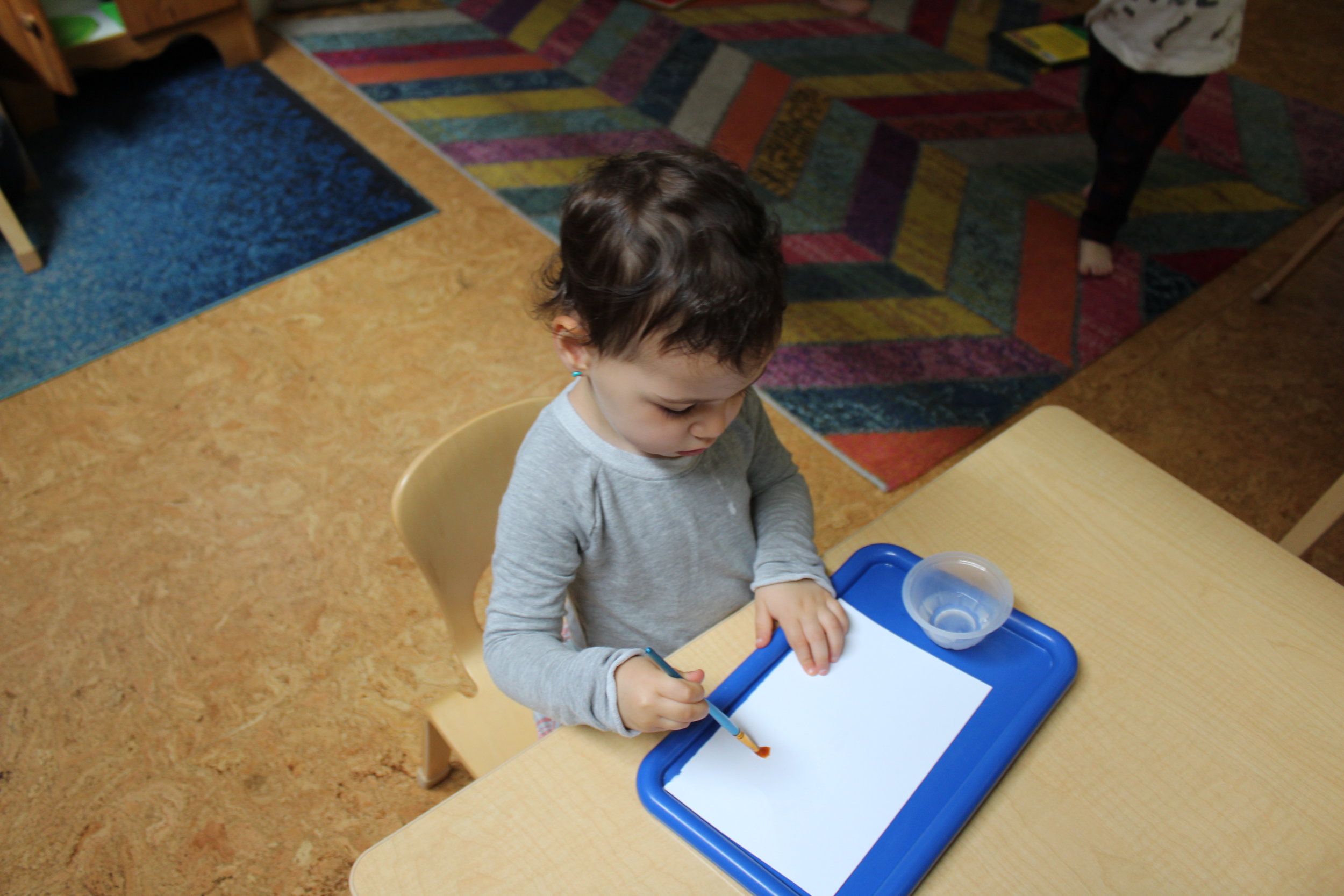
A collage is an artwork made up of different papers or objects glued together. The two-step process art, applying glue and pasting the tissue paper seemed to intrigue the children. Exploring and experimenting with the arrangement of shapes on paper, helps young children develop thinking skills. I wonder if they are making pictures or just enjoying combining shapes and colors.
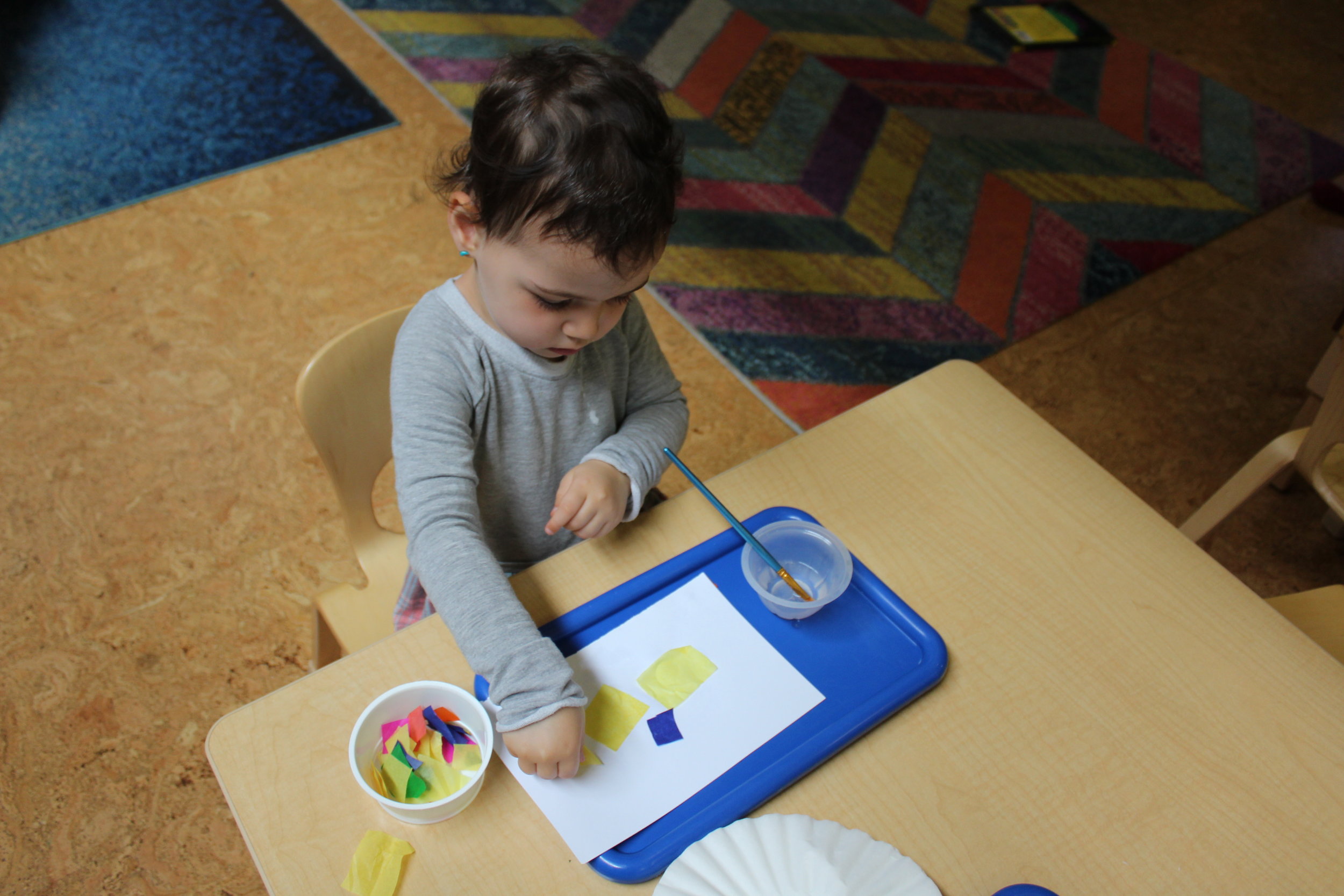
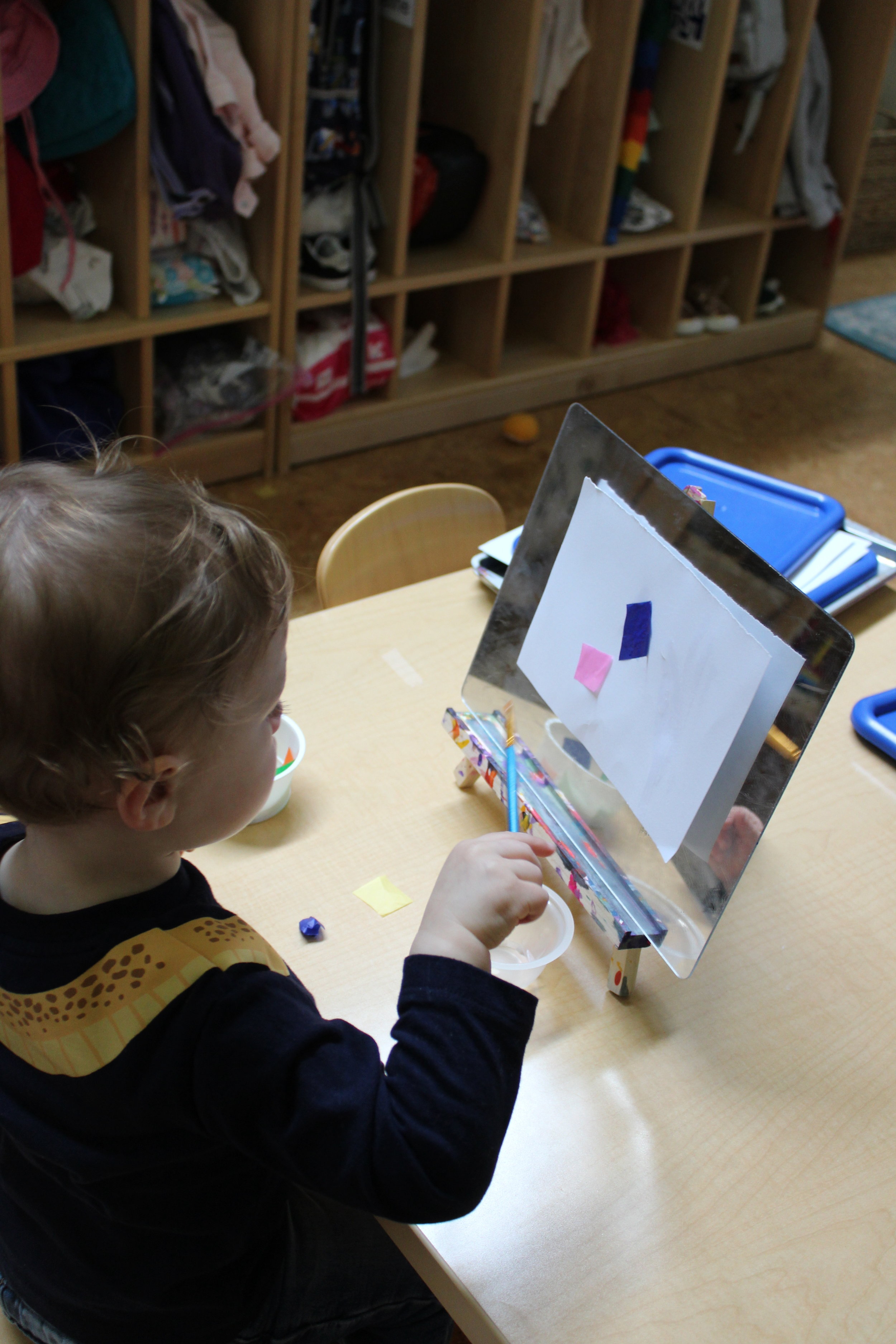
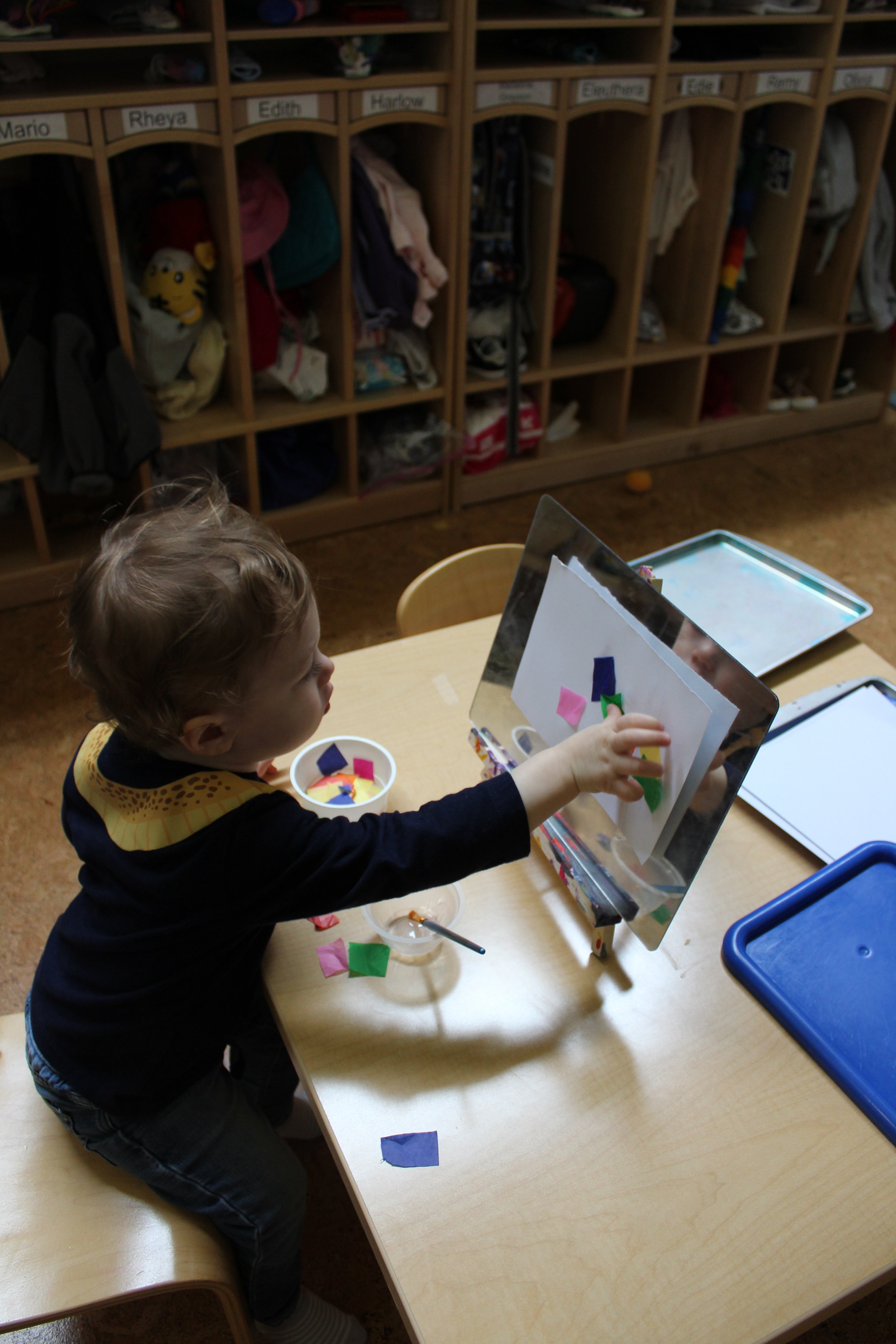
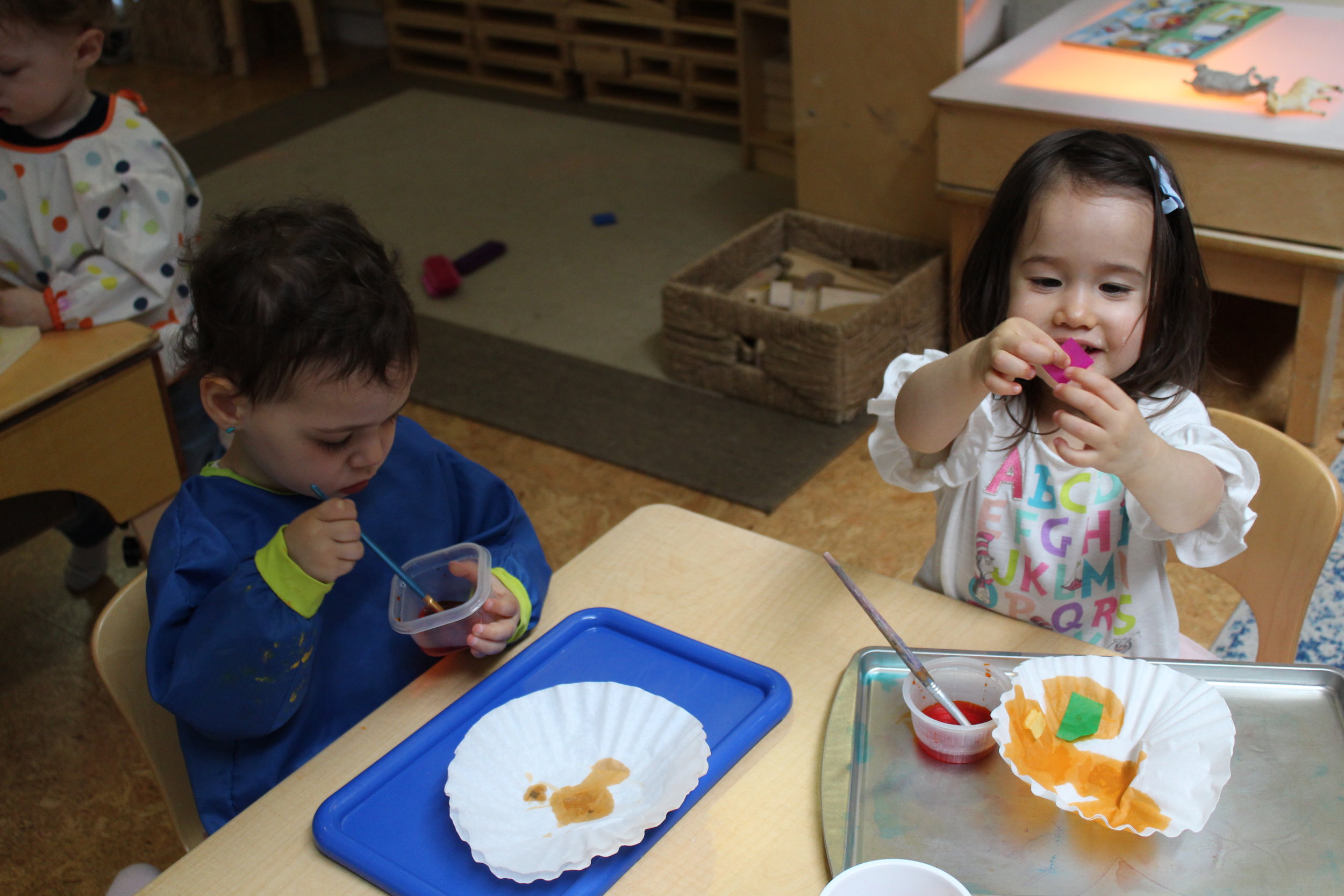
Manipulative:
Sensory:
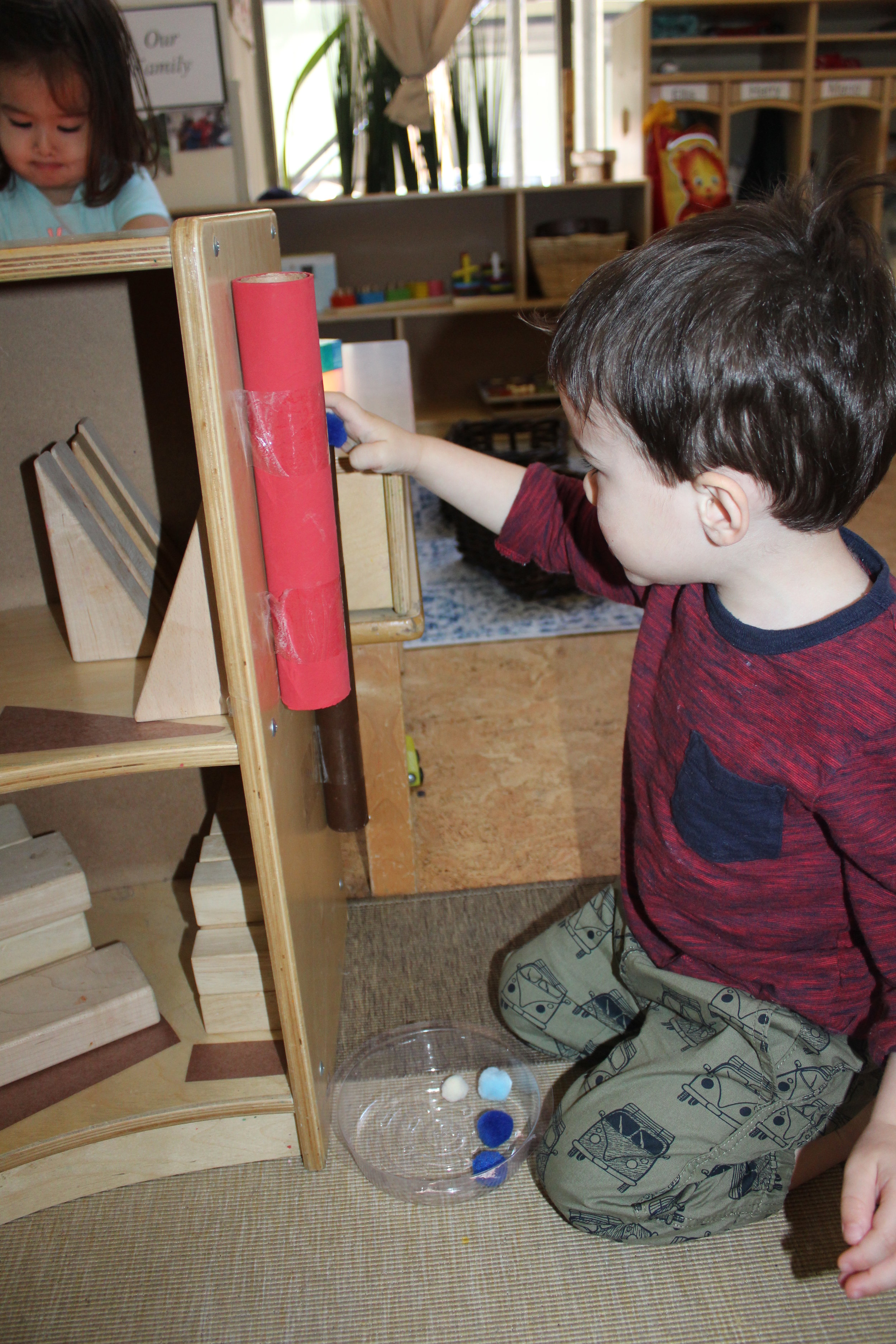
A paper roll and different size of pom-poms are excellent materials to explore the hypothesis, “Will this pom- pom fit and drop?” Mario inserted the pom-poms and discovered one did not drop. He looked puzzled! He pushed and pushed with his finger, but it was stuck. It was too big! The teacher helped him remove the stuck pom-pom, and he eagerly continued inserting and releasing them into the opening. Mario appeared amazed and smiled as he noticed they went through the opening. I wonder if he realized that the opening of the paper roll and the size of the pom-pom makes a difference for a pom-pom to drop. As he continued playing, he selected the small pom-poms, not the big ones.
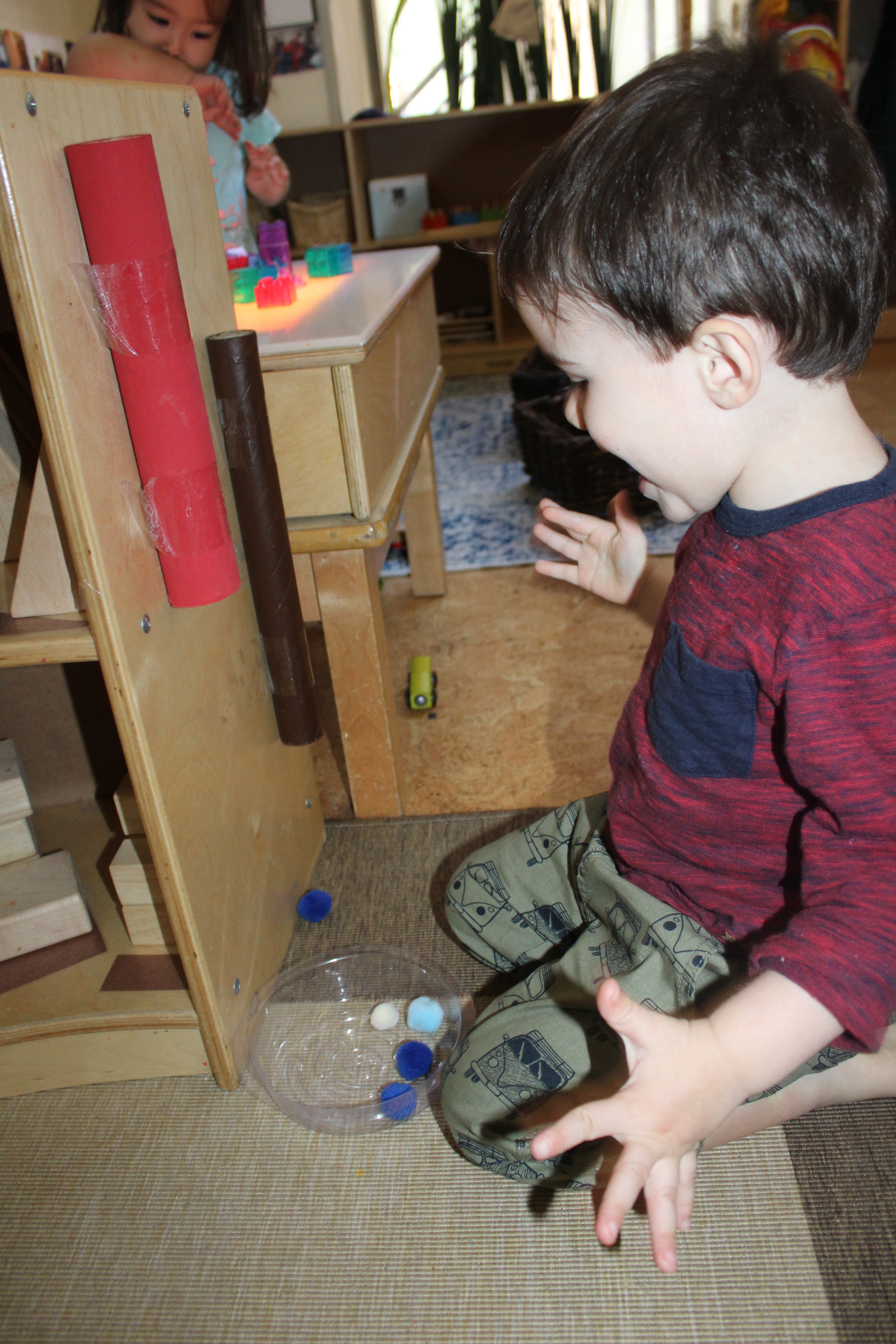
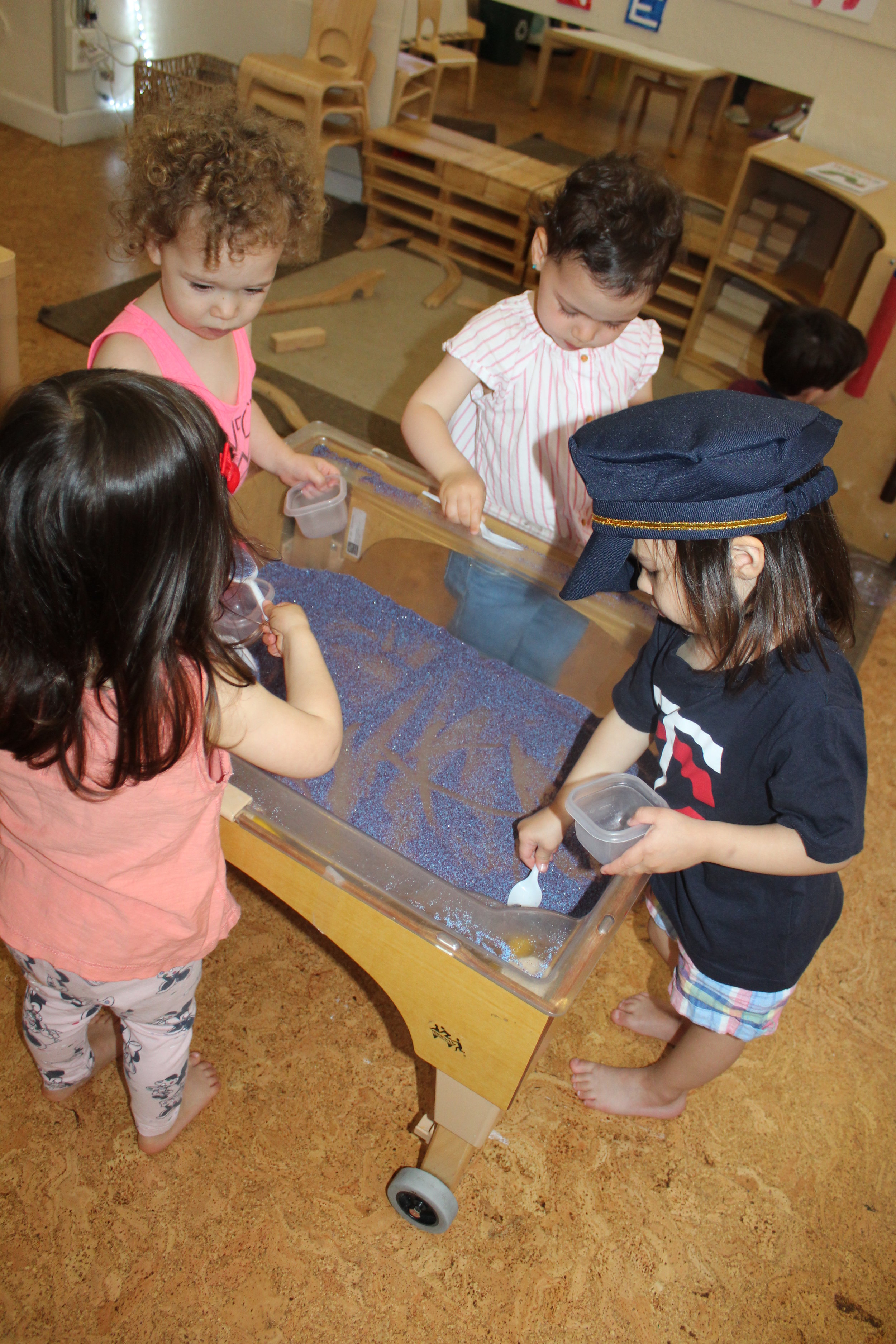
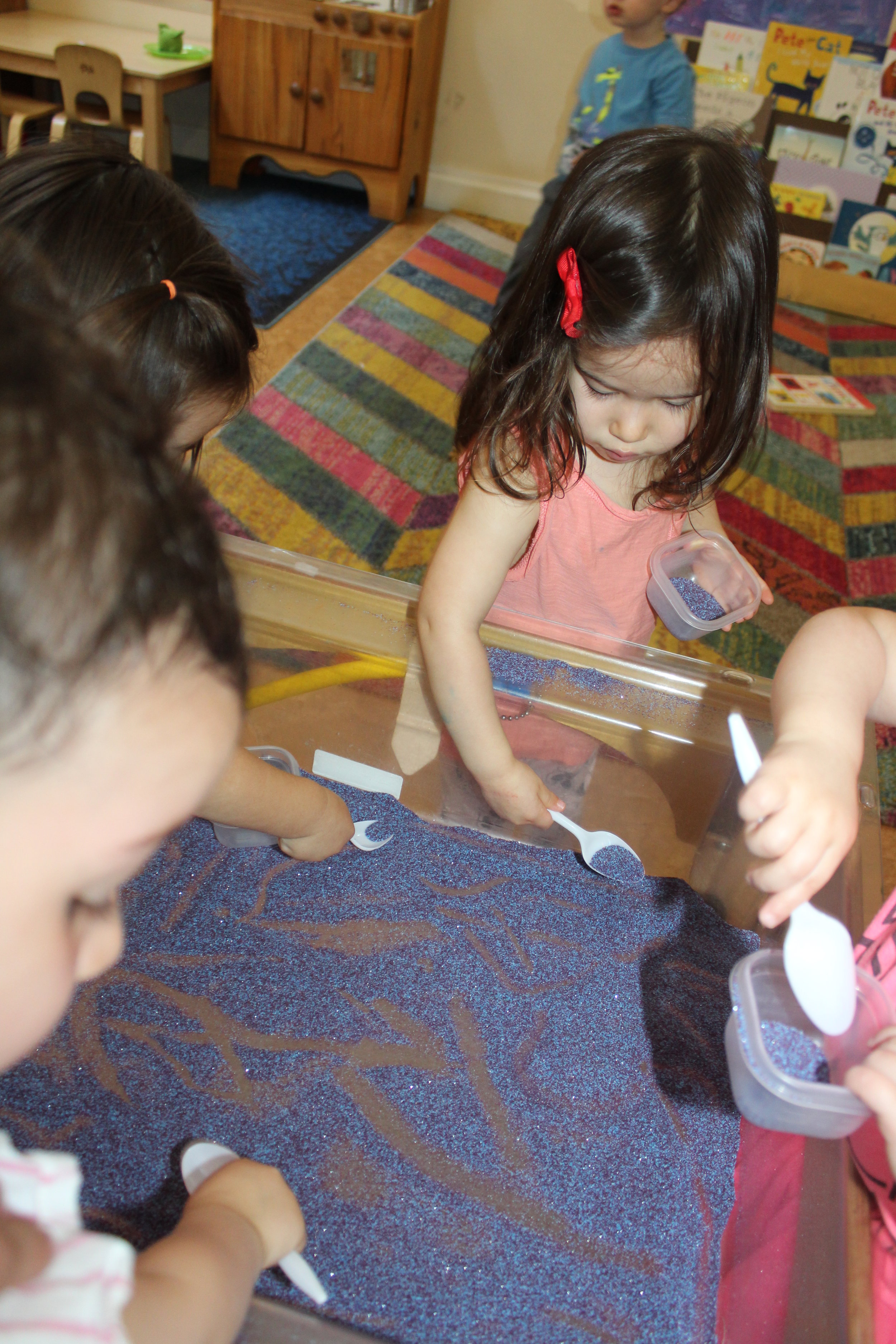
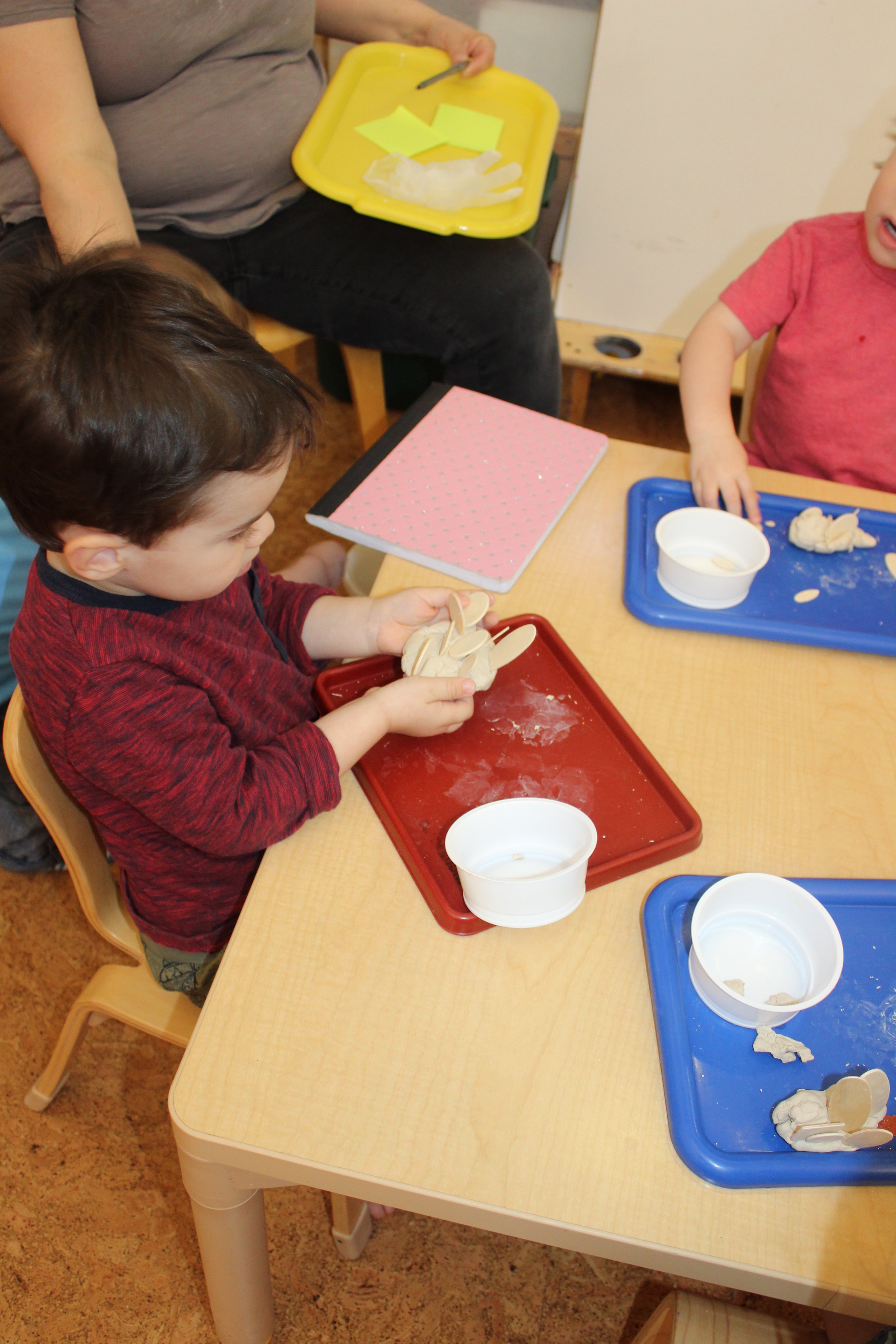
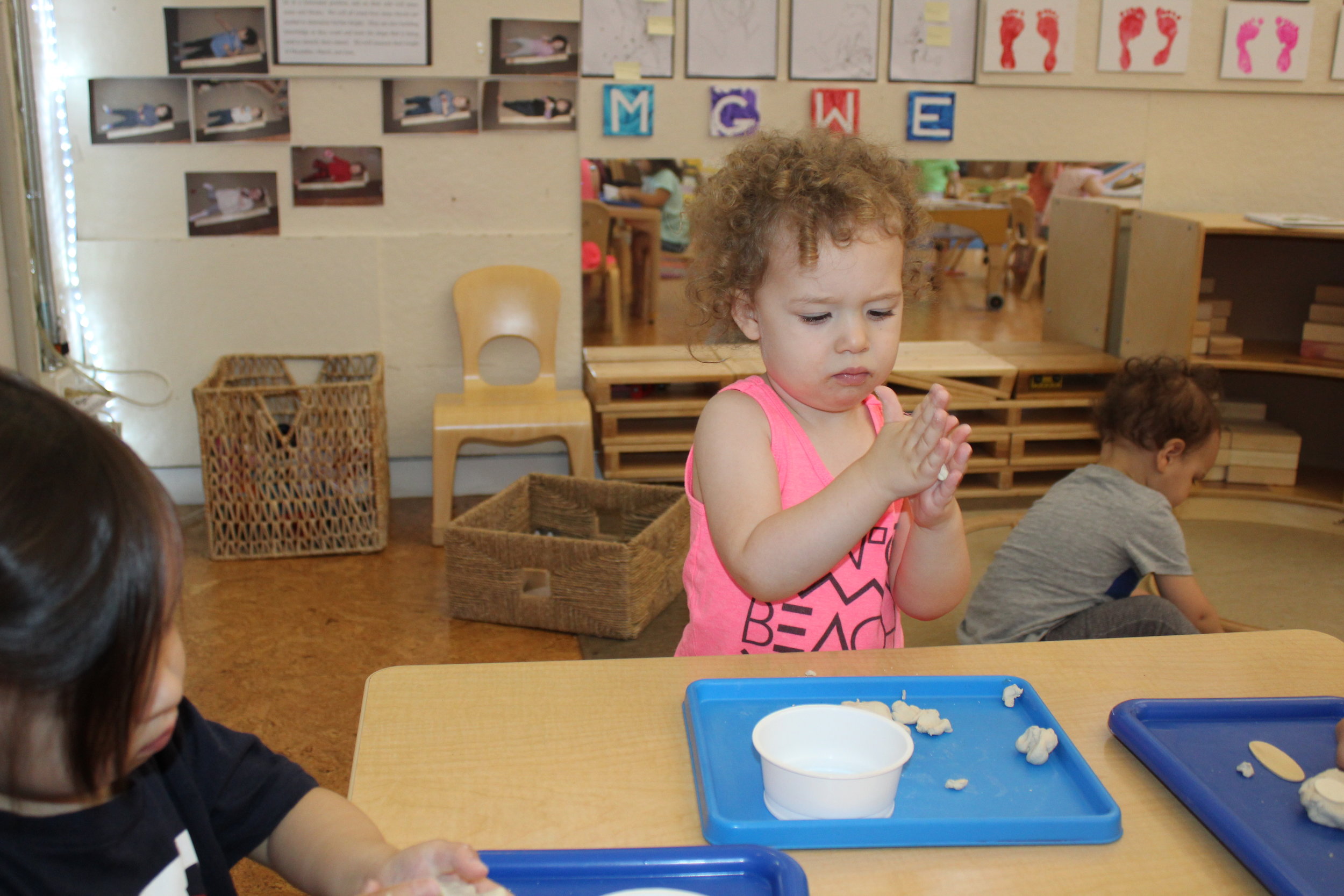
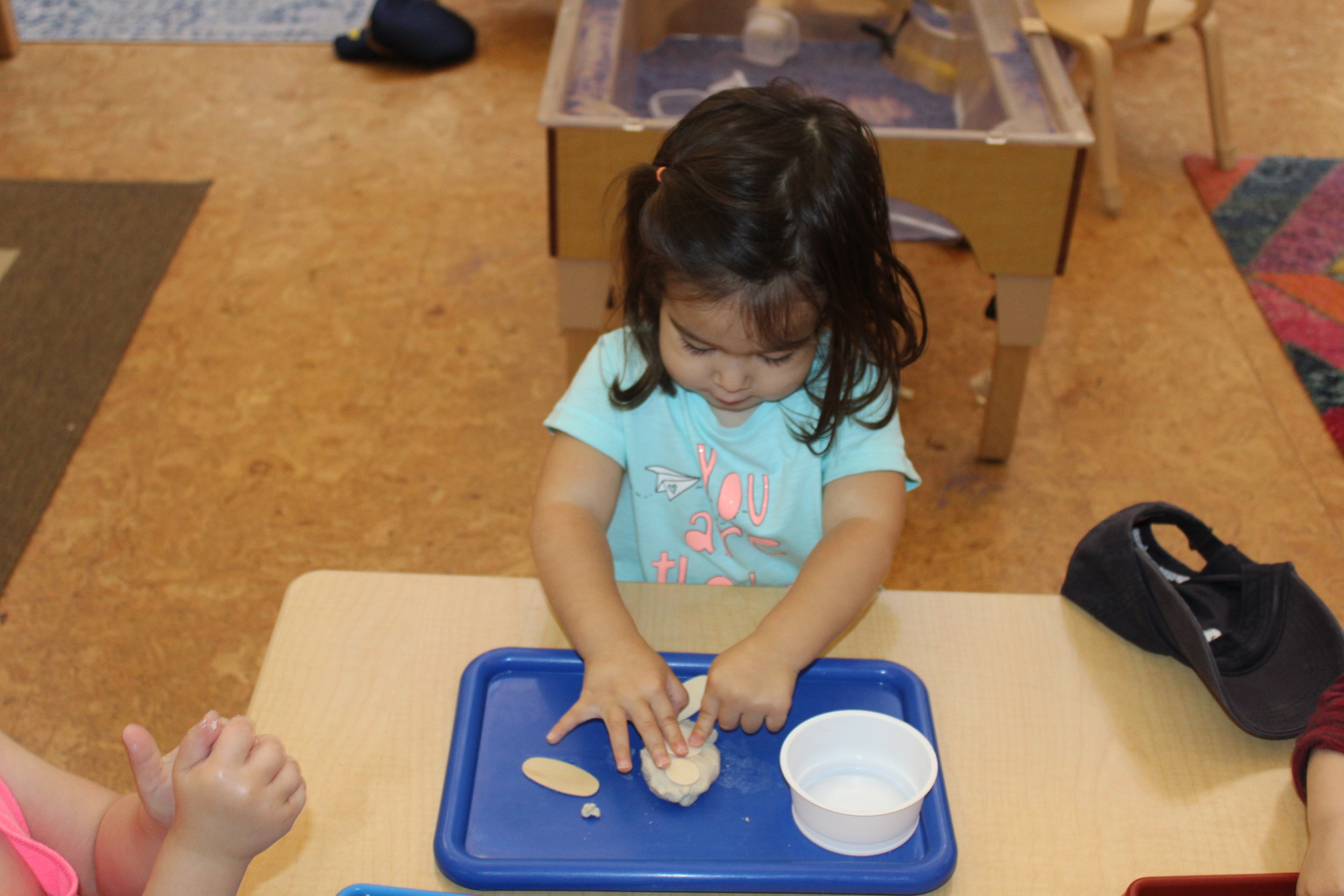
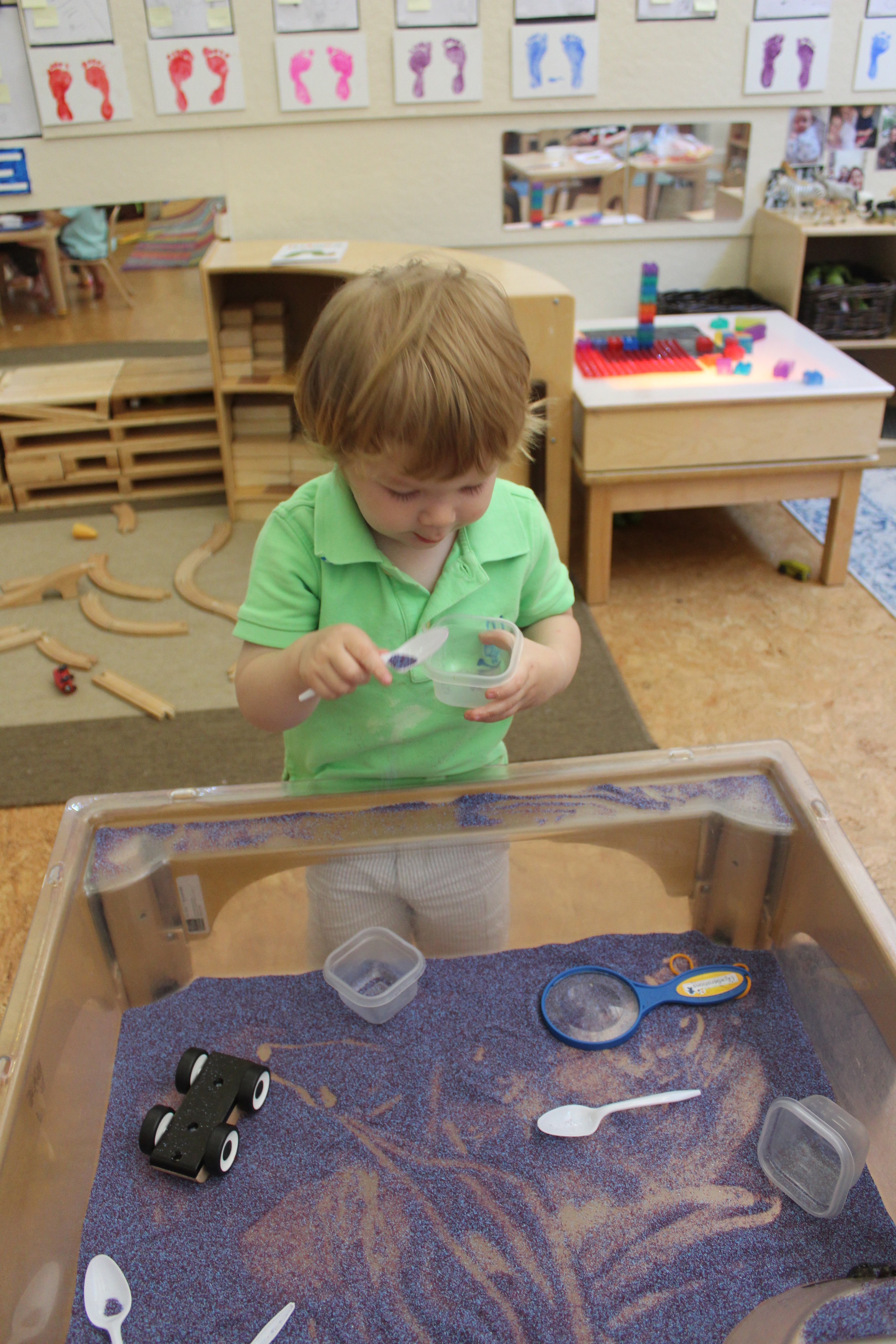
Revisiting the color changing milk experiment! The children that have not experience observing the experiment had the opportunity to watch, explore and discover the science of milk and dishwashing detergent.
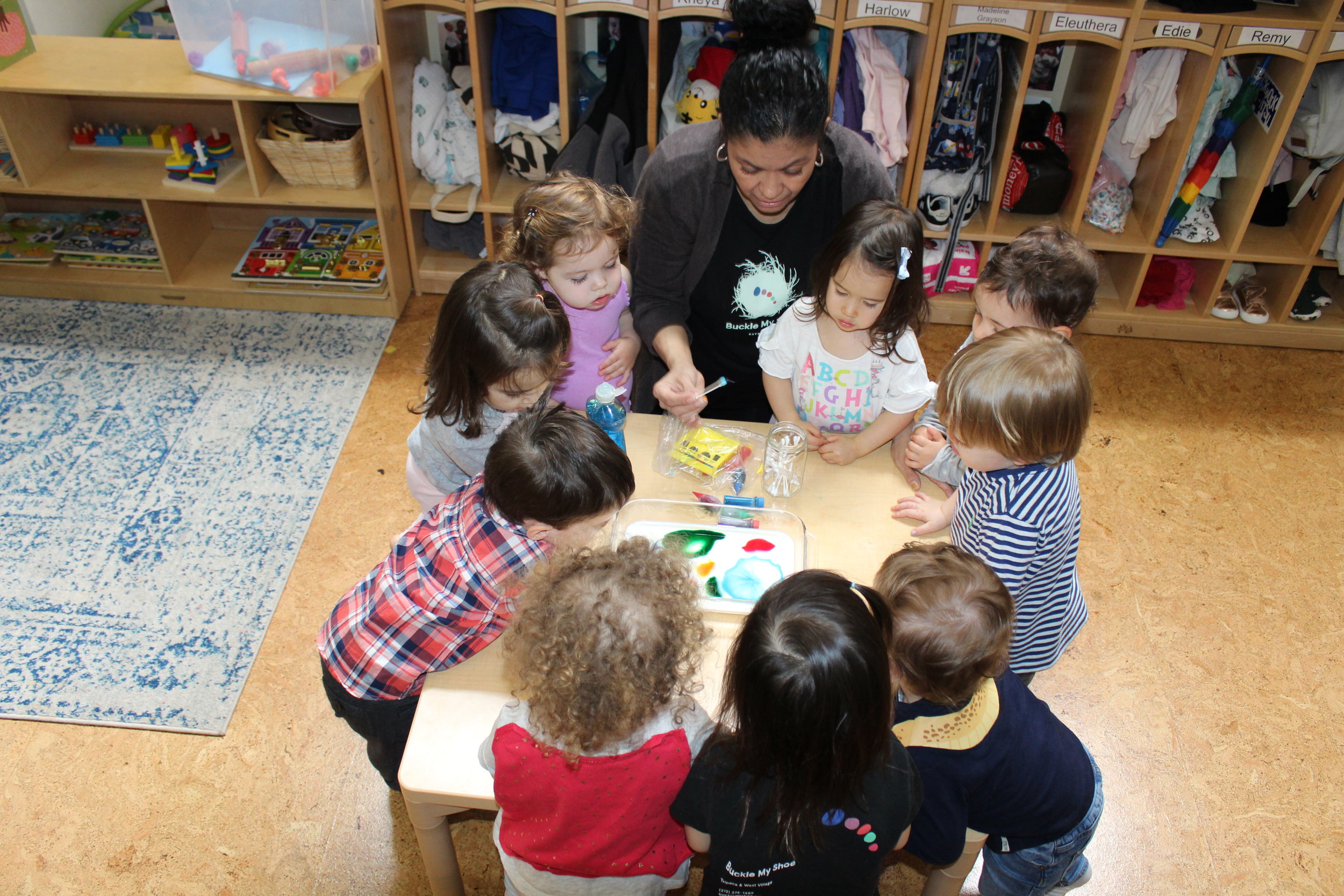
We did a science experiment, using whole milk, dishwashing detergent, and food coloring. The next part of the experiment, the teacher, dipped the tip of a cotton swab into the dishwashing detergent and gave one to each child. With guidance, they gently touched the surface of the milk with the cotton swab. The colors burst and move swiftly in different directions.
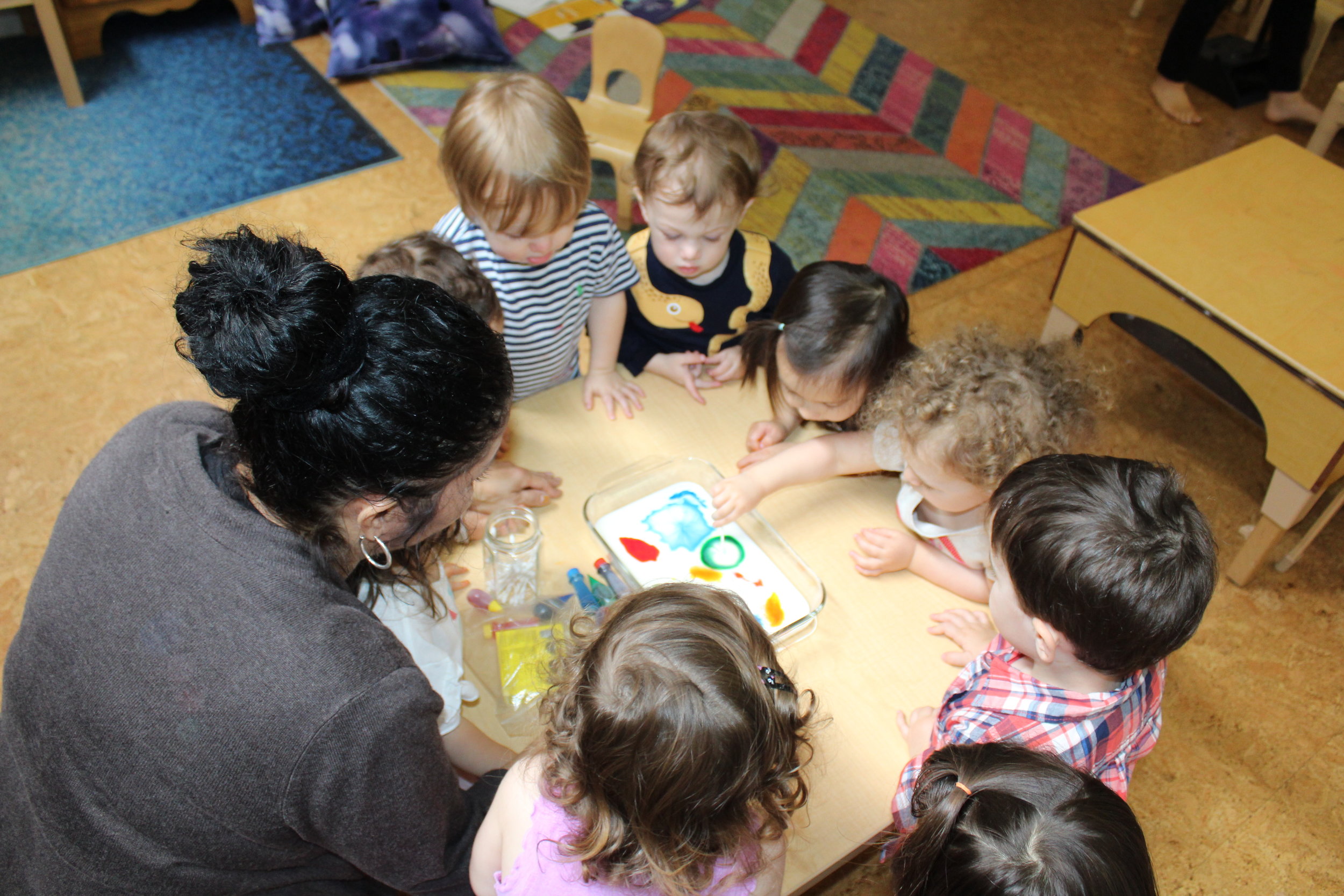
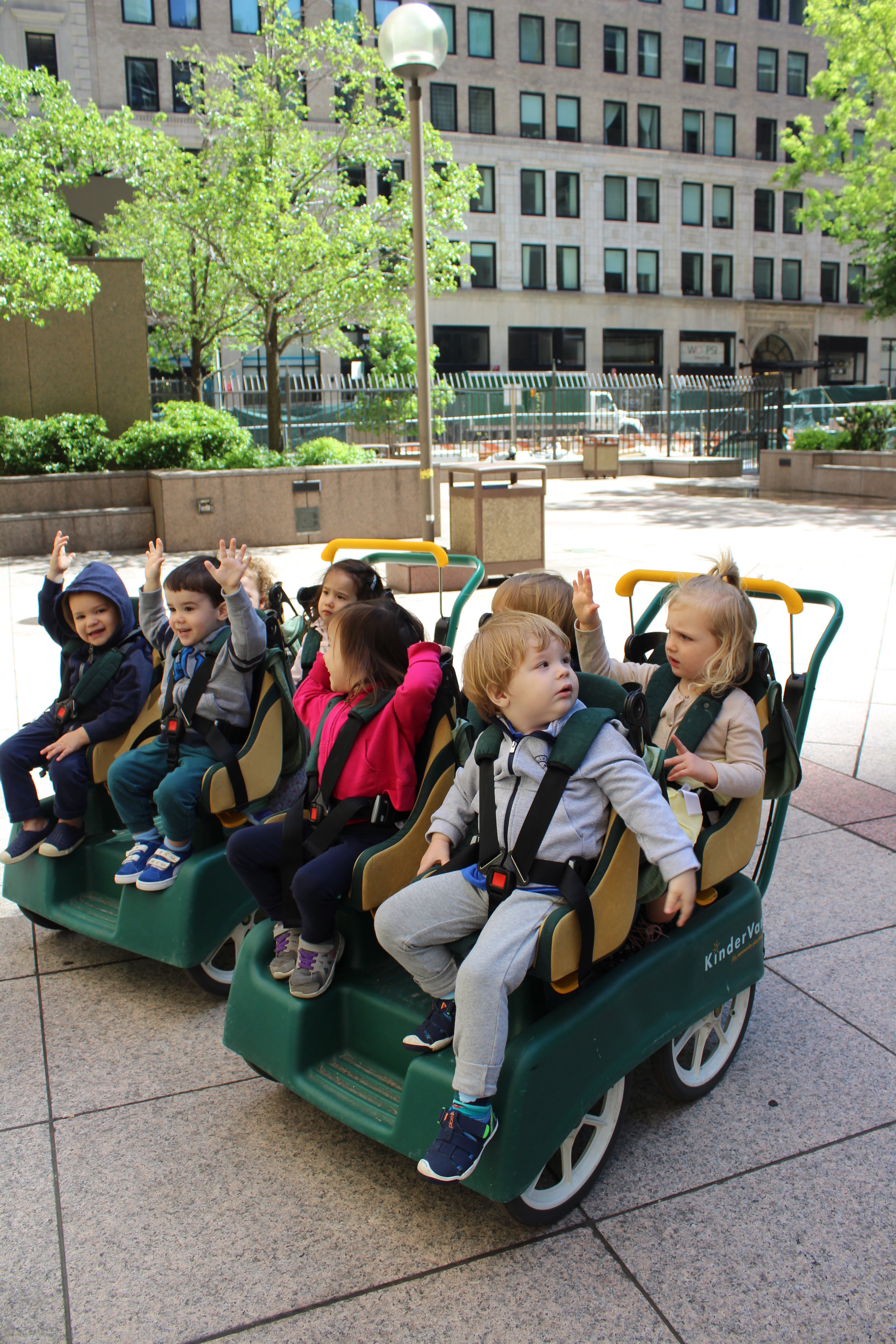
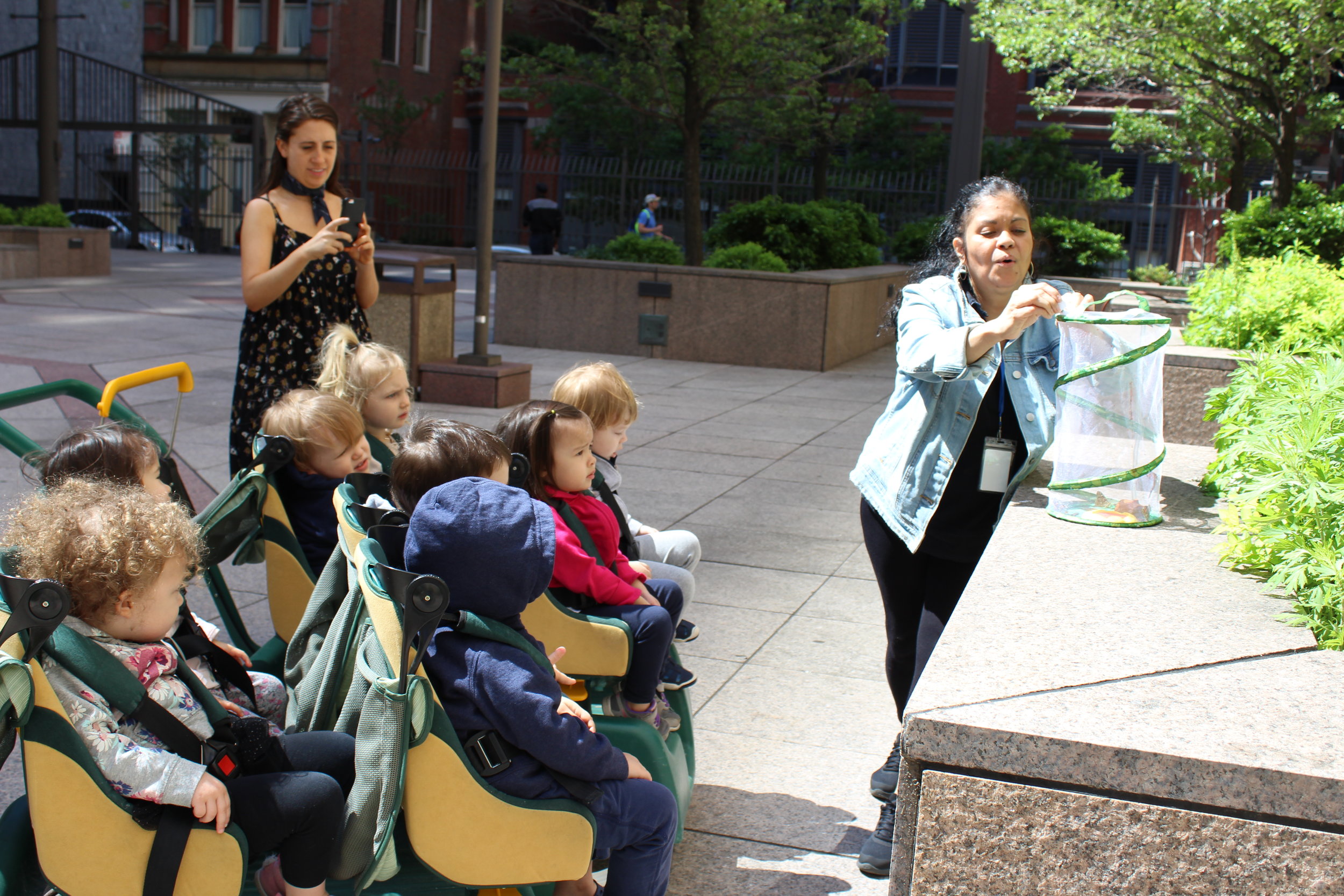
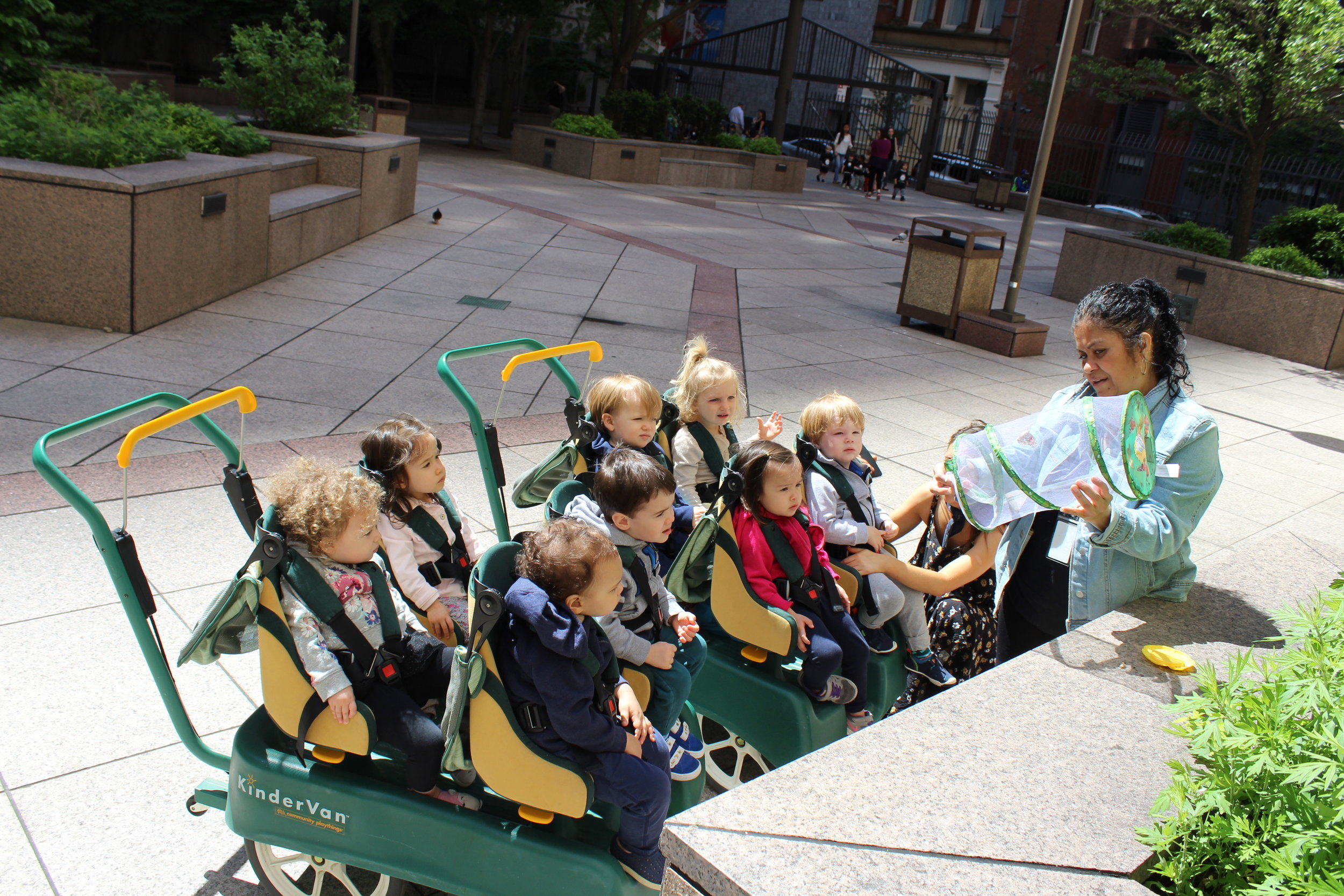
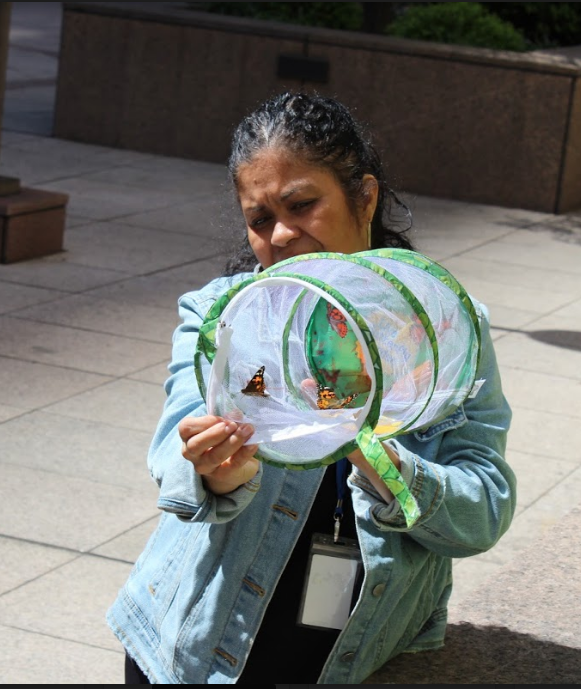
We released the butterflies into the world. The children carefully watched them as they flew.
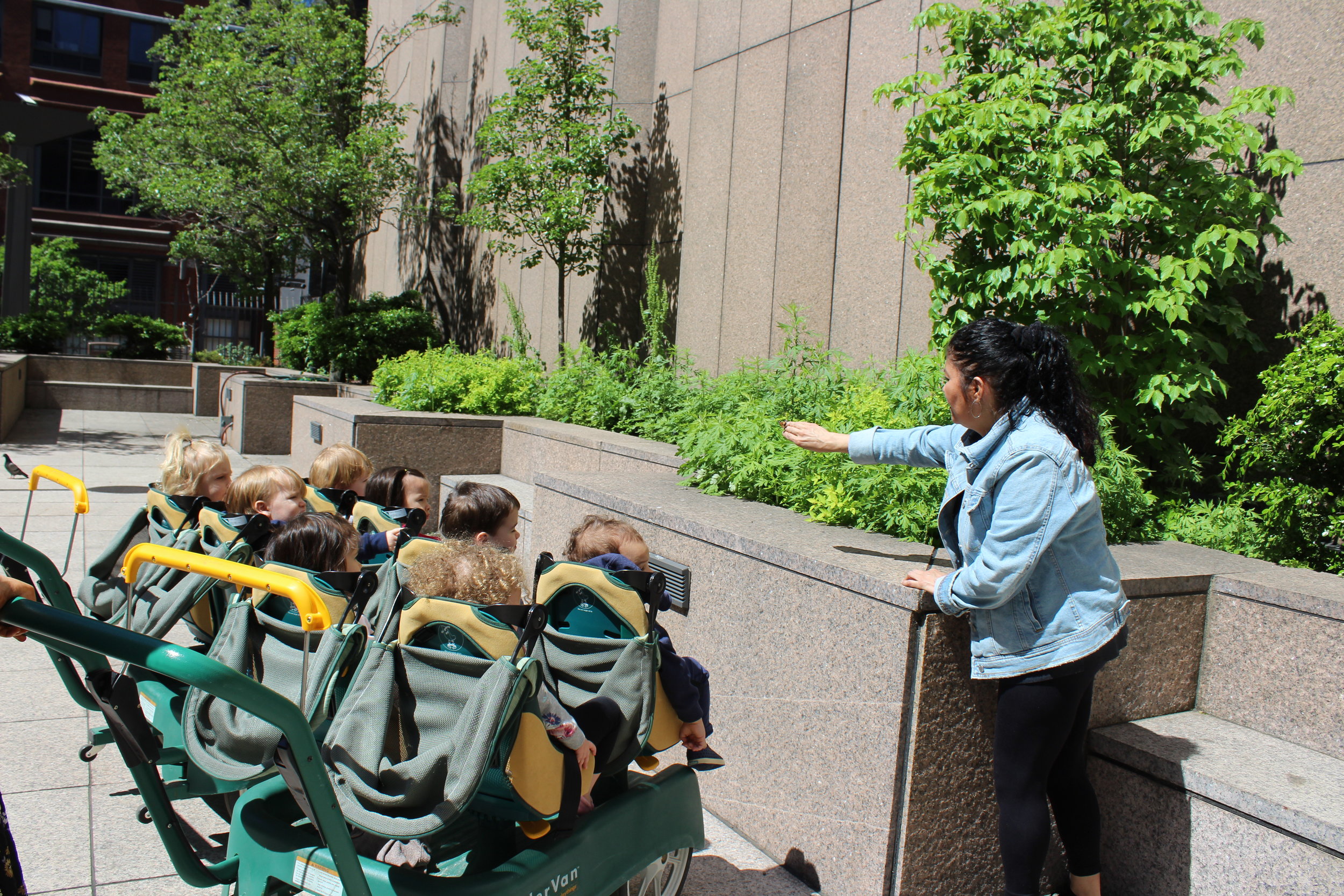
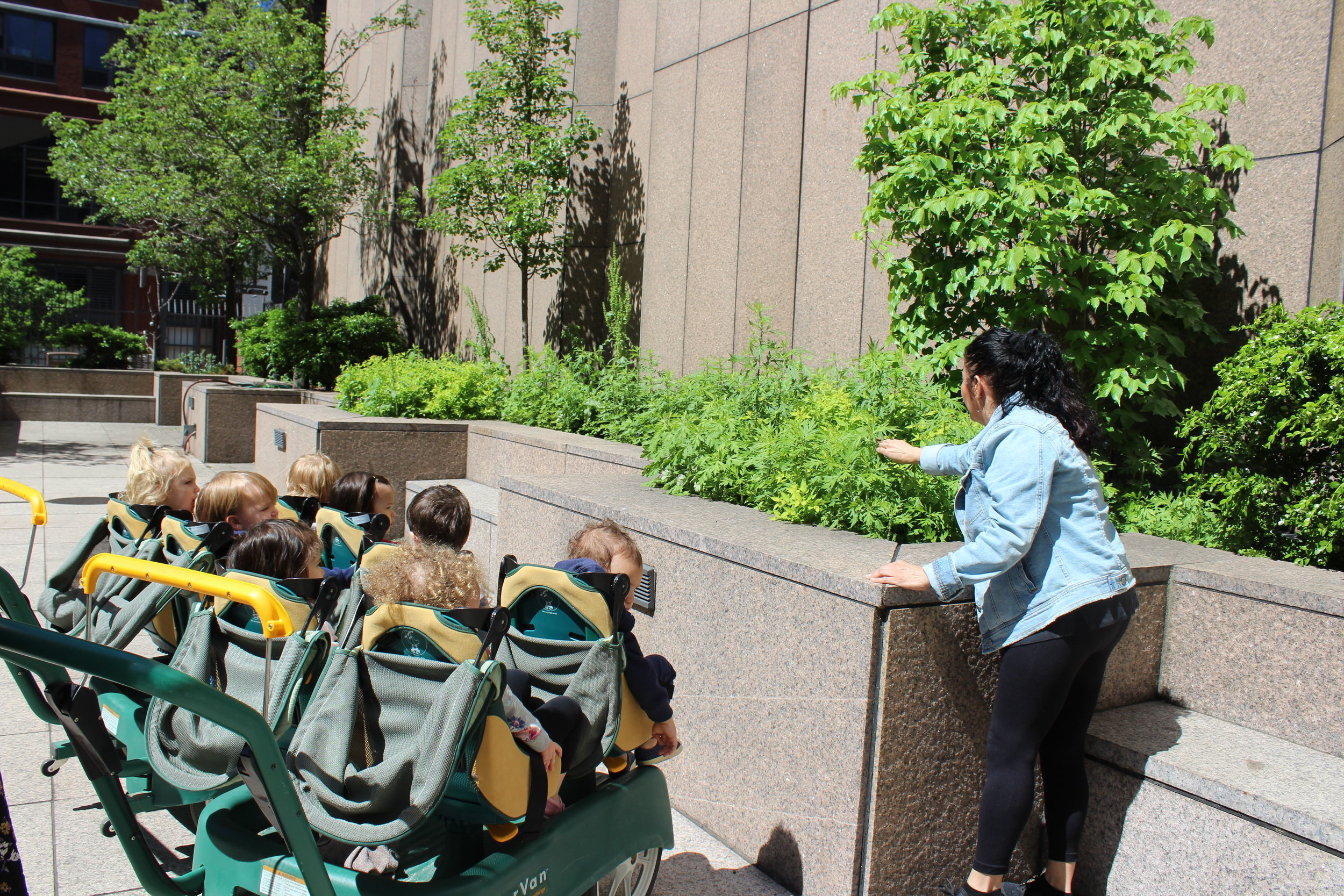
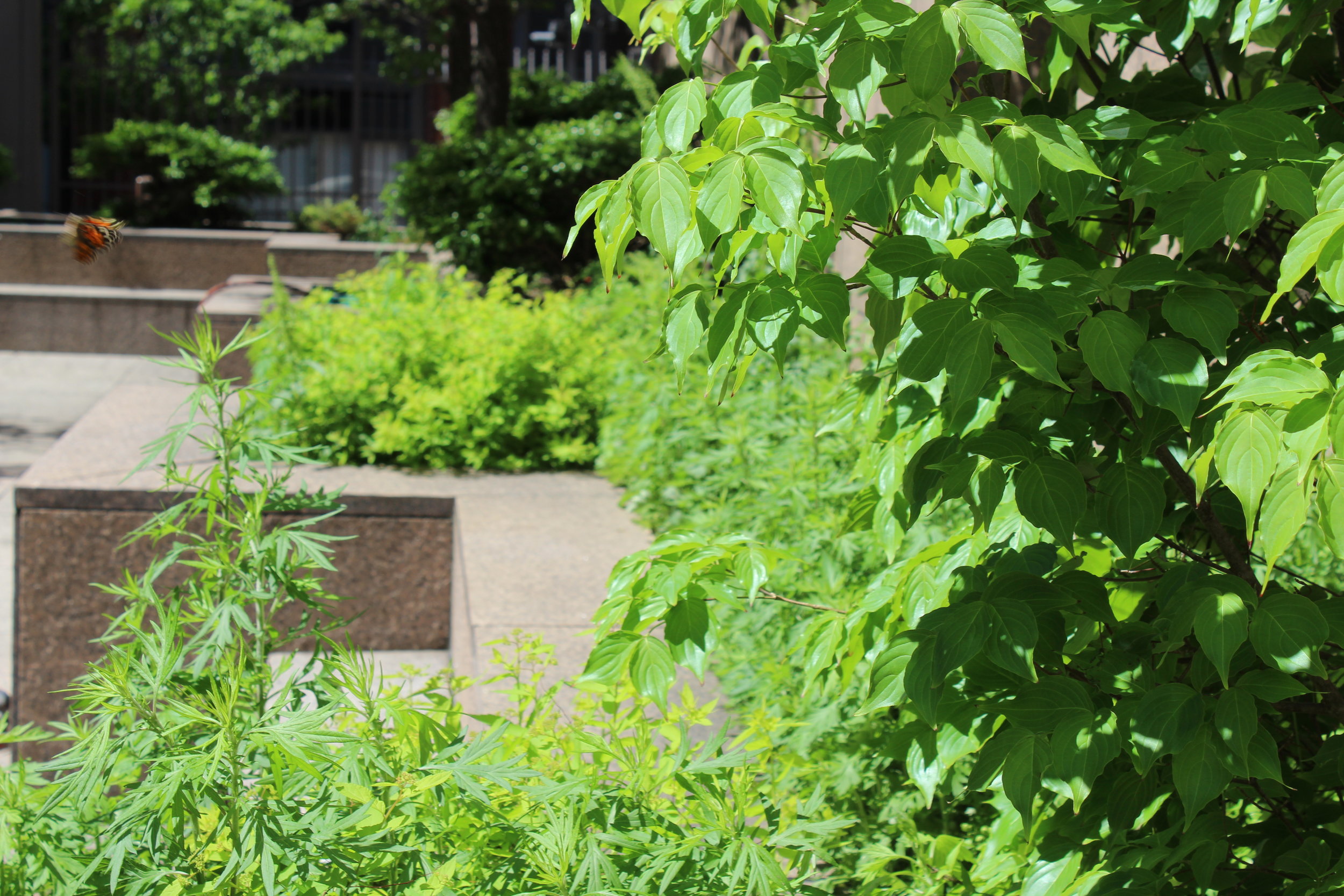
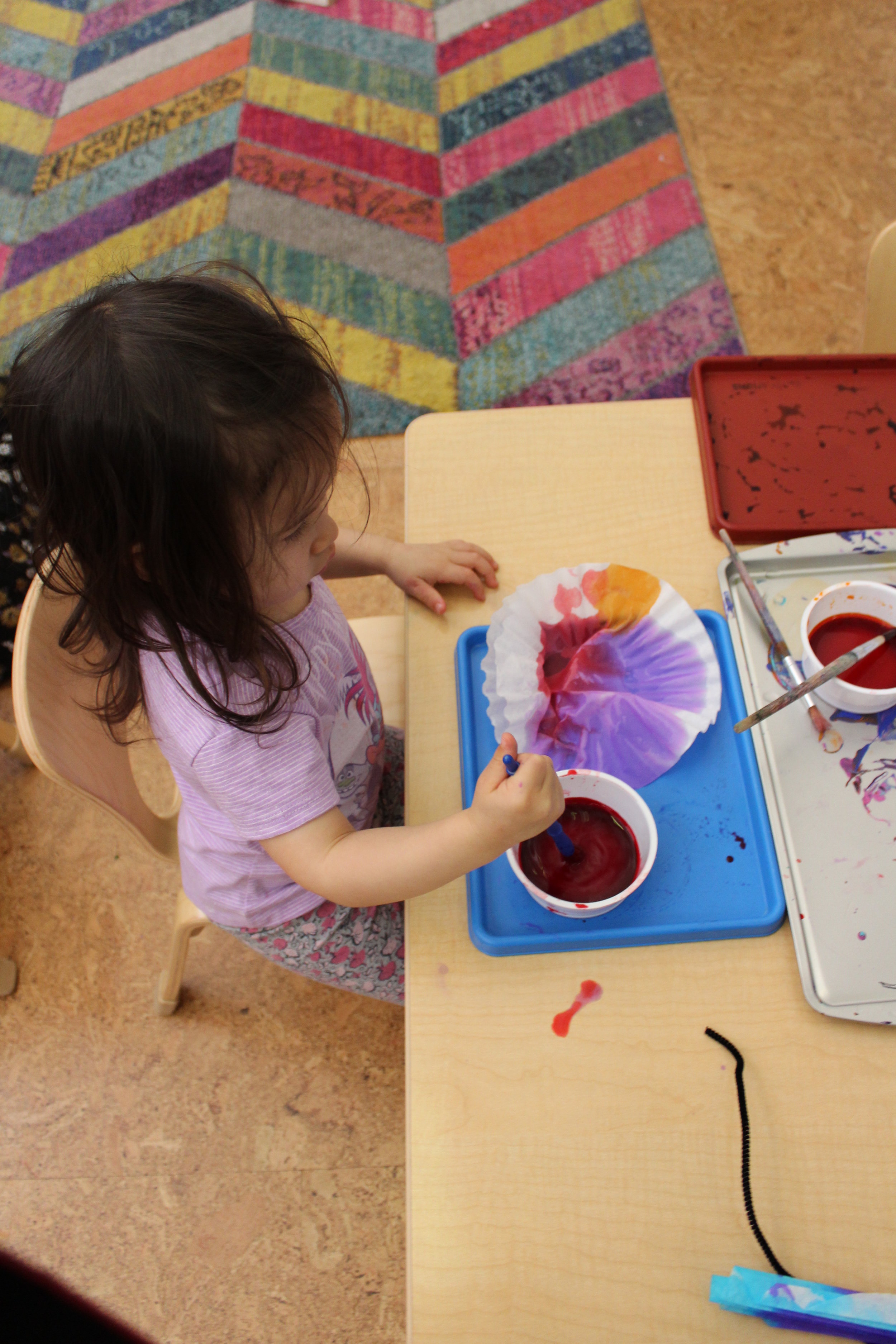
Creating butterflies using coffee filters.
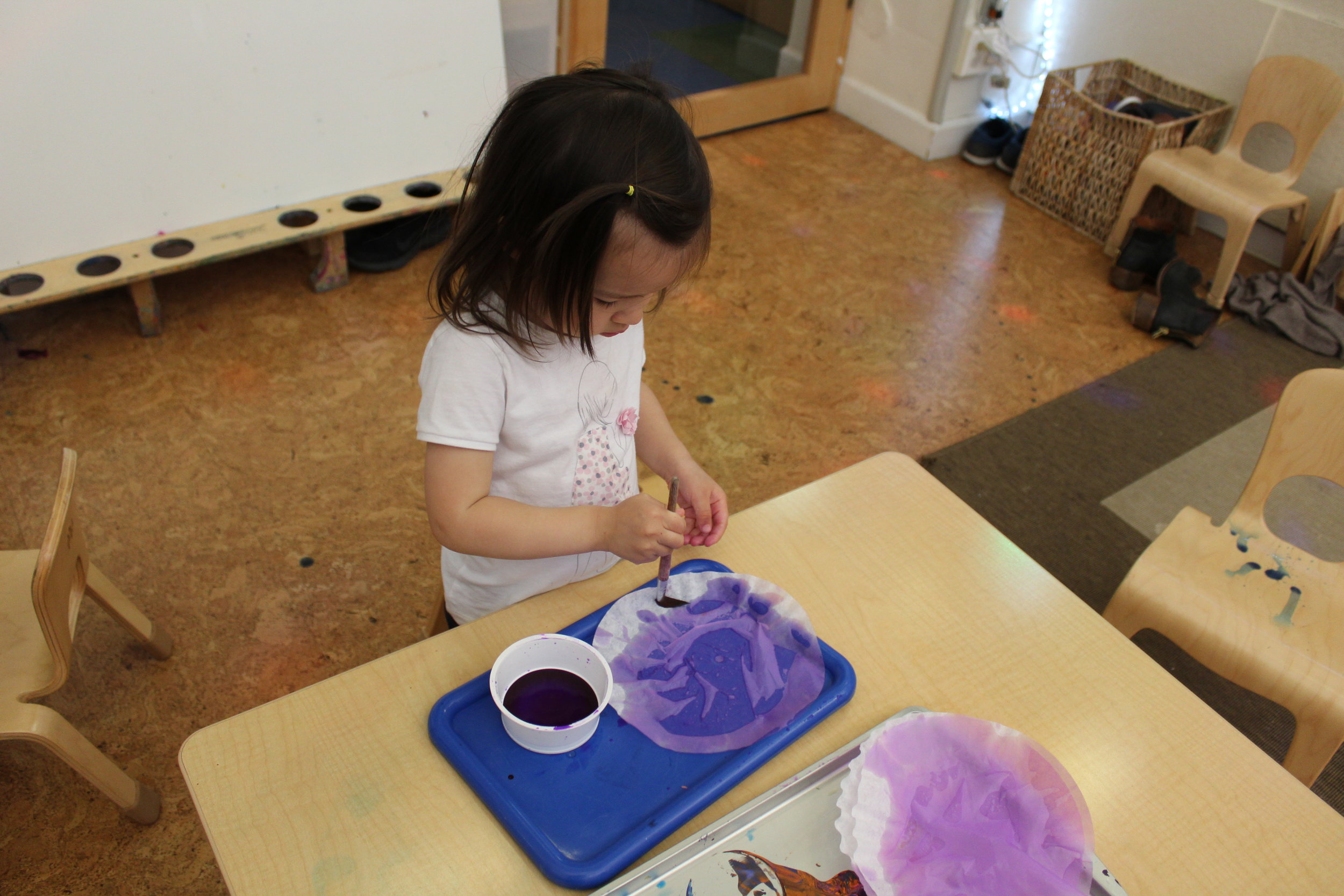
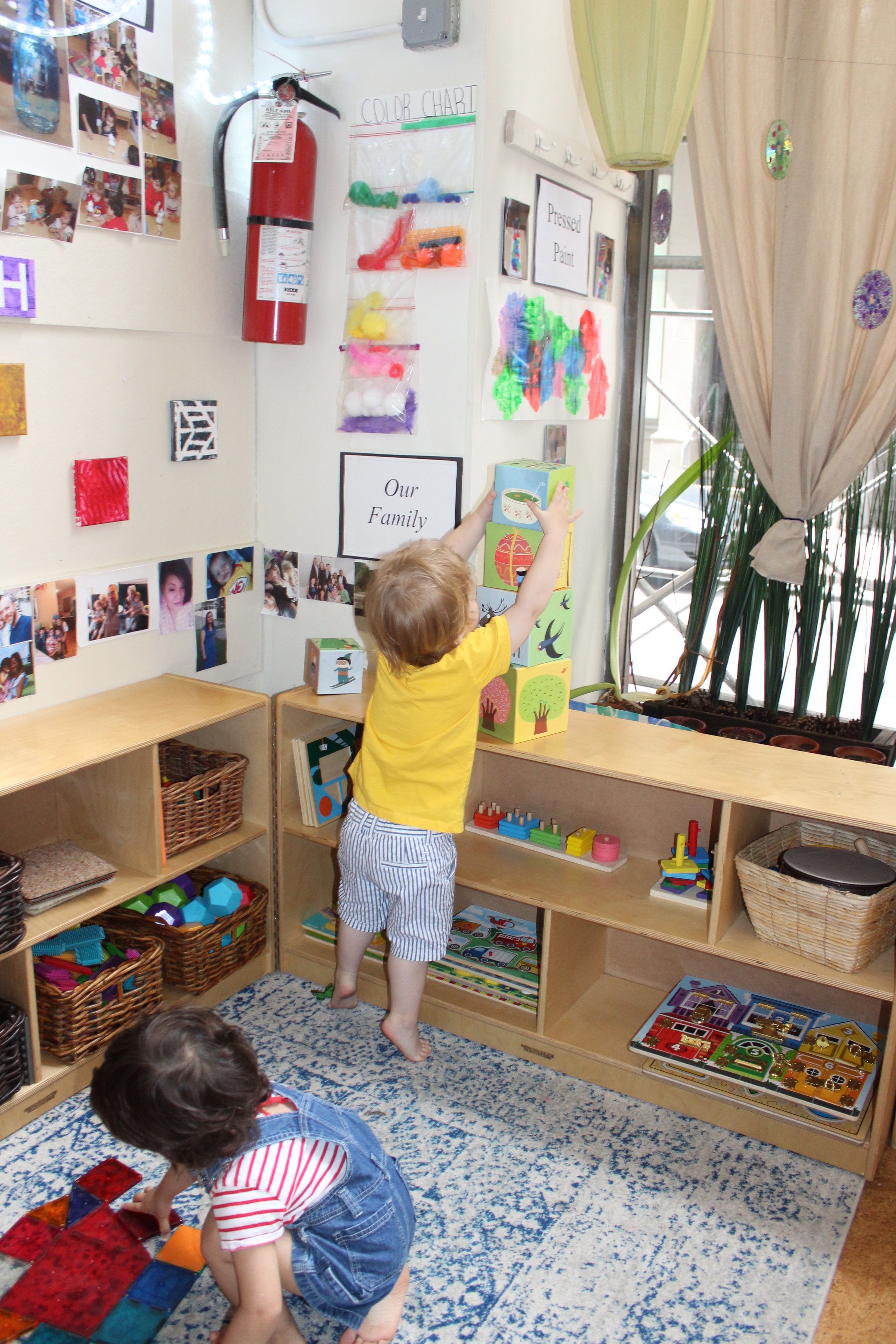
Stacking fosters different sizes to work on comparisons. Placing the smallest and the largest pieces next to each other is teaching big versus little. They also start working on the concept of sequencing, what comes next. Stacking/nesting also works on depth perception, hand-eye and coordination. As the children put each piece on top of the other, they have to gauge where to place each piece visually. They set the smallest piece on top of the biggest one first, as these two are the most visually different. Stacking enables children an opportunity to work on colors/matching, top/bottom, counting, etc.
